Motorola Mobility T6NF1 Portable Satellite Transceiver User Manual Exhibit 8
Motorola Mobility LLC Portable Satellite Transceiver Exhibit 8
Contents
- 1. Motorola Exhibit 8 Users Manual
- 2. External antenna supplement response to 9851
Motorola Exhibit 8 Users Manual

APPLICANT: MOTOROLA, INC. FCC ID: IHDT6NF1
Exhibit 8
INSTRUCTION MANUAL
The following is a preliminary draft copy of the instruction manual.

Welcome
The future of global telecommunications is here—a satellite telephone,
providing you with communication all over the world.
The company that brought you the world’s first commercially available
cellular phone has done it again! Motorola proudly introduces its
Satellite Series 9505 Portable Phone for the Iridium
®
system.
All Motorola wireless phones are designed and manufactured to meet
Motorola’s exacting specifications and world-class quality standards.
During development, our laboratory testing team took the durable
phone through rigorous durability tests including temperature, humidity,
shock, dust, vibration, and drop tests—and it still worked! We are
confident that the phone you purchased meets your own exacting
standards.
Thank you for choosing Motorola, a global leader in communications
technology.
Enjoy your new Satellite Series 9505 Portable Phone!
ii

iii
Contents
Safety Information
. . . . . . . . . . . . . . . . . . . . . . . . .7
Overview
. . . . . . . . . . . . . . . . . . . . . . . . . . . . . . .11
Guide Overview. . . . . . . . . . . . . . . . . . . . . . . . .12
Phone Overview . . . . . . . . . . . . . . . . . . . . . . . .15
Indicators. . . . . . . . . . . . . . . . . . . . . . . . . . . . . .18
Original Satellite Series Accessories. . . . . . . . .21
Getting Started
. . . . . . . . . . . . . . . . . . . . . . . . . .27
Attaching the Satellite Antenna . . . . . . . . . . . . .28
What Is a SIM Chip? . . . . . . . . . . . . . . . . . . . . .29
Installing the SIM Chip . . . . . . . . . . . . . . . . . . .30
Removing the Battery Cover . . . . . . . . . . . . . . .31
Installing the Battery . . . . . . . . . . . . . . . . . . . . .32
Charging the Battery . . . . . . . . . . . . . . . . . . . . .36
Checking the Battery. . . . . . . . . . . . . . . . . . . . .38
Battery Information . . . . . . . . . . . . . . . . . . . . . .40
Installing the Cellular Cassette . . . . . . . . . . . . .41
Using Your Phone
. . . . . . . . . . . . . . . . . . . . . . . .43
Using Your Phone Feature Overview. . . . . . . . .44
Powering Up the Phone. . . . . . . . . . . . . . . . . . .45
Holding the Phone. . . . . . . . . . . . . . . . . . . . . . .48
Placing a Call . . . . . . . . . . . . . . . . . . . . . . . . . .49
Ending a Call. . . . . . . . . . . . . . . . . . . . . . . . . . .53
What’s My SIM Chip Phone Number? . . . . . . . .54
Receiving a Call . . . . . . . . . . . . . . . . . . . . . . . .55
Adjusting Earpiece Volume . . . . . . . . . . . . . . . .58
Adjusting Ringer Volume. . . . . . . . . . . . . . . . . .59
Using In-Call Features
. . . . . . . . . . . . . . . . . . . .61
In-Call Feature Overview. . . . . . . . . . . . . . . . . .62
+ Muting a Call . . . . . . . . . . . . . . . . . . . . . . . . .63
Using Call Waiting . . . . . . . . . . . . . . . . . . . . . . .64
Placing a Call on Hold. . . . . . . . . . . . . . . . . . . .66
r Sending a Flash . . . . . . . . . . . . . . . . . . . . . . .68
Using the Menus
. . . . . . . . . . . . . . . . . . . . . . . . .69
Using the Options Menus . . . . . . . . . . . . . . . . .70
+ Using the Quick Access Menu . . . . . . . . . . .72

iv
Using The In-Call Menu . . . . . . . . . . . . . . . . . . 74
Managing the Phone Book
. . . . . . . . . . . . . . . . 75
Entering the Phone Book Menu . . . . . . . . . . . . 76
What’s on the Phone Book Menu? . . . . . . . . . . 77
Organizing Your Phone Book . . . . . . . . . . . . . . 79
Storing Names and Numbers. . . . . . . . . . . . . . 81
Entering Names . . . . . . . . . . . . . . . . . . . . . . . . 83
Using Pauses in Numbers . . . . . . . . . . . . . . . . 85
+ Using Phone Number Prefixes . . . . . . . . . . . 87
Locating Entries . . . . . . . . . . . . . . . . . . . . . . . . 88
Calling, Modifying, or Erasing an Entry . . . . . . 90
+ Checking Phone Book Capacity . . . . . . . . . . 91
+ Preventing Access to the Phone Book . . . . . 92
+ Restricting Phone Use. . . . . . . . . . . . . . . . . . 93
Viewing the Last Ten Numbers Dialed . . . . . . . 98
Viewing and Modifying Your Phone Numbers . 99
+ Using One-Touch Dialing . . . . . . . . . . . . . . 101
Viewing Service Dialing Numbers . . . . . . . . . 102
Using Calling Features
. . . . . . . . . . . . . . . . . . 103
Entering the Call Related Features Menu. . . . 104
What’s on the Call Related Features Menu?. . 105
Forwarding Calls When Unavailable . . . . . . . 107
Forwarding All Your Calls . . . . . . . . . . . . . . . . 109
Using Detailed Call Forwarding . . . . . . . . . . . 111
Canceling All Forwarding . . . . . . . . . . . . . . . . 114
+ Showing the Battery Meter . . . . . . . . . . . . . 115
+ Showing Signal Strength. . . . . . . . . . . . . . . 116
+ Deactivating Pending Call Drop Signal. . . . 117
+ Activating Call Waiting . . . . . . . . . . . . . . . . 118
Restricting Calls with Call Barring . . . . . . . . . 119
Using Message Services
. . . . . . . . . . . . . . . . . 123
Entering the Messages Menu. . . . . . . . . . . . . 124
Messages Services Feature Overview . . . . . . 125
What’s on the Messages Menu?. . . . . . . . . . . 126
+
Checking Your Voicemail . . . . . . . . . . . . . . 128
+
Storing Your Voicemail Number . . . . . . . . . 129
Managing Your Messages . . . . . . . . . . . . . . . 130
Accessing Messages . . . . . . . . . . . . . . . . . . . 132
Customizing Phone Features
. . . . . . . . . . . . . 135
Entering the Phone Setup Menu. . . . . . . . . . . 136

v
Phone Setup Feature Overview. . . . . . . . . . . .137
What’s on the Phone Setup Menu? . . . . . . . . .138
Adjusting the Ringer Volume . . . . . . . . . . . . .140
+
Setting the Phone to Ring or Vibrate . . . . . .141
+ Setting the Ringer Tone . . . . . . . . . . . . . . . .142
+
Setting the Keypad Tones . . . . . . . . . . . . . .143
Locking and Unlocking Your Phone . . . . . . . .144
Protecting the SIM chip. . . . . . . . . . . . . . . . . .146
Managing Other Security Settings . . . . . . . . .148
+ Managing Time and Date Settings . . . . . . .150
+
Activating Extended Menus . . . . . . . . . . . .153
+ Selecting the Display Language . . . . . . . . .154
+ Managing Your Phone’s Settings . . . . . . . . .155
r Cellular Mode Settings . . . . . . . . . . . . . . . . .158
Accessing the Network
. . . . . . . . . . . . . . . . . . .163
Entering the Network Menu. . . . . . . . . . . . . . .164
Network Feature Overview . . . . . . . . . . . . . . .165
What’s on the Network Menu? . . . . . . . . . . . . .166
+ Registering With the Satellite Network. . . . .168
r Cellular Mode (GSM) Settings. . . . . . . . . . . .169
Selecting a Mode
. . . . . . . . . . . . . . . . . . . . . . . .173
Entering the Mode Selection Menu . . . . . . . . .174
Mode Selection Feature Overview . . . . . . . . .175
What’s on the Mode Selection Menu? . . . . . . .176
Selecting a Mode . . . . . . . . . . . . . . . . . . . . . .177
Selecting Satellite Mode . . . . . . . . . . . . . . . . .178
+ Timing Your Calls
. . . . . . . . . . . . . . . . . . . . . .181
Entering the Call Meters Menu . . . . . . . . . . . .182
Call Meters Feature Overview . . . . . . . . . . . . .183
What’s on the Call Meters Menu? . . . . . . . . . .184
+ Showing Call Timers . . . . . . . . . . . . . . . . . .185
+ Setting Audible Call Timers . . . . . . . . . . . . .187
+ Showing the In-Call Timer . . . . . . . . . . . . . .189
+ Show the Lifetime Timer. . . . . . . . . . . . . . . .190
+ Customizing the Menu System
. . . . . . . . . . .191
+ Personalizing the Options Menu . . . . . . . . .192
+
Personalizing the Quick Access Menu . . . .194
Menu Quick Reference
. . . . . . . . . . . . . . . . . . .195
Phone Book Menu . . . . . . . . . . . . . . . . . . . . . .196

vi
Call Related Features Menu . . . . . . . . . . . . . . 198
Messages Menu . . . . . . . . . . . . . . . . . . . . . . . 200
Phone Setup Menu . . . . . . . . . . . . . . . . . . . . . 202
Network Selection Menu. . . . . . . . . . . . . . . . . 204
Mode Selection and Call Meters Menus. . . . . 206
Troubleshooting
. . . . . . . . . . . . . . . . . . . . . . . 207
Glossary
. . . . . . . . . . . . . . . . . . . . . . . . . . . . . 211
Index
. . . . . . . . . . . . . . . . . . . . . . . . . . . . . . . . 215
Patent Information
. . . . . . . . . . . . . . . . . . . . . 229

7
Safety Information
Important:
Read this information before using your wireless mobile
phone.
Exposure to Radio Frequency Signals
Your wireless mobile telephone is a low power radio transmitter and
receiver. When it is ON, it receives and also sends out radio frequency
(RF) signals.
International agencies have set standards and recommendations for the
protection of public exposure to RF electromagnetic energy.
•
International Commission on Non-Ionizing Radiation Protection
(ICNIRP)1996
•
Verband Deutscher Elektrotechniker (VDE) DIN-0848
•
United States Federal Commission, Radio Frequency Exposure
Guidelines (1996)
•
National Radiological Protection Board of the United Kingdom,
GS 11,1988
•
American National Standards Institute (ANSI) IEEE. C95. 1-1992
•
National Council on Radiation Protection and Measurements
(NCRP). Report 86
•
Department of Health and Welfare Canada. Safety Code 6
These standards are based on extensive scientific review. For example,
over 120 scientists, engineers, and physicians from universities,
government health agencies, and industry reviewed the available body
of research to develop the updated ANSI standard.
The design of your phone complies with these standards when used as
described under “Phone Operation.”
Antenna Care
Use only the supplied or an approved replacement antenna.
Unauthorized antennas, modifications, or attachments could damage
the phone and may violate local agency regulations.
8
Safety Information
Phone Operation
NORMAL POSITION: Hold the phone as you would any other telephone.
Make sure the antenna is extended fully and rotated to either the left or
right detent. The antenna should be vertical to the ground and have a
clear view of the sky.
TIPS ON EFFICIENT OPERATION: For your phone to operate most
efficiently:
•
Extend and rotate your antenna fully.
•
Make sure the antenna has a clear view of the sky.
•
Do not touch the antenna unnecessarily when the phone is in use.
Contact with the antenna affects call quality and may cause the
phone to operate at a higher power level than otherwise needed.
Batteries
Caution:
All batteries can cause property damage, injury or burns if a
conductive material, such as jewelry, keys or beaded chains, touches
exposed terminals. The material may complete an electrical circuit and
become quite hot. To protect against such unwanted current drain,
exercise care in handling any charged battery, particularly when
placing it inside your pocket, purse or other container with metal
objects. When the battery is detached from the phone, your batteries
are packed with a protective battery cover; please use this cover for
storing your batteries when not in use.
Driving
Check the laws and regulations on the use of wireless telephones in the
areas where you drive. Always obey them. Observe the following
guidelines when using your phone while driving.
•
Give full attention to driving—driving safely is your first
responsibility.
•
Use hands-free phone operation, if available.
•
Pull off the road and park before making or answering a call if
driving conditions so require.
Electronic Devices
Most modern electronic equipment is shielded from RF signals.
However, certain equipment may not be shielded against the RF signals
from your wireless phone.
Safety Information
9
Pacemakers
The Health Industry Manufacturers Association recommends that a
minimum separation of six inches (6") be maintained between a
handheld wireless phone and a pacemaker to avoid potential
interference with the pacemaker. These recommendations are
consistent with the independent research by and recommendations of
Wireless Technology Research.
Persons with pacemakers:
•
should ALWAYS keep the phone more than six inches from their
pacemaker when the phone is turned ON
•
should not carry the phone in a breast pocket
•
should use the ear opposite the pacemaker to minimize the
potential for interference
•
should turn the phone OFF immediately if you have any reason to
suspect that interference is taking place
Hearing Aids
Some digital wireless phones may interfere with some hearing aids. In
the event of such interference, you may want to consult your hearing aid
manufacturer to discuss alternatives.
Other Medical Devices
If you use any other personal medical device, consult the manufacturer
of your device to determine if it is adequately shielded from external RF
energy. Your physician may be able to assist you in obtaining this
information.
Turn your phone OFF in health care facilities when any regulations
posted in these areas instruct you to do so. Hospitals or health care
facilities may be using equipment that could be sensitive to external RF
energy.
Vehicles
RF signals may affect improperly installed or inadequately shielded
electronic systems in motor vehicles. Check with the manufacturer or its
representative regarding your vehicle. You should also consult the
manufacturer of any equipment that has been added to your vehicle.
Posted Facilities
Turn your phone OFF in any facility where posted notices so require.
10
Safety Information
Aircraft
Airline regulations prohibit using your phone while in the air.
Switch OFF your phone before boarding an aircraft.
Blasting Areas
To avoid interfering with blasting operations, turn your phone OFF when
in a “blasting area” or in areas posted: “Turn off two-way radio.” Obey all
signs and instructions.
Potentially Explosive Atmospheres
Turn your phone OFF and do not remove your battery when you are in
any area with a potentially explosive atmosphere. Obey all signs and
instructions. Sparks from your battery in such areas could cause an
explosion or fire resulting in bodily injury or even death.
Areas with a potentially explosive atmosphere are often but not always
clearly marked. They include, but are not limited to: fueling areas such
as gasoline stations; below deck on boats; fuel or chemical transfer or
storage facilities; areas where fuel odors are present (for example, if a
gas/propane leak occurs in a car or home); areas where the air contains
chemicals or particles, such as grain, dust, or metal powders; and any
other area where you normally would be advised to turn off your vehicle
engine.
For Vehicles Equipped with an Air Bag
An air bag inflates with great force. Do NOT place objects, including
both installed or portable wireless equipment, in the area over the air
bag or in the air bag deployment area. If in-vehicle wireless equipment
is improperly installed and the air bag inflates, serious injury could
result.

11
Overview
This chapter provides an overview of your new satellite phone.
What You Will Learn
•overview of the user’s guide
•overview of the satellite phone
•overview of the phone’s indicators
•overview of original Satellite Series accessories

12 Overview
Guide Overview
Understanding the Guide
Modes
Throughout this guide there are features that apply
only to satellite mode and features that apply only
to cellular mode (when you have an optional
Cellular Cassette installed). For information on
switching modes, see “Selecting a Mode” on
page 173.
These conventions alert you to these features.
+ — This symbol next to a feature name indicates
that your phone must be in satellite mode to access
it.
r — This symbol next to a feature name indicates
that your phone must be in cellular mode to access
it.
In addition, look for the labels “
Satellite Mode
” or
“
Cellular Mode
” in the margins for information
related to each mode.
Key Presses
Key presses are represented in this guide using
symbols so that you may locate and use the
required sequence quickly. A sequence of key
presses may be shown as follows:
M, O, C
This means you should press M followed by O
and then C, in sequence, not simultaneously.
Prompts and Messages
Your phone responds to key presses by displaying
either a prompt that guides you to the next action or
a message confirming that your action is complete.
Prompts and messages are represented in this
guide in LCD style, for example: Enter PIN or
Completed.
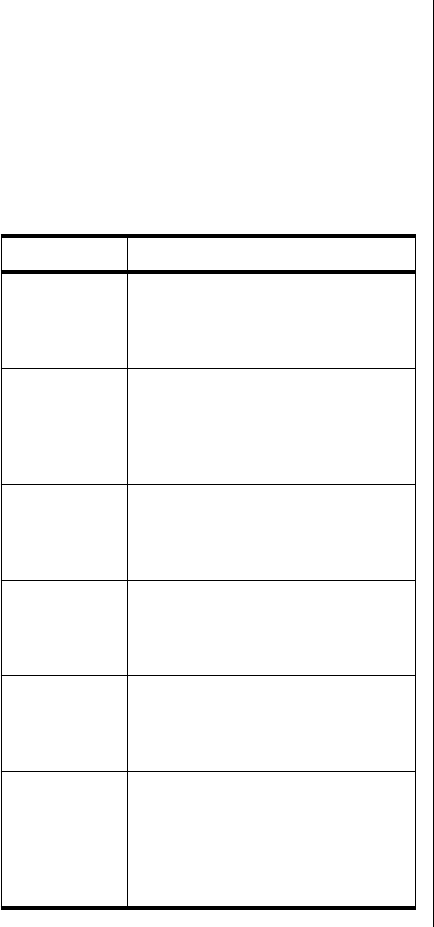
Guide Overview 13
Tips
In the margins of your guide are useful hints and
ways to improve your phone’s performance.
What’s in the Guide
As you explore your 9505 Portable Phone, use this
guide to see what key to press and what happens
when you press it. Here is what you will learn in
each chapter:
Chapter Description
Getting Started
In this chapter, you will learn how to
install and charge your battery. See
“Getting Started” on page 27 for
more information.
Using Your
Phone
How do you make your first phone
call? This question and many others
are answered in this chapter. See
“Using Your Phone” on page 43 for
more information.
Using the
Menus
This chapter teaches you how to
navigate the menu system. See
“Using the Menus” on page 69 for
more information.
Managing the
Phone Book
See “Managing the Phone Book” on
page 75 to learn how to make the
most of your phone’s built-in Phone
Book.
Using Calling
Features
If you subscribe to Call Barring or Call
Forwarding, see “Using Calling
Features” on page 103 to learn how to
use these network features and more.
Using
Messaging
Services
Did you know that you can be notified
of voicemail or receive numeric and
text messages through your Personal
Mailbox? See “Using Message
Services” on page 123 for more
information.

14 Overview
Customizing
Phone Features
See “Customizing Phone Features”
on page 135 to learn how to
customize your phone’s features.
Accessing the
Network
See “Accessing the Network” on
page 163 to learn how to register with
the satellite network.
Switching
Modes
If you have a Cellular Cassette
installed in your Portable phone, you
can switch between cellular mode and
satellite mode. See “Selecting a
Mode” on page 173 for more
information.
+ Timing Your
Calls
View the time of your last call or set
your phone to remind you after you
have been talking for a certain period
of time. See “+ Timing Your Calls” on
page 181 for more information.
+ Customizing
the Menu
System
Once you are familiar with the
features in your menus, you can
customize the menus to more closely
fit your needs. See “+ Customizing
the Menu System” on page 191 for
more information.
Chapter Description
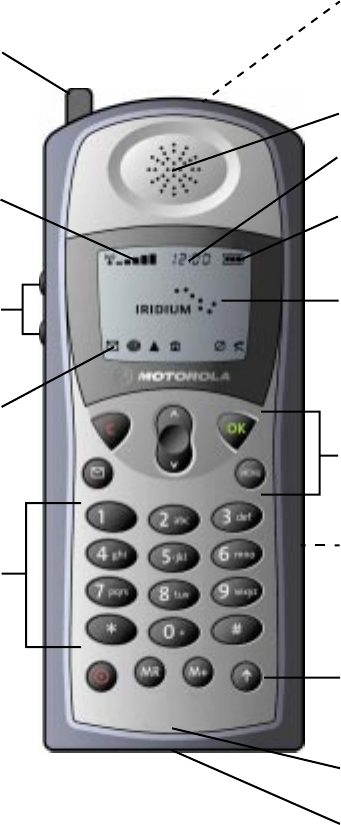
Phone Overview 15
Phone Overview
Display
Indicators
Cellular
Cassette
Antenna
Volume Keys
Signal Strength
Indicator
Alphanumeric
Keypad
Earpiece
Real-Time
Clock
Battery Level
Indicator
Display
Battery
Compartment/
Cellular
Cassette
Connector
Special Keys
Special Keys
Microphone
Accessory
Connector Port
Satellite
Antenna

16 Overview
Special Keys
Volume Keys
The Volume keys are on the side of the phone. They
adjust earpiece and ringer volume. See “Adjusting
Earpiece Volume” on page 58 for more information.
Satellite Antenna
When you are in satellite mode, to answer calls,
make calls, and access satellite services, make
sure the antenna is rotated up to either the left or
right detente and fully extended. You can receive
calls without extending and rotating the antenna,
but you must do so to answer the call. Remember,
the antenna must have a clear view of the sky.
When you are in cellular mode you do not need to
extend or rotate the satellite antenna.
Key Function
S Turns the phone’s power on and off
O Selects menu settings or options, or initiates
and answers calls
? Calls voicemail and displays messages
I Stores numbers in the phone book
Q Recalls numbers from the phone book
E Enters the Quick Access menu
M Enters the Options menu and scrolls forward
through menu features
C Clears characters from the screen or exits the
Options menu
< Scrolls through the menu features

Phone Overview 17
Satellite Antenna Lock Release Button
This button is located on the top of the phone.
When you push this button, it releases the antenna
so you can attach the Auxiliary Antenna. You may
also want to remove the antenna if you spend a lot
of time in cellular mode.
Cellular Cassette Connector
Insert an optional Cellular Cassette onto the back of
the phone. The Cellular Cassette connector is
located underneath the battery compartment cover
next to the battery. The Cellular Cassette interfaces
with your 9505 Portable Phone so that you can use
it on the local cellular network.
Display
Your phone’s Liquid Crystal
Display (LCD) displays as
many as four rows of 16
characters.
The LCD on your phone may respond slowly to key
presses in extremely cold temperatures. This is
normal and does not affect the phone operation in
any way.
Accessory Connector
This connector, located on the bottom of the phone,
provides the connection for an external power
supply.
ABC123

18 Overview
Indicators
Current State of Service Indicator
The current state of service indicator is located at
the top of your phone. This LED status indicator
provides information on your phone’s current state
of service depending on your current mode.
If the LED is... Then in satellite
mode...
Then in cellular
mode...
Alternating
red and green A call is incoming. A call is
incoming.
Flashing
green
You are receiving a
signal from the
Iridium satellite
network. You can
place and receive
calls.
You are receiving
a signal from the
cellular network.
You can place
and receive calls.
Flashing
yellow
Your phone was not
successful in
registering with the
satellite network
and cannot receive
incoming calls. Try
again in a few
minutes.
You are roaming.
Flashing
yellow and red
Your SIM chip may
be inserted
incorrectly, may not
be inserted, or you
may be in a
restricted area.
You will not see
this indicator in
cellular mode.
Flashing red Service is not
available.
This means that
service is not
available, your
SIM chip is
inserted
incorrectly or not
at all, or you may
be in a restricted
area.
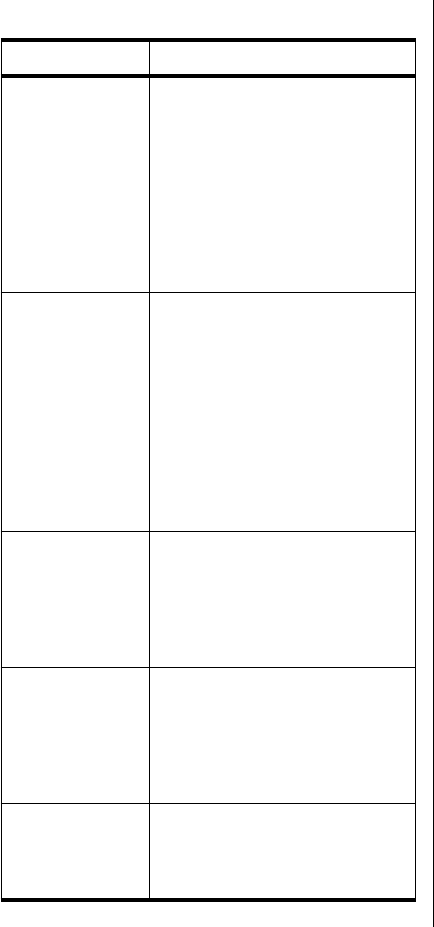
Indicators 19
Display Indicators
Indicator Description
rx
Signal Strength Indicator
indicates the strength of the signal
from the network. The signal
strength indicator appears
continuously in the top left hand
corner of the display. The more
segments displayed in the bar
graph, the stronger the signal. Five
bars indicate full signal strength.
No bars indicate a weak signal.
q
Battery Charge Indicator
indicates the strength of the
battery charge. The more
segments displayed, the greater
the battery charge.
When you are in satellite mode,
you can also check the strength of
the charge at any time through the
menu. See “+ Showing the Battery
Meter” on page 115 for more
information.
12:00
Real Time Clock Indicator
displays the time in either 12-hour
or 24-hour format when you are in
satellite mode. See “+ Change the
Time Displayed” on page 151 for
more information.
o
Message Indicator appears when
you receive a new message. It
flashes when the SIM chip is full.
See “Accessing Messages” on
page 132 for additional
information.
+
Satellite Mode Indicator appears
when your phone is in satellite
mode. See “Selecting a Mode” on
page 173 for more information.
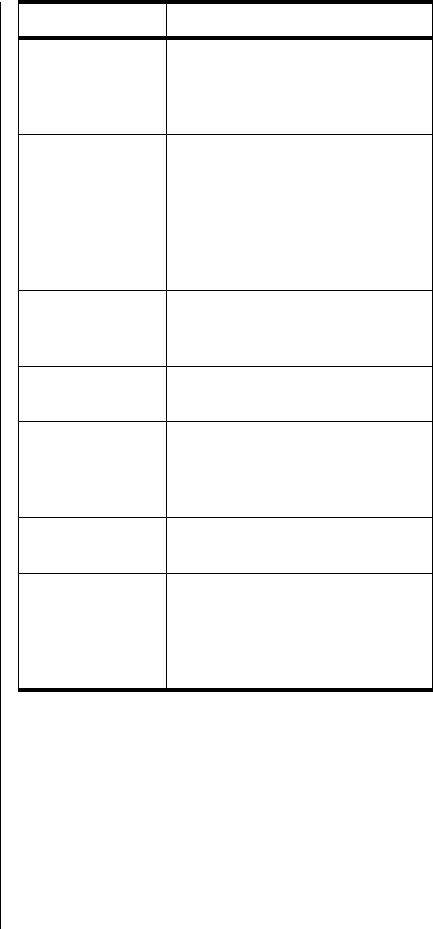
20 Overview
n
Home System Indicator appears
when the phone has successfully
registered with the Iridium satellite
system.
l
Roam Indicator appears when
you are roaming on a cellular
system (when you have the
appropriate Cellular Cassette
inserted). This indicator does not
appear when the phone is in
satellite mode.
m
No Service Indicator appears
when your phone is not capable of
placing or receiving calls.
k In Use Indicator appears when a
call is in progress.
s
Scroll Bar appears on the right of
the display when you are in a
menu. The button on the scroll bar
indicates where you are in the list.
z Check Mark indicates a menu item
is currently selected.
B...P
Quick Access Menu Icons allow
you to easily identify Quick Access
features as you scroll through the
Quick Access menu when you are
in satellite mode.
Indicator Description
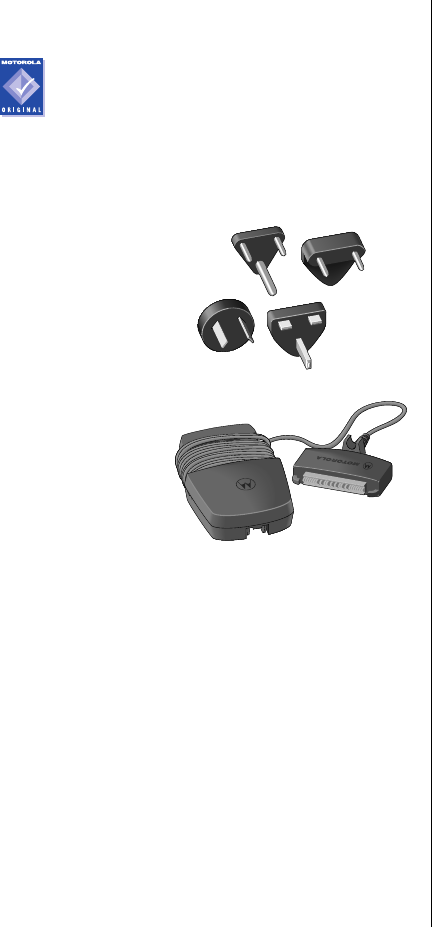
Original Satellite Series Accessories 21
Original Satellite Series Accessories
Product appearance and specifications are subject
to change without notice.
Note: For maximum performance use only
Motorola original accessories.
AC Travel Charger with International
Plug Kit
The AC Travel
Charger with
International Plug
Kit provides rapid
charge for optimal
performance and
can be used to
power the phone
when the battery is
depleted.
•Includes four
international
plug
adapters for
use in
Europe,
Australia, India, and the United Kingdom
•May be used with both 9505 Portable Phone
and Desktop Charger
•Allows use of 9505 Portable Phone while
recharging the battery
•Convenient self-storing cord
•Charges StarTAC™ wireless phone when
used with optional StarTAC Adapter

22 Overview
Desktop Charger
The versatile,
user-friendly
Desktop Charger
features two charger
pockets to provide
multiple rapid
charging options.
•Front pocket charges 9505 Portable Phone or
StarTAC wireless phone with batteries
attached (with included plastic insert)
•Back pocket charges any Motorola Satellite
Series or StarTAC wireless phone battery
•Rapid 3-hour charge time for standard
battery
•At-a-glance LED indicator lights show current
charging status for each charging pocket
•Requires AC Travel Charger or Auto
Accessory Adapter
Solar Charger
Efficient, easy-to-use
Solar Charger helps
keep you in
communication even in
remote areas or
locations with limited,
erratic, or no power
service.
•Uses solar power to recharge batteries or
extend talk time
•Convenient, built-in stand allows angle
adjustment
•Easy-to-read LCD metering system indicates
optimal positioning of charging module for
best performance

Original Satellite Series Accessories 23
•Controller provides proper voltage by
regulating energy flow between Solar
Charger and phone
•Convenient, self-storing cable connector
Auto Accessory Adapter
Restores full battery
power for 9505
Portable Phone
operation or Desktop
Charger functions from
any operating vehicle
(using standard 12-volt
accessory port).
•Make and
receive phone calls using the Auto
Accessory Adapter for direct power when
batteries are depleted
•Recharge battery while using Desktop
Charger or attached to 9505 Portable Phone
•Charges StarTAC wireless phone with
optional StarTAC Adapter

24 Overview
Batteries
Standard Capacity Lithium Ion Battery
High Capacity Lithium Ion Battery
Ultra High Capacity Lithium Ion Battery
* All talk and standby times are approximate and depend on
network configuration, signal strength and the features
selected.
StarTAC Adapter
Extend your
communication options
using the StarTAC
Adapter to charge
StarTAC wireless phones
via the Auto Accessory
Adapter or the AC Travel
Adapter.
•Provides up to 2 hours of talk
time or 16 hours of standby
time*
•Weighs 2.3 ounces/66 grams
•Provides up to 3.2 hours of
talk time or 24 hours of
standby time*
•Weighs 3.4 ounces/98 grams
•Provides up to 5.5 hours of
talk time or 48 hours of
standby time*
•Weighs 7 ounces/200 grams

Original Satellite Series Accessories 25
Portable Auxiliary Antenna
From one car to
another, this compact
pocket-sized antenna
with convenient
magnetic mount goes in
every vehicle you do to
provide improved
reception.
•use with the 9505 Portable Phone
•reliable magnetic mount, ceramic patch
antenna
•attached 1.5-meter cable
Antenna Adapter
This adapter provides the required
external antenna connection to use
your 9505 Portable Phone with the
Portable Auxiliary Antenna.
Carry Accessories
Lanyard Wrist Strap
The lanyard wrist strap is
made of nylon. It provides
a convenient way to carry
your phone.

26 Overview
Cellular Cassettes
Cellular Cassettes are
modules that attach to
the 9505 Portable
Phone and provide
support for various
terrestrial or
land-based cellular
systems. With an
attached Cellular
Cassette, you can
make and receive calls
in various cellular
modes, assuming service subscription and
coverage are available.
Cellular Cassettes create an innovative blend of
cellular and satellite technology in one phone.
•When attached to the back of the 9505
Portable Phone, Cellular Cassettes enable
dual mode satellite and cellular operation.
•Cellular Cassettes are designed to give you
one flexible product that enables
communication compatibility in areas that
support cellular service in conjunction with
satellite service.
•Cellular Cassettes enable flexible usage of
cellular technologies and provide call
delivery compatibility in areas that support
cellular service.

27
Getting Started
Getting started with your new satellite phone is easy. Just charge your
new batteries and insert your phone’s SIM (Subscriber Identity Module)
card. This chapter tells you how.
What You Will Learn
•attaching the antenna
•installing and charging your battery
•installing and using your SIM chip
•installing your optional Cellular Cassette
Note: If you see a + next to a feature, the phone must be in satellite
mode. If you see a r next to a feature, the phone must be in cellular
mode. See “Selecting a Mode” on page 173 to change modes.

28 Getting Started
Attaching the Satellite Antenna
Attach the Antenna
1. Attach the antenna in the down position.
2. Press and hold the button at the top of the
phone.
3. Push the antenna until it clicks into place
and release the button.
Remove the Antenna
You may want to remove the satellite antenna to
attach an auxiliary antenna, place the Portable
phone in the 9570 Portable Dock, or if you spend
the majority of your time in cellular mode.
1. Remove the antenna in the down position.
2. Press in the button at the top of the phone.
3. Remove the antenna.
2.
3.
2. 3.

What Is a SIM Chip? 29
What Is a SIM Chip?
Your SIM (Subscriber Identity Module) chip is a
small smart card that contains your phone number,
service details, and memory for storing Phone Book
entries and messages. This means you can use
your SIM chip with any phone for the GSM system
or any Motorola product for the Iridium satellite
system, and all calls go on your account.
Note: Your phone has limited functionality without
the SIM chip.
GSM SIM Chip Capability
If you already have a GSM SIM chip and your
service provider has a roaming agreement with the
Iridium satellite system, you can use it in your
satellite telephone. You need an optional Cellular
Cassette to access your local cellular/PCS service.
Note: If you are using a GSM SIM chip, you may not
have access to certain features that are specific to
the Iridium satellite system, and vice versa.
SIM Chip Protection
Keep your SIM chip in your wallet or purse when
you’re not using it. This helps keep your personal
information secure and gives you access to your
service even if your phone is not available. If you
forget your phone, insert your SIM chip into a
friend’s phone to access your personal service.
Caution: Avoid bending, scratching, or exposing
your card to static electricity, water, or dirt.

30 Getting Started
Installing the SIM Chip
Make sure your phone is powered off before
inserting or removing the SIM chip. If you don’t, you
may damage the memory on your SIM chip.
Insert the SIM Chip
Tip:
(TEXT TO
BE WRITTEN!)
Remove the SIM Chip
(Text to
be written!)
(Text to
be written!)

Removing the Battery Cover 31
Removing the Battery Cover
Your new batteries are shipped uncharged and
fitted with protective covers.
Save the covers for storing and carrying unused
batteries. The covers prevent metal objects from
contacting both battery terminals, reducing the risk
of injury, or damage from a battery short circuit.
Remove the Battery Safety Cover
1. Press in the release latch.
2. Continue pushing in and upwards until the
battery slips free from its cover.
Attach the Battery Safety Cover
1. Lower the side opposite the latch into the
cover.
2. Slip the side with the release latch down
until it clicks.
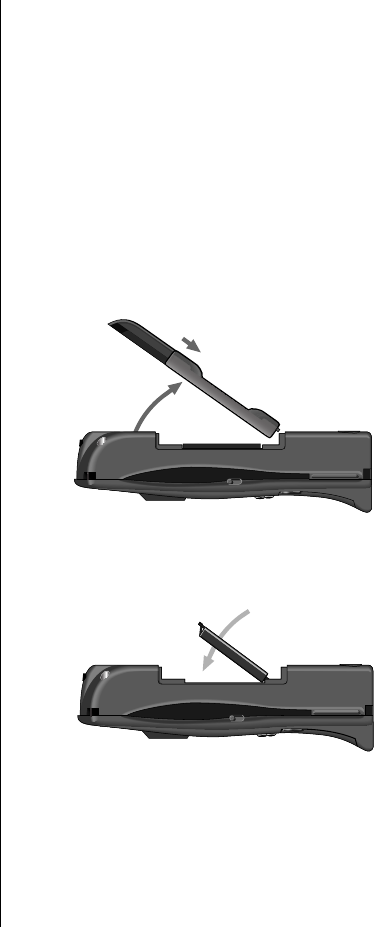
32 Getting Started
Installing the Battery
Insert the Battery
Keep in Mind: Insert only Motorola-approved
batteries in your phone. If you insert an unapproved
battery you will see Invalid Batt. You are able to
discharge the battery, but you cannot recharge it.
1. Remove or rotate the satellite antenna
before installing the battery. (See “Attaching
the Satellite Antenna” on page 28.)
Tip:
The
battery
compartment is
located on the
back of the
phone.
2. Press and hold the release latch at the top
of the battery compartment cover.
3. Pull the cover upward, and then remove it
from the phone.
4. Insert the battery, bottom-end first, into the
compartment, and then press the battery
downward until it clicks into place.
2.
3.
4.
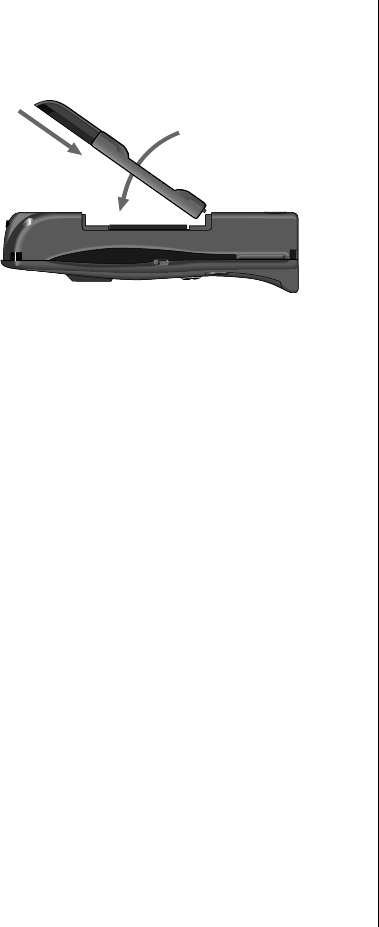
Installing the Battery 33
5. Insert the bottom end of the compartment
cover into the slots at the end of the
compartment.
6. Snap the cover down into place.
If you have an optional Cellular Cassette, go to
“Installing the Cellular Cassette” on page 41.
5. 6.
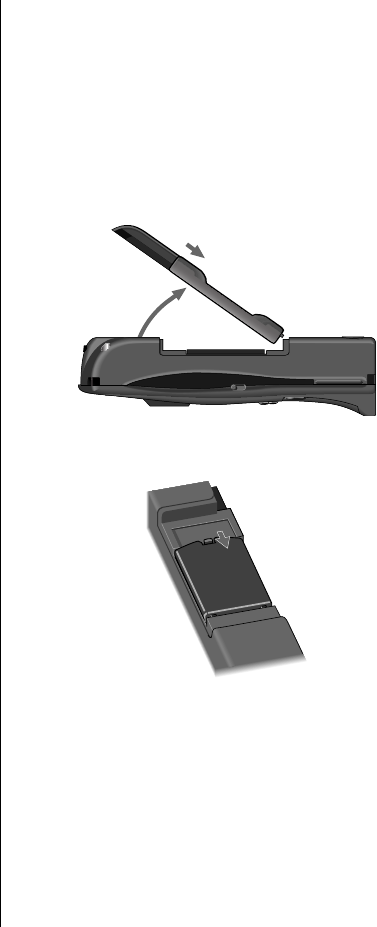
34 Getting Started
Remove the Battery
1. Remove or rotate the satellite antenna
before removing the battery. (See “Attaching
the Satellite Antenna” on page 28.)
Tip:
The
battery
compartment is
located on the
back of the
phone.
2. Press and hold the release latch at the top
of the battery compartment cover.
3. Pull the cover upward, and then remove it
from the phone.
4. Press and hold the release latch at the top
of the battery.
2.
3.
4.
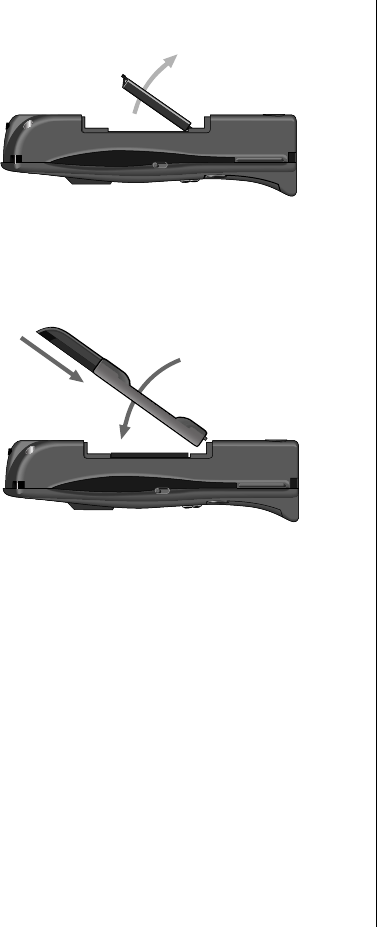
Installing the Battery 35
5. Pull the battery upward and out of the
phone.
6. Insert the bottom end of the battery
compartment cover into the slots at the end
of the compartment.
7. Snap the cover down into place.
8. Replace the battery cover. See “Attach the
Battery Safety Cover” on page 31 for more
information.
5.
6. 7.

36 Getting Started
Charging the Battery
Any battery that hasn’t been used for a month or
more—including new batteries—should be
charged for about 3–4 hours before use.
Using the Desktop Charger
You can use the front pocket of the Desktop
Charger to charge a battery attached to a phone.
You can also charge a spare battery in the rear
pocket. The front pocket charges first, then the
charger switches to the rear pocket.
To charge:
1. Connect the Travel Charger to the Desktop
Charger.
2. Plug the Travel Charger into the appropriate
power source.
3. Insert your phone with a battery attached.
4. Insert a spare battery in the rear pocket, if
desired.
Using the Internal Charger
A battery charger is built right into your phone.
Using either the Travel Charger or Auto Accessory
Adapter, you can plug the handset directly into a
power source to charge the attached battery.
(Illustration to
be created!)

Charging the Battery 37
1. Connect the Travel Charger or Auto
Accessory Adapter to the phone.
2. Plug the Travel Charger or Auto Accessory
Adapter into the appropriate power source.
The phone beeps, flashes the q indicator,
and displays Charging Battery:
3. If the phone is powered on, press S twice
to place the phone in charge-only mode.
If the phone is powered off, it automatically
enters charge-only mode.
Keep in Mind: You can still place and answer calls
while using the internal charger. If you wish to place
or answer a call:
Press S to exit charge-only mode and
return to normal operation.
Remember that talking on the phone uses
power, so charging takes more time.
(Illustration to
be created!)
Charging
Battery

38 Getting Started
Checking the Battery
Low Battery Warning
When the battery level is low and only a few
minutes of talk-time remains, your phone signals
you in two ways:
•Low Battery appears on the display.
•A warning tone (two double beeps) sounds.
Keep in Mind: To help maintain the best battery
and phone performance, recharge your battery as
soon as possible after you receive the low battery
warning.
+
Check Battery Power Status
Satellite
Mode
To check your phone’s power status:
1. Press M, and then press < to scroll to
Call Related Features.
2. Press O to select.
3. Press < to scroll to Show Battery Meter, and
then press O to select.
You will see the battery charge level:
The display shows a fuel gauge. The more
segments filled, the greater your battery’s
charge.
Battery
Quit?
Battery
Quit?
Low Charge High Charge

Checking the Battery 39
One of the following messages may also appear:
4. Press and hold C to exit.
Cellular
Mode
You can only view the detailed battery meter while
you are in satellite mode.
Message Description
Not
Available
The battery meter doesn’t appear
because a battery is not installed;
the phone is operating from external
power.
Charging
Battery
The battery is being charged. The
q indicator flashes.
Fast Charge
Completed
The battery has completed charging.
The q indicator stops flashing.
Invalid Batt.
You have an unapproved battery
inserted in your phone. You are able
to discharge the battery, but you
cannot recharge it.

40 Getting Started
Battery Information
Maximizing Battery Life
Caution: To prevent injuries or burns, do not allow
metal objects to contact or short circuit the battery
terminals.
To ensure maximum battery life and use your
battery to its fullest capacity, observe the following
guidelines.
•Always use Motorola-approved battery
chargers.
•Always use Motorola-approved batteries
(Standard, High Capacity, Ultra High
Capacity battery).
•Maintain the battery at or near room
temperature when charging.
•When you don’t plan on using a particular
battery for a while, store the battery
uncharged in a cool, dark, and dry place.
•To prolong the life of your batteries, avoid
exposing them to temperatures below -30°C
(-22°F) or above 60°C (140°F).
•Always take your phone with you when you
leave your car.
•Use either the Standard or High Capacity
battery when the Cellular Cassette is
installed; the Ultra High Capacity battery
does not fit when the Cellular Cassette is
installed.
Disposing of Batteries
To dispose of batteries, check with your local
recycling center for a battery recycler near you.
Never dispose of batteries in fire.
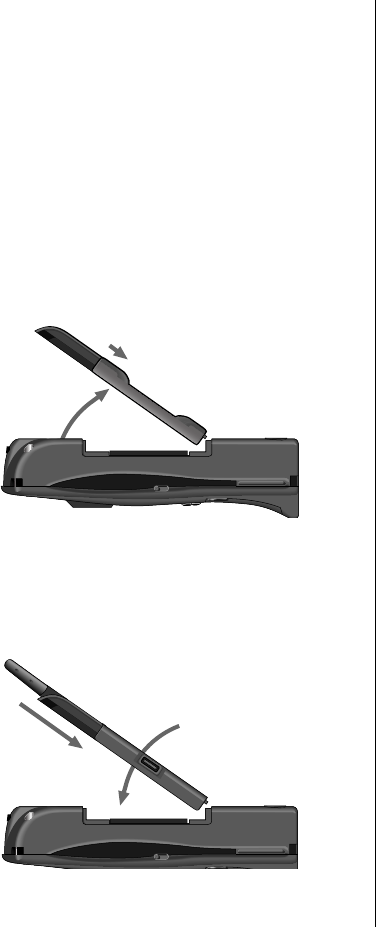
Installing the Cellular Cassette 41
Installing the Cellular Cassette
Insert the Cellular Cassette
A Cellular Cassette is an optional module that
attaches to your satellite phone to allow it to work
with land-based cellular systems.
Tip:
The phone
switches
between
satellite mode
and cellular
mode based
on your
preferences.
See “Selecting
a Mode” on
page 173.
1. Remove or rotate the satellite antenna
before installing the Cellular Cassette. (See
“Attaching the Satellite Antenna” on
page 28.)
2. Press and hold the release latch at the top
of the battery compartment cover.
3. Pull the cover upward, and then remove it
from the phone.
4. Insert the cellular cassette, bottom-end
first, into the compartment on top of the
battery.
Tip:
You
cannot use the
Ultra High
Capacity
battery when
the Cellular
Cassette is
installed.
5. Press the cassette downward until it clicks
into place.
6. Save the battery compartment cover for
future use.
2.
3.
4.
5.
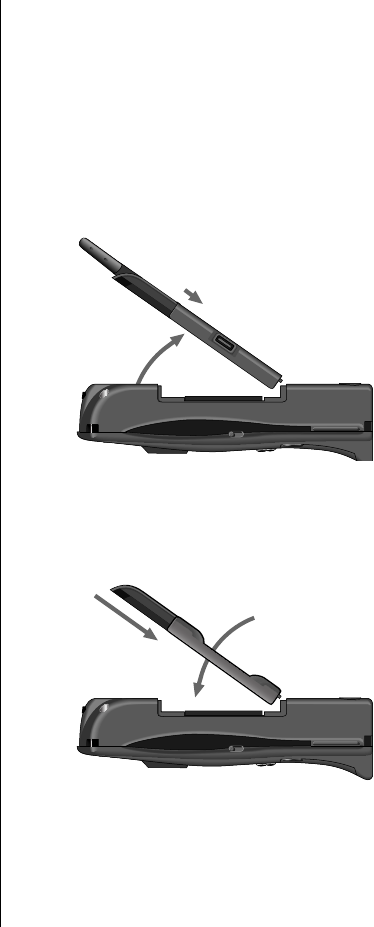
42 Getting Started
Remove the Cellular Cassette
1. Remove or rotate the satellite antenna
before removing the Cellular Cassette. (See
“Attaching the Satellite Antenna” on
page 28.)
2. Press and hold the release latch at the top
of the cellular cassette.
3. Pull the cassette upward, and then remove
it from the phone.
4. Insert the bottom end of the battery
compartment cover into the slots at the end
of the compartment.
5. Snap the cover down into place.
If your phone was powered on when you
removed your Cellular Cassette, you will see
Cassette Removed in your display for a few
moments.
2.
3.
4. 5.

43
Using Your Phone
Read this section to learn how to get up and running with your new
satellite phone.
What You Will Learn
•turning the phone’s power on and off
•placing and receiving calls
•using hands-free features
•determining your own phone number
Keep in Mind: If you see a + next to a feature, the phone must be in
satellite mode. If you see a r next to a feature, the phone must be in
cellular mode. See “Selecting a Mode” on page 173 to change modes.
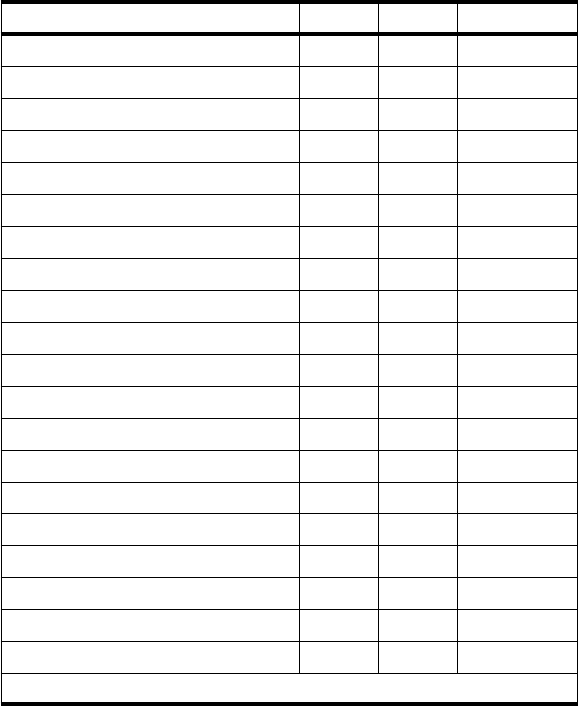
44 Using Your Phone
Using Your Phone Feature Overview
Your feature selection varies depending on your mode setting. The
table below shows the features available in each mode. See “Selecting
a Mode” on page 173 for more information on changing modes.
Feature Satellite GSM CDMA/AMPS
Adjust Earpiece and Ringer Volume • • •
Automatic Redial •
Call a Number Embedded in a Message •
Dial a Number • • •
Dial a Number from the Phone Book • • •
Dial Numbers with Pauses • • •
Dial Special Characters • • •
End a Call • • •
Make an Emergency Call • • •*
Make an International Call • • •*
Multiple Key Answer • • •
Pending Call Drop •
Personal Mailbox • •
Power Up the Phone • • •
Receive a Call • • •
Redial Last Number Called • • •
Set to Ring or Vibrate •
Standby Mode • • •
Unanswered Call Message •
What’s My Phone Number • • •
* You must set this feature up first in the Phone Setup Menu.

Powering Up the Phone 45
Powering Up the Phone
Turn the Power On and Off
To turn your phone’s power on:
1. Insert your SIM chip if necessary. (See
“Insert the SIM Chip” on page 30.)
2. Press and hold S to turn the phone on and
off.
When you turn your phone’s power on, you
will either hear the wakeup tone or feel a
vibration and see the wakeup screen. You
may see a number of other power-on
messages (see below).
When the m (no service) indicator
disappears and the n (home system)
indicator appears, you are ready to start
calling.
Power-On Messages
Once your phone is powered on, you may see:
Message Description
Searching...
The phone is attempting to establish
communications with the satellite or
cellular network. See “Accessing the
Network” on page 163 for more
information.
Rotate and
Extend Antenna
You also hear a tone when you see
this message. Make sure the
antenna is rotated upward and fully
extended and has a clear
unobstructed view of the sky.
Rotate Antenna
Registering...
Your phone is registering with the
network. When the process is
complete, you will see Registered.
See “Accessing the Network” on
page 163 for more information.

46 Using Your Phone
Check Signal
Your phone is unable to locate or
establish registration with the
satellite network. Move to a location
with a clearer view of the sky.
Invalid Account Contact your service provider.
Enter Phone
Unlock Code
Your phone was locked after the last
use. Enter your four-digit unlock
code and press O to proceed. See
“Locking and Unlocking Your Phone”
on page 144 for more information.
Enter PIN
Enter the four- to eight-digit SIM
chip PIN code provided by your
service provider and press O to
proceed. See “Protecting the SIM
chip” on page 146 for more
information.
Insert Card
Power off your phone, make sure
your SIM chip is inserted
completely, and then power your
phone on again.
Check Card
This message indicates that the SIM
chip is damaged or inserted the
wrong way.
Blocked
If the SIM chip PIN code is
incorrectly entered three times in a
row, your phone becomes blocked.
See “Unblock the PIN Code” on
page 147 for instructions on how to
unblock it.
! Blocked
If the SIM chip PIN2 code is
incorrectly entered three times in a
row, your phone becomes blocked.
See “+ Unblock the PIN2 Code” on
page 149 for instructions on how to
unblock it.
Bad Card
See Supplier
Your SIM chip has been damaged or
incorrectly issued. Contact your
service provider for information.
Message Description

Powering Up the Phone 47
Standby
To conserve energy, your phone may turn off its
backlight when you have not pressed a key for
several seconds. The light reappears the next time
you press a key.
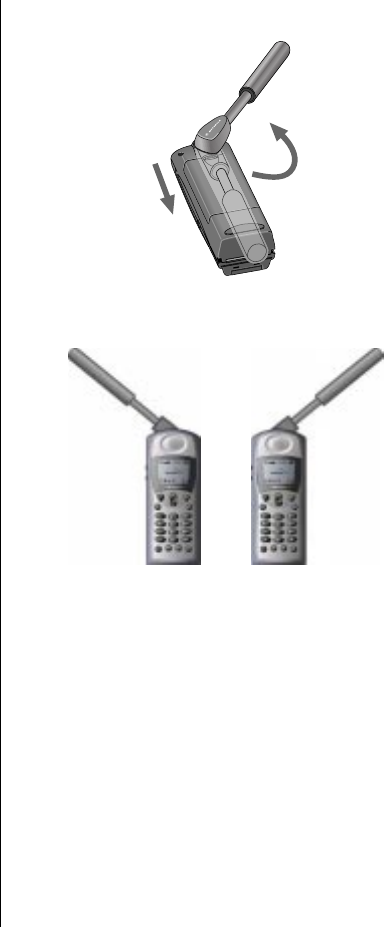
48 Using Your Phone
Holding the Phone
1. Extend the antenna by pulling out on the
end of it in the down position.
2. Rotate the antenna to either the left or right
detent (the antenna will stop here).
When talking on the phone, the antenna
should be vertical to the ground.
3. Make sure the antenna has a clear view of
the sky.
1.
2.
Right Detent
Left Detent

Placing a Call 49
Placing a Call
To place a call, your phone must be powered on,
have a SIM chip inserted, be unlocked, and be in
contact with the satellite or cellular network
(depending on your mode). See “Accessing the
Network” on page 163 for network information.
You can enter a phone number up to a maximum
length of 20 digits. The digits are displayed in two
rows, 16 digits in the top line and four digits in the
next line.
Dial a Number
1. First, rotate and fully extend the satellite
antenna if you are in satellite mode. See
“Holding the Phone” on page 48
Tip:
If you
make a
mistake, press
C
once to
delete the last
digit, or press
and hold
C
to
clear all digits.
2. Enter the number using the digit keys. As
you begin entering digits, you will see Call?.
When you are in satellite mode, you must
enter the phone number in international
format: [international access code, 00, or +]
[country code or Iridium country code]
[phone number]
Note: If you are calling another Iridium
satellite subscriber, use the Iridium code
instead of the country code.
3. Press O. You will see Calling followed by
the number you dialed.
You will see either the flashing message
Calling or the flashing messages Calling,
Registering..., and the phone will play a
series of setup tones.
If the call connects and is answered, Connected
appears on the display for a few seconds, followed
by End Call?. If the call does not connect, you may
see one of the following messages:

50 Using Your Phone
International Dialing
To make an international phone call:
1. Press and hold 0.
After a few seconds the international dialing
prefix + appears in the display. This allows
you to call from any country without knowing
the local international access code.
2. Enter the country code followed by the
phone number. The country code follows the
conventional format.
Note: If you are in CDMA/AMPS cellular mode, you
must set up international prefix mapping in order for
this feature to work. See “r Set Up an International
Prefix” on page 159 for more information.
Message Description
Rotate and
Extend Antenna
Make sure the antenna is rotated
upward and fully extended and has
a clear unobstructed view of the
sky.
Busy Try Later
Please Try Later
The phone is unable to access the
network. Try again in a few minutes.
Restricted Area
The phone is unable to access the
network. Move to an area where
calls are allowed.
Redial?
Press O to redial the number
automatically. See “Automatic
Redial” on page 51 for more
information.

Placing a Call 51
+
Automatic Redial
Satellite
Mode
If the number or your network is busy, you will see
Redial? for five seconds.
Press O to redial the number automatically.
Note: The maximum number of redial attempts is
set by your service provider. If the call cannot be
connected within this maximum, you will see the
message Redial Failed.
Cellular
Mode
This feature is only available in satellite mode.
Redial Last Number Called
Whenever your phone is on standby, you can redial
the last number called:
1. Press O to display the last number dialed.
2. Press O again to place the call.
Dial Special Characters
You can insert special characters in your numbers:
Dial a Number With Pauses
See “Using Pauses in Numbers” on page 85 for
information on dialing numbers with pauses.
To enter... Then...
0 Press 0.
* Press *.
+ (for international calls) Press and hold 0.
® (for pause dialing) Press and hold *.
supplementary service
numbers, PINs, and
unblocking
Press #, *.

52 Using Your Phone
Dial a Number from the Phone Book
Your phone contains a phone book that you can use
to store names and telephone numbers. Once you
have stored information in your phone book, you
can save dialing steps by using:
•one-touch dialing
•an entry from a location
•an entry of a name
•one of the last ten numbers called
See “Managing the Phone Book” on page 75 for
information on how to store and retrieve names and
numbers from the phone book.
Make an Emergency Call
You can make an emergency call virtually anywhere
in the world (without unlocking your phone) by
dialing 112. Provided your phone has found a
network, you are able to make an emergency call.
The emergency call is directed to a central
emergency operator.
To make an emergency call:
Dial 1, 1, 2.
You will see the message Emergency Calling.
In addition, your Iridium service provider may have
provided an additional emergency calling code on
your SIM chip. Check with your service provider.
+
Call a Number in a Message
Satellite
Mode
Details on how to call a number embedded in a
message are described in the “Using Message
Services” section on page 134.
Cellular
Mode
This feature is only available in satellite mode.

Ending a Call 53
Ending a Call
To end a call, perform one of the following tasks:
• Press O.
• Press C.

54 Using Your Phone
What’s My SIM Chip Phone Number?
You can retrieve and display your phone’s number
from your SIM chip.
Tip:
Pressing
Q
,
#
also
brings up your
phone’s
number.
1. Press M until you see Phone Book, and then
press O to select.
2. Press M until you see My Phone Number(s),
and then press O to select. You will see
your phone number.
3. Press and hold C to exit the menu.
Note: If you do not see your phone number, the
number has not been programmed onto your SIM
chip. You can program your phone number onto
your SIM chip by following the steps described in
“+ Modify Your Phone Numbers” on page 100.

Receiving a Call 55
Receiving a Call
Receive a Phone Call
To receive a call, your phone must be powered on,
have a SIM chip inserted, be unlocked, and be in
contact with the satellite or cellular network
(depending on your mode). See “Accessing the
Network” on page 163 for network information.
There are two scenarios for receiving calls in
satellite mode, depending on the antenna position:
(1) antenna raised and fully extended, or (2)
antenna stowed or in the down position.
Antenna Raised and Fully Extended
When you receive a call:
Tip:
See
page 141 to set
your phone’s
alert.
•Your phone rings and/or vibrates.
•The status indicator alternates red and
green.
•The phone displays Call, followed by Answer?
on the next line.
To answer the call:
Press O or any digit key (1-9, *
or #).
You will see Connected.
If the call does not connect properly, you may see
one of the following messages:
Message Description
Orient Antenna
Call Attempt
You need to fully extend the
antenna upwards with a clear
unobstructed view of the sky.
Call Failed
The antenna is not properly
adjusted or the network signal is
not strong enough.

56 Using Your Phone
Antenna Stowed or in the Down Position
When you receive a call:
•The phone chirps up to three times to alert
you of an incoming call.
•The phone displays Rotate Antenna, followed
by Call Attempt on the next line.
You must rotate and extend the antenna as quickly
as possible to receive the call.
Rotate and fully extend the antenna as
described in “Placing a Call” on page 49.
You will see: Iridium Call Attempt. Do not
attempt to answer until the phone rings or
vibrates.
After several seconds, your phone will ring
and display Call followed by Answer? on the
next line.
To answer the call:
Press O or any digit key (1 - 9, * or
#).
You will see Connected.
If the call does not connect properly, you may see
one of the following messages:
Message Description
Orient Antenna
Call Attempt
Rotate Antenna
Call Attempt
You need to fully extend the
antenna upwards with a clear
unobstructed view of the sky.
Call Failed
The antenna is not properly
adjusted or the network signal is
not strong enough.

Receiving a Call 57
Ending a Call
To end a call, perform one of the following tasks:
• Press O.
• Press C.
Note: If you rotate the satellite antenna down and
you are in satellite mode, your call will be dropped.
+
Unanswered Calls
Satellite
Mode
If you are away from your phone or choose not to
answer a call, your phone displays the message
Unanswered Call.
Cellular
Mode
This feature is only available in satellite mode.
Personal Mailbox
Satellite
Mode/
Cellular
Mode (GSM)
Callers who are unable to reach you can leave
numeric, text, and voice messages. The next time
you register with the satellite network or GSM
cellular network (depending on your mode), you will
receive these messages. Then you will have the
option of returning the call or saving the message
for later viewing.
For information on retrieving messages, see
“Accessing Messages” on page 132.
Cellular
Mode
(CDMA/
AMPS)
This feature is not available in CDMA/AMPS cellular
mode.

58 Using Your Phone
Adjusting Earpiece Volume
To adjust earpiece volume:
Tip:
The
volume keys
are located on
the side of the
phone.
• Increase the volume by pressing the upper
volume key.
• Decrease the volume by pressing the lower
volume key.
As you press the keys, the phone’s speaker
demonstrates the new volume level. The bar graph
in the display represents the volume level. The
higher the graph, the louder the volume.
Note: You can also use the volume keys to scroll
through Phone Book entries.
Volume
Quit?

Adjusting Ringer Volume 59
Adjusting Ringer Volume
Use this feature to adjust the volume of the ringer.
The phone sounds the new volume level as you
adjust it.
Note: This feature behaves differently based on the
mode you are in. Check your mode settings before
using this feature. See “Selecting a Mode” on
page 173 for more information.
Satellite
Mode
To adjust the ringer volume in satellite mode:
1. Press M until you see Phone Setup, and then
press O.
2. Press M until you see Adjust Ring Volume,
and then press O to select.
Tip:
You can
also press
E
and then the up
or down
volume key to
adjust ringer
volume.
3. Increase the volume by pressing the upper
volume key.
or
Decrease the volume by pressing the lower
volume key.
4. Press and hold C to exit the menu.
Note: The adjustments you make here apply to
cellular mode as well.
Cellular
Mode
To adjust the ringer volume in cellular mode:
Press E and then the up or down volume
key.
Note: The adjustments you make here apply to
satellite mode as well.
60 Using Your Phone

61
Using In-Call Features
Read this section to learn how to use In-Call menu features. The In-Call
menu is displayed when you press M during a call. See “Using The
In-Call Menu” on page 74 for more information.
What You Will Learn
•using call waiting
•using call holding
•using call muting
Keep in Mind: If you see a + next to a feature, the phone must be in
satellite mode. If you see a r next to a feature, the phone must be in
cellular mode. See “Selecting a Mode” on page 173 to change modes.

62 Using In-Call Features
In-Call Feature Overview
The feature selection varies depending on your
mode setting. The table below shows the features
available in each mode. See “Selecting a Mode” on
page 173 for more information on changing modes.
Feature Satellite GSM CDMA/AMPS
Call Waiting • Service
Provider*
Call Holding • Service
Provider*
Call Muting •
Phone Flash •
* Your service provider may have similar or additional
features.

+ Muting a Call 63
+
Muting a Call
Satellite
Mode
For privacy during a call, try muting the phone. You
hear the party on the other end, but the other party
does not hear you.
While in a call:
1. Press M until you see Turn Mute on or off.
2. Press O to select. You will see Mute.
To unmute a call:
Press O again to resume your
conversation.
or
1. Press M until you see Turn Mute on or off.
2. Press O to select.
Cellular
Mode
This feature is only available in satellite mode.
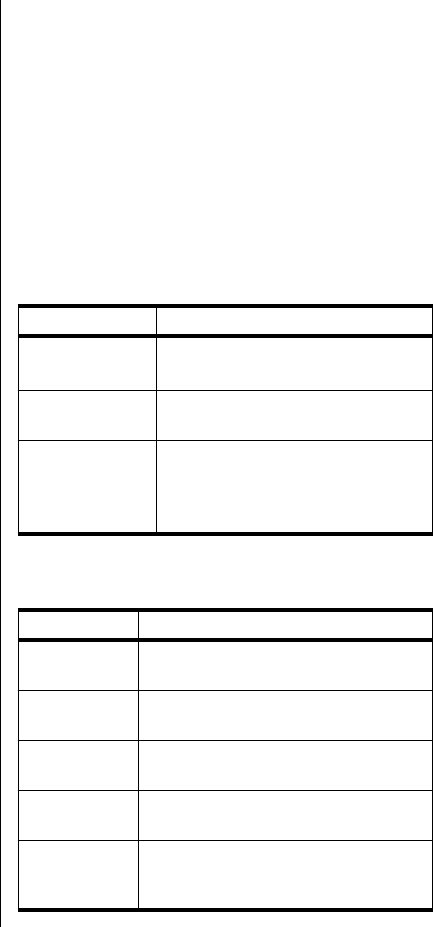
64 Using In-Call Features
Using Call Waiting
You must subscribe to this network feature through
your service provider(s).
Note: This feature behaves differently based your
mode. Check your mode settings before using this
feature. See “Selecting a Mode” on page 173.
Satellite
Mode
If you have subscribed to Call Waiting, you must
first activate it through the Options menu (see “+
Activating Call Waiting” on page 118). After you
activate it, you are notified of incoming calls while
you are on the line in two ways. When a call comes
in, you hear a beep and see the message Call
Waiting followed by Answer?.
You may see one of the following messages during
call waiting activities:
If you want to... Then...
accept the
waiting call
Press O.
Your current call is placed on hold.
reject the
waiting call Press C.
end current call
before
answering the
waiting call
1. Press M. You will see
End Active Call
2. Press O. Your phone rings and
can now be answered normally.
Message Description
Trying Your phone is attempting to switch
between the current and held call.
Hold
Failed
The attempt to hold a call was
unsuccessful.
Cannot Hold
Second Call
A call is already on hold. You can only
place one call on hold.
Reconnect
Failed
The held call could not be made active
again.
Busy
Try Later
Your phone is working on a previous
command. Wait a short time before
repeating the new command.

Using Call Waiting 65
Cellular
Mode
(CDMA/
AMPS)
CDMA/AMPS cellular users who have subscribed
to this feature, are notified of an incoming call by
two beeps. You may see a visual message,
depending on your service provider.
To handle the call waiting, you must send a phone
flash (see “Sending a Flash” on page 68 for more
information) along with the appropriate feature
code provided by your service provider. The current
call is put on hold. To return to your initial call you
must send another phone flash.
To send a phone flash:
1. Press M while you are in a call. You will see
Flash Options followed by Select?
2. Press O. You will see Send Flash?
3. Enter the access code for the feature you
want to access, if necessary, and then
press O to send the flash.
or
Press C to cancel the flash.
Cellular
Mode (GSM)
This feature is not available in GSM cellular mode.

66 Using In-Call Features
Placing a Call on Hold
You must subscribe to this network feature through
your service provider(s).
Note: This feature behaves differently based on the
mode you are in. Check your mode settings before
using this feature. See “Selecting a Mode” on
page 173.
Satellite
Mode
You can place a call on hold to receive a new call or
while making a new call. You can only place one
call on hold at a time, so some options may not be
accessible if you have already placed a call on
hold.
To place a call on hold:
1. Press M until you see Hold Call.
2. Press O. Your current call is put on hold
and you will see Call Holding followed by
Reconnect?.
Once your call is on hold, you have these options:
If you want to... Then...
make a new call
1. Press M until you see Make
New Call, and then press O to
select.
2. Dial the number as usual, and
then press O to place the call.
switch between
calls
When you are connected to either
number, you will see 2 Calls
followed by Switch?.
Press O to switch to the other
call and automatically place the
current call on hold.
end both calls
Press M until you see End Active
& Held Call, and then press O
to select.
Both calls are disconnected, and
the display returns to standby.
end current call Press C at any time.
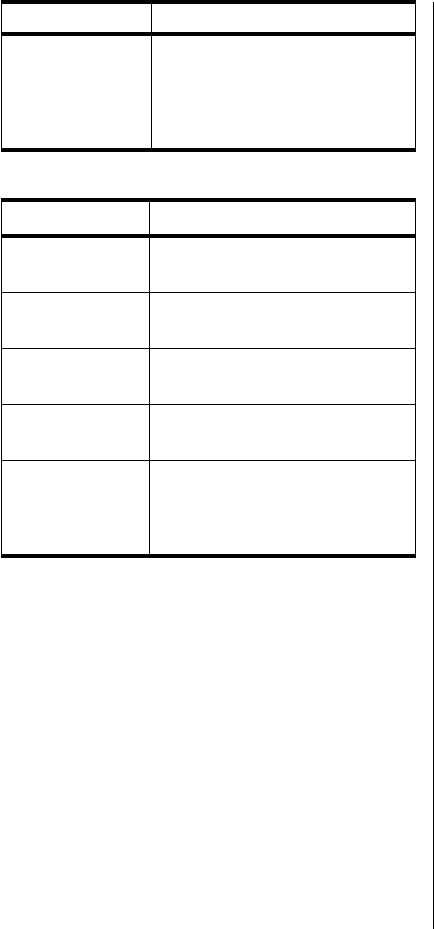
Placing a Call on Hold 67
You may see one of the following messages:
Cellular
Mode
(CDMA/
AMPS)
To place a call on hold, you must send a phone
flash (see “Sending a Flash” on page 68 for more
information) along with the appropriate feature
code provided by your service provider. To return to
your initial call, you must send another phone flash.
To send a phone flash, see page 68.
Cellular
Mode (GSM)
This feature is not available in GSM cellular mode.
end call that is on
hold
Press M until you see End Held
Call, and then press O to select.
The held call is disconnected, the
current call remains connected,
and you see End Call?.
Message Description
Trying Your phone is attempting to switch
between the current and held call.
Hold
Failed
The attempt to hold a call was
unsuccessful.
Cannot Hold
Second Call
A call is already on hold. You can
only place one call on hold.
Reconnect
Failed
The held call could not be made
active again.
Busy
Try Later
Your phone is working on a
previous command. Wait a short
time before repeating the new
command.
If you want to... Then...

68 Using In-Call Features
r
Sending a Flash
Satellite
Mode
This feature only applies to CDMA/AMPS cellular
users.
Cellular
Mode
(CDMA/
AMPS)
Many CDMA/AMPS network features (for example,
Call Waiting, Call Holding, Call Forwarding) require
you to send a “flash” over the air during a call to
access them. This is similar to when you press the
switch hook on your conventional phone in your
home or office to switch between calls. The flash
alerts the network that you want to use a particular
network feature. Your service provider will provide
you with the appropriate codes to send with the
flash for the features to which you have subscribed.
To send a phone flash:
1. Press M while you are in a call. You will see
Flash Options followed by Select?
2. Press O. You will see Send Flash?
3. Enter the access code for the feature you
want to access, if necessary, and then
press O to send the flash.
or
Press C to cancel the flash.
Cellular
Mode (GSM)
This feature only applies to CDMA/AMPS cellular
users.

69
Using the Menus
Many of your phone’s features are organized into lists of options called
menus
. There are three menus: the Options menu, the Quick Access
menu, and the In-Call menu. Some of these options give you access to
additional lists of options called
submenus
.
Learn how to navigate through your phone’s three main menus. Once
you become familiar with these menus and their features, go to “+
Customizing the Menu System” on page 191 for instructions on how you
can personalize your menus.
What You Will Learn
•using the Options menu
•using the Quick Access menu
•using the In-Call menu
Keep in Mind: If you see a + next to a feature, the phone must be in
satellite mode. If you see a r next to a feature, the phone must be in
cellular mode. See “Selecting a Mode” on page 173 to change modes.
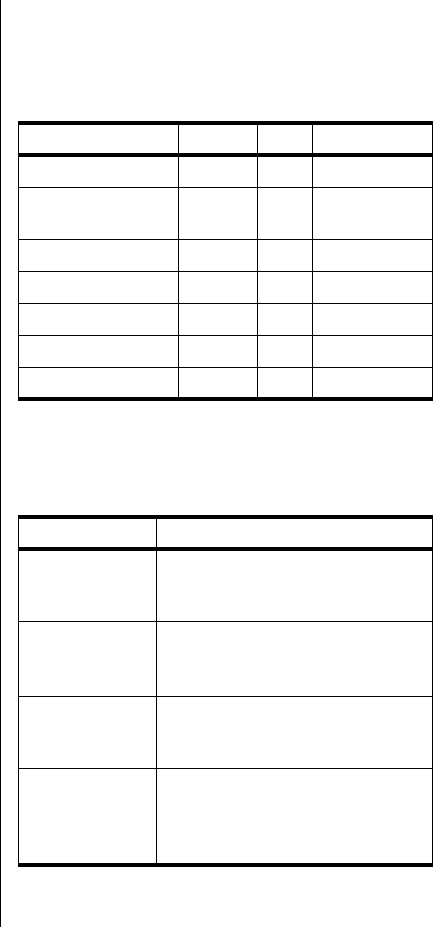
70 Using the Menus
Using the Options Menus
The Options menu gives you access to the features
and options included with your phone. The
submenus that appear under the Options Menu
vary depending on your mode setting. See
“Selecting a Mode” on page 173.
Navigate the Options Menus
Learning how to use just a few keys enables you to
move freely through the entire menu system.
Note: If you press M during a call, you will see the
In-Call menu which is described on page 74.
Menu Satellite GSM CDMA/AMPS
Phone Book • • •
Call Related
Features • • •
Messages • •
Phone Setup • •
Network Selection • •
Mode Selection • • •
Call Meters •
If you want to... Then...
enter the
Options menu
Press M to access the Options
menu. You will see the first available
submenu.
scroll through
the Options
menu
• Press M to scroll forward.
• Press < to scroll backward or
forward.
select options
and submenus
Press O to select a menu option or
submenu when that option or
submenu name is displayed.
exit features and
menus
• Press C to exit the feature or
submenu.
• Press and hold C to exit the
Options menu.
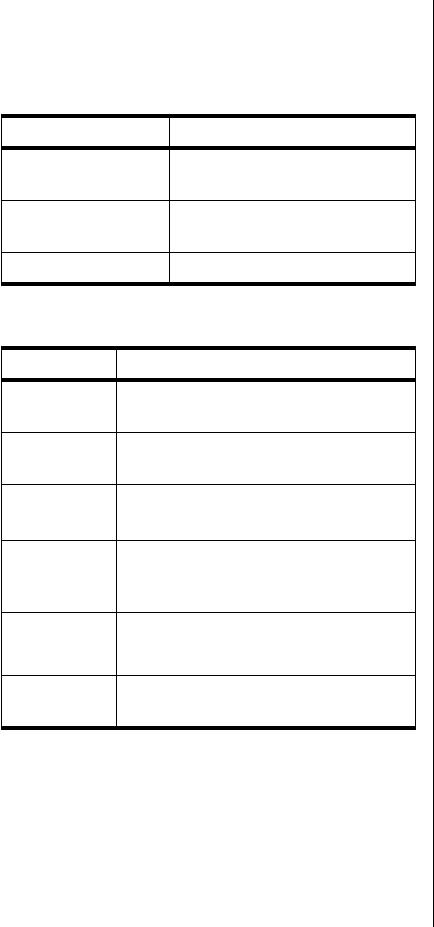
Using the Options Menus 71
How the Phone Responds
As you scroll through the Options menu, you will
see one of three questions on the bottom line of the
display.
Display Messages and Icons
+
Customize the Options Menu
Satellite
Mode
To personalize the Options menu—to hide and
move features—see “+ Move Menu Features” on
page 192.
Cellular
Mode
You can only customize the menus in satellite
mode.
If your phone asks... Then...
View Options? Press O to enter the
submenu.
Select? Press O to select the
displayed feature.
Quit? Press O to exit the feature.
If you see... Then...
y Completed This indicates a feature has been
activated.
! Failed The display returns to the menu in a few
seconds.
Enter PIN or
Enter Name
Enter requested information. Then
press O.
uBusy
Try Later
You may have requested information
while your phone was completing
another task.
s This indicates where you are in a menu.
w Your phone may take a few seconds to
request settings from the network.

72 Using the Menus
+
Using the Quick Access Menu
Satellite
Mode
The Quick Access menu is a way to keep your
favorite menu options readily accessible. Each digit
key, 1 to 9, has a Quick Access feature
assigned to it. See the chart on page 73 for the
default setup.
If you know the number of the feature, activating
that option takes only two button presses! If you do
not know the number or want to review your
options, just scroll through the icon menu and read
the tag attached to each option.
+
Activate the Feature Directly
To access the feature directly:
Press E, and then press the digit key of the
feature.
+
Scroll to the Feature
To scroll to the feature:
1. Press E.
2. Press < to scroll through the available
features.
3. Press O to select a feature.
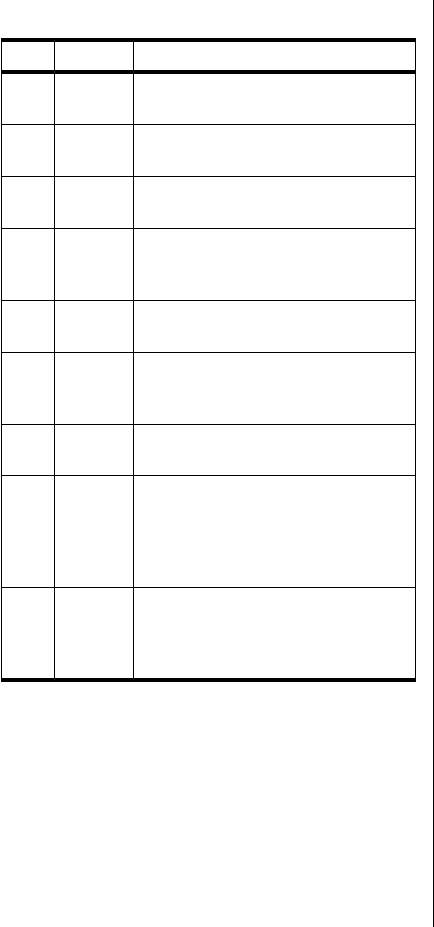
+ Using the Quick Access Menu 73
+
Default Quick Access Settings
The following features (and associated icons) are
the default settings for the Quick Access menu.
+
Customize the Quick Access Menu
See “+ Personalizing the Quick Access Menu” on
page 194 for instructions on how to customize the
menu.
Cellular
Mode
The Quick Access menu is not available in Cellular
Mode.
Key Icon Quick Access Feature
1 B Find Name searches your Phone
Book by the full name.
2 r Check Signal checks the strength of
the signal from the satellite network.
3 R Call Voicemail calls your Voicemail
number to check your Voicemail.
4 G
Battery Meter displays a fuel gauge
indicating charge. The more bars, the
greater the charge.
5 H Lock Now locks your phone
immediately.
6 L
Vibrate On/off activates or
deactivates VibreCall™ depending on
the current setting
7 K Read Messages displays the newest
message received
8 f
Register Now initiates a systematic
manual search for a network on
which to register. You must wait three
minutes between registration
attempts.
9 P
Forward On/Off activates or
deactivates unconditional call
forwarding depending on the current
setting.
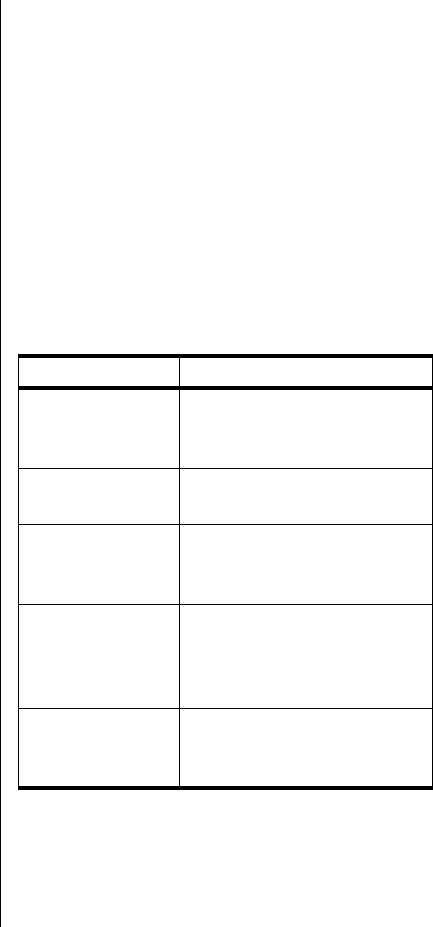
74 Using the Menus
Using The In-Call Menu
This menu lets you access specific features while
you are in a call. The In-Call menu is only available
when you are in a call. You cannot review it off-line.
Entering the In-Call Menu
While you are in a call:
Press M to view the In-Call menu features.
In-Call Menu Features
The In-Call menu dynamically changes depending
on the type of call you are in and the mode you
have selected.
Satellite
Mode
The following options appear in satellite mode.
Cellular
Mode
When you are in CDMA/AMPS cellular mode and
you press M during a call, you will see Flash
Options followed by Select?.
There is not an in-call menu in GSM cellular mode.
Type of call Options
single active call
Hold Call
Make New Call
Turn Mute on or off
held call Make New Call
End Active Call
active call and a call
waiting
End Active Call
Reject Call Waiting
Turn Mute on or off
active call and a held
call
End Active Call
Turn Mute on or off
End Held Call
End Active & Held Call
held call and a call
waiting
Reconnect Held Call
Reject Call Waiting
End Held Call?

75
Managing the Phone Book
Your satellite phone can store up to 100 names and numbers, and your
SIM chip expands memory capacity even more.
Use the dedicated keys or the Options menu to access the same
functions. With the Options menu you can also access Phone Book
maintenance and security features.
What You Will Learn
•recalling and storing phone numbers
•organizing the Phone Book
•accessing automated calling systems
•storing phone number prefixes
•restricting calls with fixed dialing
•editing the memory information
•viewing your own phone number
Keep in Mind: If you see a + next to a feature, the phone must be in
satellite mode. If you see a r next to a feature, the phone must be in
cellular mode. See “Selecting a Mode” on page 173 to change modes.

76 Managing the Phone Book
Entering the Phone Book Menu
To enter the Phone Book menu:
1. Press M to open the Options menu.
2. Press M to scroll forward.
or
Press < to scroll backward or forward.
3. Press O when you see:
4. Press M to scroll through the submenu.
or
Press < to scroll backward or forward
through the submenu.
Phone
Book
View Options?
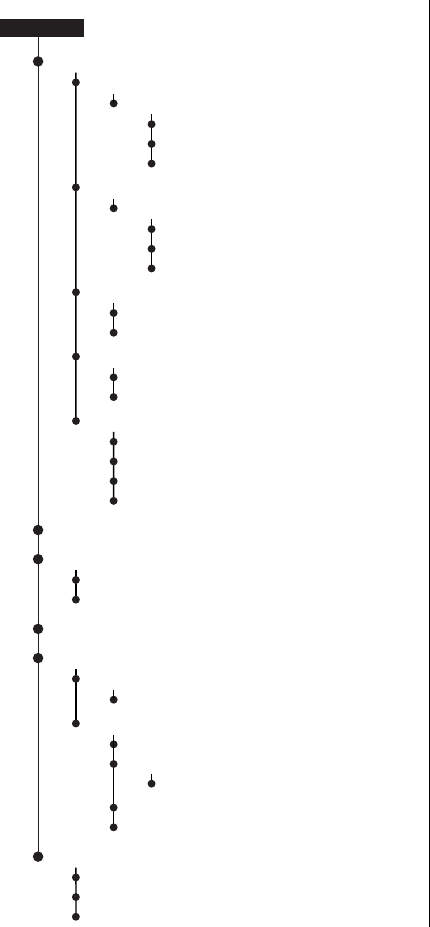
What’s on the Phone Book Menu? 77
What’s on the Phone Book Menu?
Satellite
Mode
Personal Numbers
Phone Book
Call Number
Find Entry By Location
Find Entry By Name
My Phone Number(s)
Fixed Dialing
Enter Name
Erase Name And Number
Modify Name Or Number
Call Number
Fixed Dial List
Enter Location
Erase Name And Number
Modify Name Or Number
View Fixed Dial List
Fixed Dial List
Setup Fixed Dialing
On/Off
Last Ten Calls
Last Calls Made
Erase All Numbers
One-Touch Dial Settings
To Phone Memory
To SIM Card Memory
To Fixed Dial List
Add To Phone Memory
Add Entry
Add To SIM Card Memory
No Memory Restrictions
Prevent Access
To Phone Memory
To SIM Card Memory
To Phone & SIM Memory
Edit Entry
Add Entry
Erase Entry
Check Phone Capacity
Check Capacity
Check SIM Capacity
Show Services
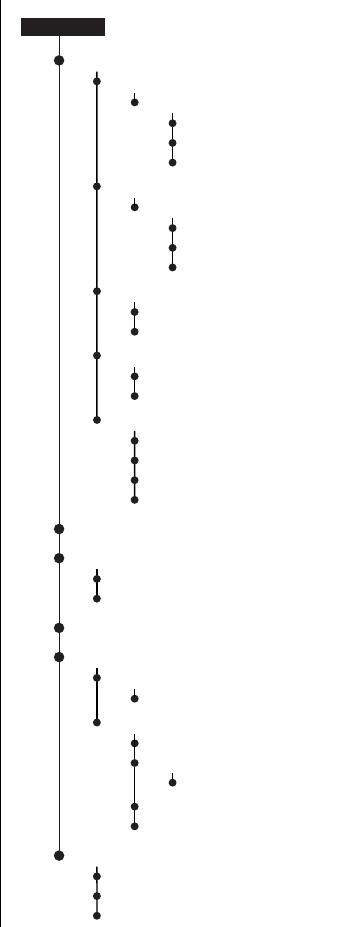
78 Managing the Phone Book
Cellular
Mode
Personal Numbers
Phone Book
Call Number
Find Entry By Location
Find Entry By Name
My Phone Number(s)
Fixed Dialing
Enter Name
Erase Name And Number
Modify Name Or Number
Call Number
Fixed Dial List
Enter Location
Erase Name And Number
Modify Name Or Number
View Fixed Dial List
Fixed Dial List
Setup Fixed Dialing
On/Off
Last Ten Calls
Last Calls Made
Erase All Numbers
One-Touch Dial Settings
To Phone Memory
To SIM Card Memory
To Fixed Dial List
Add To Phone Memory
Add Entry
Add To SIM Card Memory
No Memory Restrictions
Prevent Access
To Phone Memory
To SIM Card Memory
To Phone & SIM Memory
Edit Entry
Add Entry
Erase Entry
Check Phone Capacity
Check Capacity
Check SIM Capacity
Show Services

Organizing Your Phone Book 79
Organizing Your Phone Book
Each name and phone number in your Phone Book
is stored in a numbered memory location. The
satellite phone has two types of memory—phone
memory and SIM chip memory.
Your phone’s memory can seem overwhelming if
you do not have a strategy for organizing your
Phone Book. Begin setting up your Phone Book by
asking yourself three questions:
Which numbers do I call most?
Make a list of the numbers you call most frequently.
You will probably want to store these numbers in the
first nine memory locations of your Phone Book. You
can then dial them with a single keystroke by using
One-Touch dialing (satellite mode only).
Phone Memory SIM Chip Memory1
Personal
Numbers 100 entries 155 entries
Fixed Dial
Numbers No entries 40 entries
Phone
Number Digits 32 20
Name
Characters 16 16
Location
Numbers 1-100 101-255
1 SIM chip capacity varies depending upon the card issued by
your service provider.

80 Managing the Phone Book
When do I use these numbers?
Group the numbers on the list according to when
you use them. Most people call a different set of
numbers during the day than they do in the evening
and on weekends. You can switch one-touch
dialing to your phone’s memory (locations 1–9),
your SIM chip’s memory (locations 101–109), or to
your fixed dial list (locations 1–9). Store your
evening and weekend numbers on one type of
memory and your daytime numbers on another.
Which numbers do I need to keep
secure?
Tip:
If you have
many entries,
group them in
blocks of ten to
make them
easier to find.
Use your SIM chip to store the numbers you need to
keep secure, like the numbers of friends and family
members. Because your SIM chip is the size of a
credit card, you can easily keep it securely in your
wallet when you are not using it. If you wish, you
can even require a PIN code every time your SIM
chip is inserted into
any
phone. (To deactivate your
PIN code, see “+ Activate and Deactivate the SIM
chip PIN” on page 146.) Store more public
numbers, like business associates and travel
agents in your phone’s memory.
* SIM memory is dependent on your SIM chip.

Organizing Your Phone Book 81
Storing Names and Numbers
Add an Entry
Use the Options Menu
1. Follow the steps in “Getting to Personal
Numbers...” to get to Add Entry, and then
press O.
2. Press M to scroll to Add To Phone Memory or
Add To SIM Card Memory.
3. Press O to select. You will see Enter Number.
4. Enter a number, and then press O. You will
see Enter Name.
Tip:
When in
satellite mode,
numbers must
be entered in
international
format.
5. Enter a name (see “Entering Names” on
page 83), and then press O. You will see
Enter Location.
6. Enter a location number, 1-100 for phone
memory or 101-255 for SIM memory*, and
then press O. You will see Stored XXX.
or
Press O to select the next available
location. You will see Stored XXX.
7. Press and hold C to exit the menu.
Getting to Personal Numbers...
1. Press M until you see Phone Book, and then press O.
2. Press < to scroll to Personal Numbers, and then press O.
3. Press < to scroll to one of the features described below.

82 Managing the Phone Book
Use the Dedicated Keys
Tip:
If you have
more than one
number for the
same person,
try attaching a
descriptive tag
to the name,
like
Home
,
Office
,
or
Mobile
.
1. Enter the phone number you want to store.
2. Press I to begin storing.
3. Press < to scroll to the desired memory
type Add To Phone Memory or Add To SIM Card
Memory, and then press O. You will see Enter
Number, followed by the number you entered.
4. Press O to accept the number. You will see
Enter Name.
5. Enter a name (see “Entering Names” on
page 83), and then press O. You will see
Enter Location.
6. Enter a three-digit location number, and
then press O. You will see Stored XXX.
or
Press O to store the entry in the next empty
memory location. You will see Stored XXX.
Adding Entry Messages
When you enter the location number for your entry,
you may see one of these messages:
Message Description
Stored XXX You have stored the entry.
Range XXX-XX
You have chosen a memory location
outside the appropriate range. Enter
a new number within the range
listed on the display.
Overwrite?
You have chosen an occupied
location. Press O to overwrite the
location or press any other key to
try another location.

Entering Names 83
Entering Names
You can use the keypad to produce any letter in the
alphabet. For example, press 2 to enter the
letters A, B, or C, as shown:
Enter Characters
Tip:
Press and
hold any
numeric key to
toggle between
uppercase and
lowercase
characters.
1. Enter a letter by pressing a key as many
times as necessary.
2. Press < to advance the cursor.
3. Repeat steps 1 and 2 as many times as
necessary, and then press O.
Correct an Entry
To make a change:
1. Press < to scroll to the character you
want to delete.
2. Press C to delete one character at a time.
or
Press and hold C to clear the display.
press 1 time to insert an A
press 2 times to insert a B
press 3 times to insert a C
press 4 times to insert a 2

84 Managing the Phone Book
Available Characters
Use this chart as a guide for producing characters:
The upper line for each key shows the uppercase
characters. The lower line for each key shows the
lowercase characters.
1 Space . 1 ? ! , @ _ & : “ ( ) ‘ ¿ ¡ % £ $
Space . 1 ? ! , @ _ & : “ ( ) ‘ ¿ ¡ % £ $
2 A B C 2 Ä Å à Æ β Ç
a b c 2 ä å à æ β Ç
3 D E F 3 ∆ É è Φ
d e f 3 ∆ é è Φ
4 G H I 4 Γ ì
g h i 4 Γ ì
5 J K L 5 Λ
j k l 5 Λ
6 M N O 6 Ñ Ö Ø Ò Ω
m n o 6 ñ ö ø ò Ω
7 P Q R S 7 Π ß Σ
p q r s 7 Π ß Σ
8 T U V 8 Θ Ü ù
t u v 8 Θ ü ù
9 W X Y Z 9 Ξ Ψ
w x y z 9 Ξ Ψ
0 + - 0 x * / = > < #
+ - 0 x * / = > < #

Using Pauses in Numbers 85
Using Pauses in Numbers
When you call automated systems, a recorded
message prompts you for numbers such as PIN
numbers and account numbers. You can store
these numbers in the same memory location as the
automated system’s access number. Separate the
numbers with “pauses”—special characters that tell
your phone to wait a few seconds before sending
additional numbers—and store the string in the
same way you would other numbers.
Tip:
You can
store 32
characters in a
phone memory
location, or 20
characters in a
SIM chip
memory
location. A
pause is equal
to one
character.
Enter Pauses in Numbers
1. Enter the phone number you use to access
the automated system.
2. Press and hold *. You will see a ® (pause)
character inserted into the number entry.
3. Enter the next group of numbers. For
example, enter your PIN number. If the
automated system requires a * or #, enter
those symbols, too.
4. Repeat steps 2 to 3 as many times as
necessary.
5. To store the entry follow the procedures in
“Add an Entry” on page 81.

86 Managing the Phone Book
Dial Numbers With Pauses
Satellite
Mode/
Cellular
Mode (GSM)
To dial a number with pauses in satellite mode or in
GSM cellular mode:
1. Recall the entry. (See “Locating Entries” on
page 88.)
Tip:
Your
phone displays
up to 32 digits
(two rows of 16
digits) when
you enter a
number with
pauses.
2. Press O to place the call.
The first pause in the number waits until the
call is answered. When the automated
system answers, your phone waits a few
seconds and then automatically sends the
next set of numbers, then the next, until all
numbers are sent.
Cellular
Mode
(CDMA/
AMPS)
To dial a number with pauses in CDMA/AMPS
cellular mode:
1. Recall the entry. (See “Locating Entries” on
page 88.)
2. Press O to place the call.
The first pause in the number waits until the
call is answered.
The phone then waits for you to send the next
set of numbers, You will see Send Digits?.
3. Press O to send the next set of digits.
4. Repeat step 3 until all the digit sequences
are sent.

+ Using Phone Number Prefixes 87
+
Using Phone Number Prefixes
Satellite
Mode
You can save time when you dial by storing the
prefixes that you often use. This is sometimes
called “postscripting.” Your satellite phone allows
you to change or add to Phone Book entries without
overwriting them.
Store a prefix in your Phone Book just as you would
any other number. See “Storing Names and
Numbers” on page 81.
Use a Stored Prefix
Tip:
Try naming
the prefix by
area, like
Downtown
,
Suburbs
, or
Germany
.
To use a stored prefix:
1. Recall the prefix from your Phone Book.
(See “Locating Entries” on page 88.)
2. Add the remaining numbers.
3. Press O to place the call.
Change Entry to a Similar Number
To change an entry to a similar number:
1. Recall the number from your Phone Book.
(See “Locating Entries” on page 88.)
2. Press C to delete the unwanted digits.
3. Enter the replacement digits.
4. Press O to place the call.
Cellular
Mode
This feature is not available in cellular mode.

88 Managing the Phone Book
Locating Entries
Find an Entry by Name
Search your Phone Book by the first few letters of
the entry.
Note: If you have restricted access to either SIM
chip or phone memory and you are in satellite
mode, those entries will not be available. For more
information, see “+ Preventing Access to the Phone
Book” on page 92.
1. Follow the steps in “Getting to Personal
Numbers...” to get to Find Entry By Name, and
then press O to select. You will see Enter
Name.
2. Enter one to three characters of the entry,
and then press O. If necessary, scroll to the
entry you are looking for.
Tip:
Your
phone sorts
SIM chip
memory and
phone memory
together
alphabetically.
3. Press O to access options for that entry,
and then proceed to “Calling, Modifying, or
Erasing an Entry” on page 90.
Getting to Personal Numbers...
1. Press M until you see Phone Book, and then press O.
2. Press < to scroll to Personal Numbers, and then press O.
3. Press < to scroll to one of the features described below.

+ Using Phone Number Prefixes 89
Find an Entry by Location
If you know the location number of the entry, here is
an easy way to recall it.
Use the Options Menu
1. Follow the steps in “Getting to Personal
Numbers...” to get to Find Entry By Location,
and then press O to select. You will see
Enter Location.
2. Enter the location number, and then press
O. You will see the entry displayed.
If you enter an empty location number, you
will see Location XXX is Empty. Your phone
then selects the next largest available
location. If there are no numbers stored, you
will see No Numbers Stored.
3. Press O to access options for that entry,
and then proceed to “Calling, Modifying, or
Erasing an Entry” on page 90.
Use the Dedicated Keys
1. Press Q. You will see Enter Location.
2. Enter the one-, two-, or three-digit location
number of the entry, and then press O.
If you enter an empty location number, you
will see Location XXX is Empty. Your phone
then selects the next largest available
location. If there are no numbers stored, you
will see No Numbers Stored.
3. Press O to call the displayed entry. You will
see the number followed by Calling.

90 Managing the Phone Book
Calling, Modifying, or Erasing an Entry
Once you have selected a Phone Book entry, you
can call, change, or erase that entry.
Call a Selected Entry
1. Find an entry, and then press O. See
“Locating Entries” on page 88.
2. Press M until you see Call Number, and then
press O. You will see Calling followed by
the number you dialed.
Modify a Name or Number
Tip:
For help
entering letters
or changing
entries, see
“Entering
Names” on
page 83.
1. Find an entry, and then press O. See
“Locating Entries” on page 88.
2. Press M until you see Modify Name or Number,
and then press O. You will see Edit Number,
followed by the phone number stored in that
entry.
3. Enter changes to the number, and then
press O. You will see the name stored in
that entry.
4. Enter changes to the name, and then press
O. You will see Modified XXX.
Erase a Name and Number
1. Find an entry, and then press O. See
“Locating Entries” on page 88.
2. Press M until you see Erase Name and Number,
and then press O. You will see Erased xxx.

Calling, Modifying, or Erasing an Entry 91
+
Checking Phone Book Capacity
Satellite
Mode
Use this feature to see how many available memory
locations you have in either SIM chip memory or
phone memory.
1. Follow the steps in “Getting to Personal
Numbers...” to get to Check Capacity, and then
press O to select.
2. Press M until you see Check Phone Capacity
or Check SIM Capacity, and then press O. You
will see XXX Unused Locations.
3. Press and hold C to exit the menu.
Cellular
Mode
This feature is only available in satellite mode.
Getting to Personal Numbers...
1. Press M until you see Phone Book, and then press O.
2. Press < to scroll to Personal Numbers, and then press O.
3. Press < to scroll to one of the features described below.

92 Managing the Phone Book
+
Preventing Access to the Phone Book
Satellite
Mode
You may want to restrict memory access when
loaning your phone to others. You can choose to
prevent access to the phone memory, SIM memory,
or both.
Caution: If you switch to cellular mode these
restrictions will not apply.
1. Follow the steps in “Getting to Personal
Numbers...” to get to Prevent Access, and then
press O to select.
2. Press M until you see the restriction type
you desire: No Memory Restrictions, To SIM Card
Memory, To Phone Memory, or To Phone & SIM
Memory.
3. Press O to select the displayed option. You
will see Enter Security Code.
Tip:
The
factory default
security code
is: 000000.
4. Enter security code. Enter your six-digit
security code. You will see Completed.
5. Press and hold C to exit the menu.
Note: If you restrict access to either phone memory
or SIM memory and try to access an entry stored in
that type of memory, you will see a list of the entries
that are not restricted. If you prevent access to both
your phone memory and SIM memory and then try
to access an entry, you will see Restricted.
Cellular
Mode
This feature is not available in cellular mode. When
you switch to cellular mode, the restrictions you set
in satellite mode will not apply.
Getting to Personal Numbers...
1. Press M until you see Phone Book, and then press O.
2. Press < to scroll to Personal Numbers, and then press O.
3. Press < to scroll to one of the features described below.

Calling, Modifying, or Erasing an Entry 93
+
Restricting Phone Use
You can restrict calling on your phone to a list of
numbers that you create. When the fixed dialing
feature is active, you can only call numbers or use
prefixes (for example, country codes or area
codes) that exactly match those stored in your fixed
dial list. You can store up to 40 entries on your list.
These entries are stored on your SIM chip.
+
Activate Fixed Dialing
Satellite
Mode
Use this option to activate fixed dialing. For
instructions on how to store entries in the fixed dial
list, see “Add an Entry” on page 94.
Note: The fixed dialing feature restricts access to
your SIM memory.
1. Follow the steps in “Getting to Fixed
Dialing...” to get to Setup Fixed Dialing, and
then press O to select. You will see Enter
PIN2
Tip:
You should
have received
your SIM chip
PIN2 code from
your service
provider.
2. Enter code. Enter your SIM chip PIN2 code,
and then press O.
3. Press M until you see On or Off, and then
press O. You will see Completed.
4. Press and hold C to exit the menu.
Cellular
Mode
This feature is not available in cellular mode. You
must deactivate this feature from satellite mode in
order to make an receive calls in cellular mode.
Getting to Fixed Dialing...
1. Press M until you see Phone Book, and then press O.
2. Press < to scroll to Fixed Dialing, and then press O.
3. Press < to scroll to one of the features described below.

94 Managing the Phone Book
+
Add an Entry
Satellite
Mode
To add an entry to the fixed dial list:
1. Follow the steps in “Getting to Fixed
Dialing...” to get to Setup Fixed Dialing, and
then press O to select. You will see Enter
PIN2.
Tip:
Phone
numbers must
be in
international
format.
2. Enter code. Enter your SIM chip PIN2 code,
and then press O.
3. Press M until you see Add Entry, and then
press O. You will see Enter Number.
4. Enter the number, and then press O. You
will see Enter Name.
Tip:
See
“Entering
Names” on
page 83 for
help entering
letters.
5. Enter the name, and then press O. You will
see Enter Location.
6. Enter a location number, and then press
O. You will see Completed.
7. Press and hold C to exit the menu.
Cellular
Mode
This feature is not available in cellular mode. You
must deactivate this feature from satellite mode in
order to make and receive calls in cellular mode.
Getting to Fixed Dialing...
1. Press M until you see Phone Book, and then press O.
2. Press < to scroll to Fixed Dialing, and then press O.
3. Press < to scroll to one of the features described below.

Calling, Modifying, or Erasing an Entry 95
+
Erase an Entry
Satellite
Mode
To erase an entry:
1. Follow the steps in “Getting to Fixed
Dialing...” to get to Setup Fixed Dialing, and
then press O to select. You will see Enter
PIN2.
2. Enter code. Enter your SIM chip PIN2 code,
and then press O.
3. Press M until you see Erase Entry, and then
press O to select. You will see the first entry
in your fixed dial list.
4. Press M to scroll to the number you wish to
erase. You will see Erase?.
5. Press O to confirm. You will see Completed.
6. Press and hold C to exit the menu.
Cellular
Mode
This feature is not available in cellular mode. You
must deactivate this feature from satellite mode in
order to make and receive calls in cellular mode.

96 Managing the Phone Book
+
Edit an Entry
Satellite
Mode
To edit an entry:
1. Follow the steps in “Getting to Fixed
Dialing...” to get to Setup Fixed Dialing, and
then press O to select. You will see Enter
PIN2.
2. Enter code. Enter your SIM chip PIN2 code,
and then press O.
3. Press M until you see Edit Entry, and then
press O to select. You will see the first entry
in your fixed dial list.
4. Press M to scroll to the entry you want to
change, and then press O. You will see the
current number for that location.
5. Enter changes to the number, and then
press O. You will see the current name for
that location.
6. Enter changes to the name, and then press
O. You will see the current location.
7. Enter a new location, and then press O.
You will see Completed.
8. Press and hold C to exit the menu.
Cellular
Mode
This feature is not available in cellular mode. You
must deactivate this feature from satellite mode in
order to make and receive calls in cellular mode.
Getting to Fixed Dialing...
1. Press M until you see Phone Book, and then press O.
2. Press < to scroll to Fixed Dialing, and then press O.
3. Press < to scroll to one of the features described below.

Calling, Modifying, or Erasing an Entry 97
+
View Your Fixed Dialing List
Satellite
Mode
This feature enables you to review, but not change,
your fixed dial list.
1. Follow the steps in “Getting to Fixed
Dialing...” to get to View Fixed Dial List, and
then press O to select. You will see the first
number on your fixed dial list.
2. Press < to scroll through the numbers on
your fixed dial list.
3. Press and hold C to exit the menu.
Cellular
Mode
This feature is not available in cellular mode. You
must deactivate this feature from satellite mode in
order to make and receive calls in cellular mode.

98 Managing the Phone Book
Viewing the Last Ten Numbers Dialed
Don’t worry about forgetting the number you dialed
earlier. The last ten numbers you dialed are saved.
1. Follow the steps in “Getting to Phone Book
Features...” to get to Last Ten Calls, and then
press O to select.
2. Press M to scroll to Last Calls Made or Erase
All Numbers, and then press O to select.
Tip:
If you want
to add a
number from
Last Ten Calls
to your Phone
Book, press
I
when the
number is
displayed, then
follow the steps
in “Storing
Names and
Numbers” on
page 81.
3. If you select Last Calls Made, press M to
scroll to the number you are looking for, and
then press O to place a call to that number.
or
If you select Erase All Numbers, you will see
Completed.
4. Press and hold C to exit the menu.
Getting to Phone Book Features...
1. Press M until you see Phone Book, and then press O.
2. Press < to scroll to one of the features described below. You
will see the feature name, followed by Select?.

Viewing and Modifying Your Phone Numbers 99
Viewing and Modifying Your Phone
Numbers
View Your SIM Phone Number(s)
You can program fax, data, and other types of
phone numbers onto your SIM chip in addition to
your voice phone number. Use this feature to view
your phone number(s). You can have up to five
phone numbers.
Tip:
Pressing
Q
#
also
brings up your
phone number.
1. Follow the steps in “Getting to Phone Book
Features...” to get to My Phone Number(s).
2. Press O to select. You will see your phone’s
voice phone number followed by Modify?.
3. Press < to scroll through your numbers.
4. Press and hold C to exit the menu.
Note: If you do not see your phone number(s), they
have not been programmed onto your SIM chip.
You can program your voice phone number and
other phone numbers onto your SIM chip by
following the steps described in “Modify Your
Phone Numbers” on page 100.

100 Managing the Phone Book
+
Modify Your Phone Numbers
Satellite
Mode
Use this feature to modify or program your voice
phone number onto your SIM chip. You can also
program fax, data, and other types of phone
numbers onto your SIM chip. You can have up to
five phone numbers.
1. Complete the steps in “View Your SIM
Phone Number(s)” on page 99 to get to the
number you want to modify.
2. Press O to modify the number. You will see
Edit Number followed by the number for the
selected entry.
3. Enter changes to the number, and then
press O. You will see Edit Name followed by
the name for the entry selected.
4. Enter changes to the name (see “Entering
Names” on page 83) and then press O. You
will see Stored.
5. Press and hold C to exit the menu.
Cellular
Mode
This feature is not available in cellular mode.
However, the modifications you make to your
number(s) in satellite mode are available in cellular
mode.

Viewing and Modifying Your Phone Numbers 101
+
Using One-Touch Dialing
Satellite
Mode
One-touch dialing enables you to place calls
instantly. You can choose to dial the phone
numbers in the first nine memory locations in either
your SIM memory, phone memory, or your fixed dial
list. You choose which type of memory you want to
be active with this feature.
Set Up One-Touch Dialing
1. Follow the steps in “Getting to Phone Book
Features...” to get to One-Touch Dial Setting,
and then press O to select.
2. Press M to scroll through To Phone Memory, To
SIM Card Memory, or To Fixed Dial List, and
then press O to select the displayed option.
You will see Completed.
3. Press and hold C to exit the menu.
Use One-Touch Dialing
Tip:
You do not
need to press
O
to call the
number when
you are using
one-touch
dialing.
Using one-touch dial is easy—just press and hold a
keypad digit! To use one-touch dialing:
Press and hold the appropriate digit key.
For example, press and hold 2 to dial the
number stored in location 2 of your phone memory,
location 2 of your fixed dial list, or 102 of your SIM
memory, depending on your setting.
Cellular
Mode
One-touch dialing features are only available from
satellite mode.
Getting to Phone Book Features...
1. Press M until you see Phone Book, and then press O.
2. Press < to scroll to one of the features described below. You
will see the feature name, followed by Select?.

102 Managing the Phone Book
Viewing Service Dialing Numbers
The Show Services feature provides a read-only list
of service dialing numbers that are
pre-programmed by your service provider. This list
resides on the SIM chip and allows for call
placement only.
1. Follow the steps in “Getting to Phone Book
Features...” to get to Show Services.
2. Press O to select. You will see a list of
service phone numbers.
3. Press M to scroll to the number you are
looking for.
4. Press O to place a call to that number.
or
Press and hold C to exit the menu.
Note: If you do not see any service dialing
number(s), they have not been programmed onto
your SIM chip. Contact your service provider for
more information.
Getting to Phone Book Features...
1. Press M until you see Phone Book, and then press O.
2. Press < to scroll to one of the features described below. You
will see the feature name, followed by Select?.

103
Using Calling Features
This chapter describes call-related features. Many of these features are
network features that you must subscribe to in order to access.
What You Will Learn
•checking battery power level
•showing the strength of the signal your phone is receiving
•activating/deactivating the Pending Call Drop signal
•forwarding calls when you are not available
•restricting use of your phone
Keep in Mind: If you see a + next to a feature, the phone must be in
satellite mode. If you see a r next to a feature, the phone must be in
cellular mode. See “Selecting a Mode” on page 173 to change modes.

104 Using Calling Features
Entering the Call Related Features Menu
To enter the Call Related Features menu:
1. Press M to open the Options menu.
2. Press M to scroll forward.
or
Press < to scroll backward or forward.
3. Press O when you see:
4. Press M to scroll through the submenu.
or
Press < to scroll backward or forward
through the submenu.
Call Related
Features
View Options?
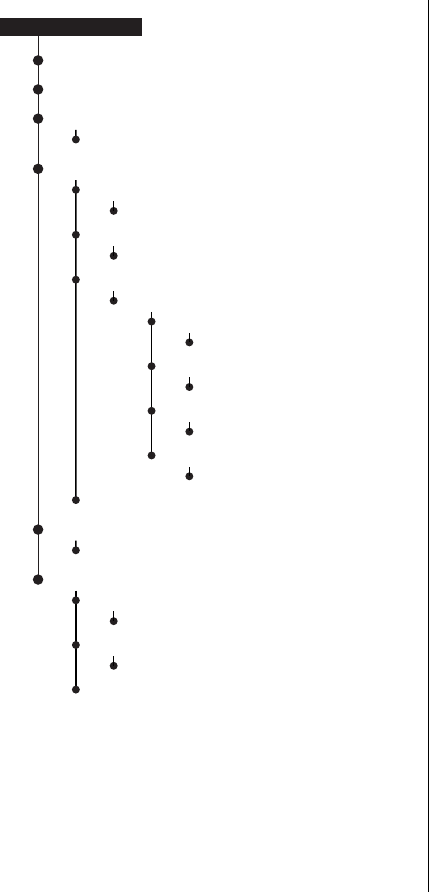
What’s on the Call Related Features Menu? 105
What’s on the Call Related Features
Menu?
Satellite
Mode
1 These features are network and subscription dependent.
2 These features are network and subscription dependent. They
are available only when the extended menu is activated.
Call Forwarding1
Show Battery Meter
Pending Call Drop
Call Related Features
Show Signal Strength
Forward All Voice Calls
Cancel All Forwarding
Forward When Unavailable
On/Off
Call Waiting1
Call Barring2
On/Off
Forward All Calls
On/Off
If No Answer
On/Off
Detailed Forwarding2
Forward Voice Calls
On/Off
If Not Reachable
On/Off
If Busy
On/Off
Bar Outgoing Calls
Change Bar Password
On/Off
Bar Incoming Calls
On/Off
On/Off
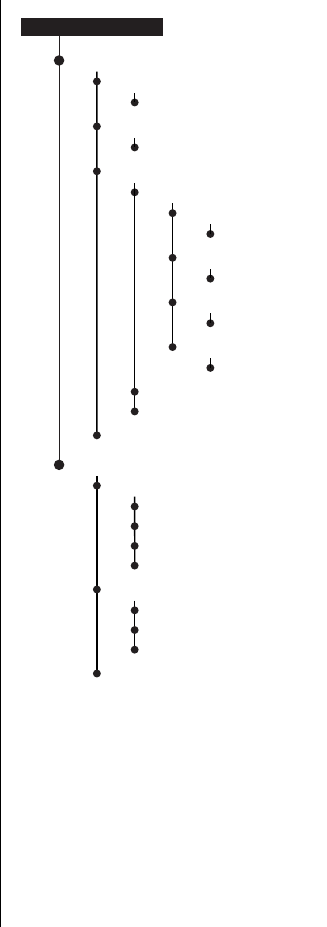
106 Using Calling Features
Cellular
Mode (GSM)
1 This feature is network and subscription dependent.
2 These features are network and subscription dependent. They
are available only when the extended menu is activated.
Cellular
Mode
(CDMA/
AMPS)
This menu is not available in CDMA/AMPS cellular
mode.
Call Forwarding1
Call Related Features
Forward All Voice Calls
Cancel All Forwarding
Forward When Unavailable
Call Barring2
On/Off
Forward All Calls
On/Off
If No Answer
On/Off
Detailed Forwarding2
Forward Voice Calls
On/Off
If Not Reachable
On/Off
If Busy
On/Off
Bar Outgoing Calls
Change Bar Password
On/Off
Bar Incoming Calls
On/Off
Forward Fax Calls
Forward Data Calls
Intl Calls
Intl Calls Except Home
All Calls
All Calls
When Roaming

What’s on the Call Related Features Menu? 107
Forwarding Calls When Unavailable
Use this feature when you can’t answer a call. You
must subscribe to this network feature through your
service provider(s).
Note: This feature behaves differently based on
your mode. Check your mode settings before using
this feature. See “Selecting a Mode” on page 173.
Satellite
Mode
To activate this feature in satellite mode:
1. Follow the steps in “Getting to Call
Forwarding...” to get to Forward When
Unavailable, and then press O to select.
2. Press M to scroll to On or Off, and then
press O to select.
•If you select On, continue with step 3.
•If you select Off, continue with step 5.
3. Press M to scroll to Voicemail or Other Number,
and then press O to select.
•If you select Voicemail, continue with step
5.
Tip:
If you have
not yet stored a
voicemail
number, go to
page 129 to
learn how.
•If you select Other Number, then you will see
Enter Number. Continue with step 4.
4. Enter the number you want calls forwarded
to, and then press O. Your phone takes a
moment to request the setting from the
network, then you will see Call Forward On.
5. Press and hold C to exit the menu.
Getting to Call Forwarding...
1. Press M until you see Call Related Features, and then
press O.
2. Press < to scroll to Call Forwarding, and then press O.
3. Press < to scroll to one of the features described below.

108 Using Calling Features
Cellular
Mode (GSM)
1. Follow the steps in “Getting to Call
Forwarding...” to get to Forward When
Unavailable, and then press O to select.
2. Press M to scroll to On or Off, and then
press O to select.
•If you select On, you will see Enter Number.
Continue with step 3.
•If you select Off continue with step 4.
3. Enter the number you want calls forwarded
to, and then press O. Your phone takes a
moment to request the setting from the
network, then you will see Call Forward On.
4. Press and hold C to exit the menu.
Cellular
Mode
(CDMA/
AMPS)
To activate Call Forwarding features in CDMA/
AMPS cellular mode, you must send a phone flash
along with the appropriate feature code provided
by your service provider. See “Sending a Flash” on
page 68 for more information.
To send a phone flash:
1. Press M while you are in a call. You will see
Flash Options followed by Select?
2. Press O. You will see Send Flash?
3. Enter the access code for the feature you
want to access, if necessary, and then
press O to send the flash.
or
Press C to cancel the flash.
Getting to Call Forwarding...
1. Press M until you see Call Related Features, and then
press O.
2. Press < to scroll to Call Forwarding, and then press O.
3. Press < to scroll to one of the features described below.

Forwarding All Your Calls 109
Forwarding All Your Calls
When you select this option, all your calls are
forwarded to the number you choose. Your phone
does not ring. You must subscribe to this network
feature through your service provider(s).
Satellite
Mode
To activate this feature in satellite mode:
1. Follow the steps in “Getting to Call
Forwarding...” to get to Forward All Calls, and
then press O to select.
2. Press M to scroll to either On or Off, and then
press O to select.
•If you select On, continue with step 3.
•If you select Off, continue with step 5.
3. Press M to scroll to Voicemail or Other Number,
and then press O to select.
Tip:
If you have
not yet stored a
voicemail
number, go to
page 129 to
learn how.
•If you select Voicemail, continue with step
5.
•If you select Other Number, then you will see
Enter Number. Continue with step 4.
4. Enter the number you want all your calls
forwarded to, and then press O.
Your phone takes a moment to request the
setting from the network, and then you will
see Call Forward On.
5. Press and hold C to exit the menu.

110 Using Calling Features
Cellular
Mode (GSM)
To activate this feature in GSM cellular mode:
1. Follow the steps in “Getting to Call
Forwarding...” to get to Forward All Calls, and
then press O to select.
2. Press M to scroll to either On or Off, and then
press O to select.
•If you select On, you will see Enter Number.
Continue with step 3.
•If you select Off, continue with step 4.
3. Enter the number you want all your calls
forwarded to, and then press O.
Your phone takes a moment to request the
setting from the network, then you will see
Call Forward On.
4. Press and hold C to exit the menu.
Cellular
Mode
(CDMA/
AMPS)
To activate this feature in CDMA/AMPS cellular
mode, see “Forwarding Calls When Unavailable” on
page 107.
Getting to Call Forwarding...
1. Press M until you see Call Related Features, and then
press O.
2. Press < to scroll to Call Forwarding, and then press O.
3. Press < to scroll to one of the features described below.

Using Detailed Call Forwarding 111
Using Detailed Call Forwarding
Detailed Call Forwarding lets you select the specific
situations when you want your calls forwarded. The
settings you select in Forward When Unavailable and
Forward All Calls override the settings you select
here.
You must subscribe to this network feature through
your service provider(s).
Note: This feature is available only when the
extended menus are activated. See “+ Activating
Extended Menus” on page 153 for more
information.
Voice Calls
Satellite
Mode
To activate this feature in satellite mode:
1. Follow the steps in “Getting to Call
Forwarding...” to get to Detailed Forwarding,
and then press O to select.
Tip:
For
information on
retrieving
messages, see
“Accessing
Messages” on
page 132.
2. Press M to scroll to Forward Voice Calls,
then press O to select.
3. Press M to scroll to the option you desire:
Forward All Voice Calls, If Busy, If No Answer,
or If Not Reachable.
4. Press O to select the displayed option.
5. Press M to scroll to either Voicemail or Other
Number, and then press O.
Tip:
If you have
not yet stored a
voicemail
number, go to
page 129 to
learn how.
•If you select Voicemail, continue with step
7.
•If you select Other Number, then you will see
Enter Number. Continue with step 6.
6. Enter the number you want calls forwarded
to, then press O. Your phone takes a
moment to request the setting from the
network, then displays Call Forward On.
7. Press and hold C to exit the menu.

112 Using Calling Features
Cellular
Mode (GSM)
To activate this feature in GSM cellular mode:
1. Follow the steps in “Getting to Call
Forwarding...” to get to Detailed Forwarding,
and then press O to select.
2. Press M to scroll to Forward Voice Calls, then
press O to select.
3. Press M to scroll to the option you desire:
Forward All Voice Calls, If Busy, If No Answer,
or If Not Reachable.
4. Press O to select the displayed option.
•If you select If Busy or If Not Reachable,
then your calls are automatically
forwarded to your Personal Mailbox.
Continue with step 6.
•If you select Forward All Voice Calls or If
No Answer, you will see Enter Number.
Continue with step 5.
5. Enter the number you want calls forwarded
to, then press O. Your phone takes a
moment to request the setting from the
network, then displays Call Forward On.
6. Press and hold C to exit the menu.
Cellular
Mode
(CDMA/
AMPS)
To activate this feature in CDMA/AMPS cellular
mode, see “Forwarding Calls When Unavailable” on
page 107.
Getting to Call Forwarding...
1. Press M until you see Call Related Features, and then
press O.
2. Press < to scroll to Call Forwarding, and then press O.
3. Press < to scroll to one of the features described below.

Using Detailed Call Forwarding 113
r
Fax and Data Calls
Satellite
Mode
The Forward Fax Calls and Forward Data Calls
features are only available in GSM cellular mode.
Cellular
Mode (GSM)
To forward a fax or data call from GSM Cellular
mode:
1. Follow the steps in “Getting to Call
Forwarding...” to get to Detailed Forwarding,
and then press O to select.
2. Press M to scroll to Forward Fax Calls or
Forward Data Calls and then press O to
select.
3. Press M to scroll to On or Off. If you select On
continue with step 4, otherwise continue with
step 5.
4. Enter the number you want calls forwarded
to, and then press O. Your phone takes a
moment to request the setting from the
network, and then displays Call Forward On.
5. Press and hold C to exit the menu.
Cellular
Mode
(CDMA/
AMPS)
To activate this feature in CDMA/AMPS cellular
mode, see “Forwarding Calls When Unavailable” on
page 107.

114 Using Calling Features
Canceling All Forwarding
Use this option to clear all Call Forwarding settings.
Satellite
Mode/
Cellular
Mode (GSM)
To cancel Call Forwarding settings:
1. Follow the steps in “Getting to Call
Forwarding...” to get to Cancel All Forwarding,
and then press O to select.
You will see Call Forward Off. All Call
Forwarding settings are now set to Off.
2. Press and hold C to exit the menu.
Cellular
Mode
(CDMA/
AMPS)
To activate this feature in CDMA/AMPS cellular
mode, see “Forwarding Calls When Unavailable” on
page 107.
Getting to Call Forwarding...
1. Press M until you see Call Related Features, and then
press O.
2. Press < to scroll to Call Forwarding, and then press O.
3. Press < to scroll to one of the features described below.
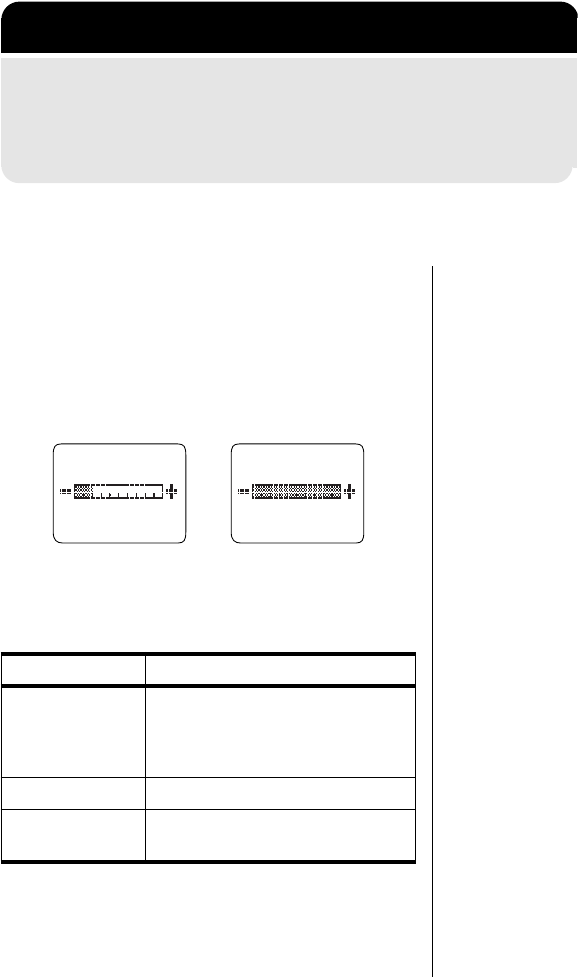
Using Detailed Call Forwarding 115
+
Showing the Battery Meter
Satellite
Mode
Use this feature to view the charge on your battery.
1. Follow the steps in “Getting to Call Related
Features...” to get to Show Battery Meter.
2. Press O to select. You will see the battery
meter fuel gauge. The more segments filled,
the greater your battery’s charge:
You may also see one of the following
messages:
3. Press and hold C to clear the display.
Cellular
Mode
This feature is only available from satellite mode.
Getting to Call Related Features...
1. Press M until you see Call Related Features, and then
press O.
2. Press < to scroll to one of the features described below. You
will see the feature name, followed by Select?.
Message Description
Not Available
The battery meter doesn’t appear
because a battery is not installed;
the phone is operating from
external power.
Charging Battery The battery is being charged
Fast Charge
Completed
The battery has completed
charging.
Battery
Quit?
Battery
Quit?
Low Charge High Charge

116 Using Calling Features
+
Showing Signal Strength
Satellite
Mode
Use this feature to check the strength of the signal
that your phone is receiving from the Iridium
satellite network.
1. Follow the steps in “Getting to Call Related
Features...” to get to Show Signal Strength.
2. Press O to select. You will see Checking
Signal....
If the antenna is not rotated, you will see
Rotate and Extend Antenna. Rotate and extend
the antenna to continue.
The signal strength indicator is located in the
upper left corner of the display:
rx
Signal strength is sampled every four to five
seconds; the indicator shows the average
strength for the last three samples. The more
segments displayed in the bar graph, the
stronger the signal. Five bars indicate full
signal strength. The indicator shows the
tower icon but no bars when the signal is
weak.
3. Press and hold C to exit the menu.
Cellular
Mode
This feature is only available from satellite mode.
Getting to Call Related Features...
1. Press M until you see Call Related Features, and then
press O.
2. Press < to scroll to one of the features described below. You
will see the feature name, followed by Select?.

+ Deactivating Pending Call Drop Signal 117
+
Deactivating Pending Call Drop
Signal
Satellite
Mode
Under rare circumstances, due to system
overcapacity or a satellite outage, a satellite may
not be available to take your call. When this
happens, your phone notifies you with a series of
three consecutive tones and displays Pending Call
Drop. The tones continue periodically until a new
satellite moves into range or the call is dropped.
To deactivate the alert tones:
1. Follow the steps in the “Getting to Call
Related Features...” to get to Pending Call
Drop, and then press O to select.
2. Press M to scroll to either On or Off, and then
press O to select.
3. Press and hold C to exit the menu.
Cellular
Mode
This feature only applies in satellite mode.

118 Using Calling Features
+
Activating Call Waiting
Satellite
Mode
Subscribers to call waiting can use this feature to
decide whether or not to take incoming calls while
on the line.To activate call waiting:
1. Follow the steps in “Getting to Call Related
Features...” to get to Call Waiting, and then
press O to select.
2. Press M to scroll to On or Off, and then
press O to select the desired option.
3. Press and hold C to exit the menu.
For information on using call waiting, see “Using
Call Waiting” on page 64.
Cellular
Mode
(CDMA/
AMPS)
CDMA/AMPS users do not have to activate Call
Waiting through the menu system. For information
on using Call Waiting in CDMA/AMPS cellular
mode, see “Using Call Waiting” on page 64.
Cellular
Mode (GSM)
This feature is not available in GSM cellular mode.
Getting to Call Related Features...
1. Press M until you see Call Related Features, and then
press O.
2. Press < to scroll to one of the features described below. You
will see the feature name, followed by Select?.

+ Deactivating Pending Call Drop Signal 119
Restricting Calls with Call Barring
You can use call barring to restrict both incoming
and outgoing calls. Call barring is useful if you are
loaning your phone to others or when you wish to
control incoming calls. When you change one of
your call barring settings, your phone takes a few
seconds to request the setting from the network.
Note: This feature is available only when the
extended menus are activated. See “+ Activating
Extended Menus” on page 153 for more
information.
Bar Outgoing Calls
This setting enables you to receive incoming calls
but prevents outgoing calls.
Satellite
Mode
To activate this feature in satellite mode:
1. Follow the steps in “Getting to Call
Barring...” to get to Bar Outgoing Calls, and
then press O to select.
2. Press M to scroll to On or Off, and then
press O to select. You will see Enter
Password.
Tip:
Your
service
provider gives
you a bar
password.
3. Enter your bar password, and then
press O. You will see Completed.
4. Press and hold C to exit the menu.
Getting to Call Barring...
1. Press M until you see Call Related Features, and then press
O.
2. Press < to scroll to Call Barring, and then press O.
3. Press < to scroll to one of the features described below. You
will see the feature name, followed by Select?.

120 Using Calling Features
Cellular
Mode (GSM)
To activate this feature in GSM cellular mode:
1. Follow the steps in “Getting to Call
Barring...” to get to Bar Outgoing Calls, and
then press O to select.
2. Press M to scroll to Intl Calls, Intl Calls
Except Home, All Calls, or Off, and then press
O to select. You will see Enter Password.
3. Enter your bar password, and then
press O. You will see Completed.
4. Press and hold C to exit the menu.
Cellular
Mode
(CDMA/
AMPS)
This feature is not available in CDMA/AMPS cellular
mode.
Getting to Call Barring...
1. Press M until you see Call Related Features, and then press
O.
2. Press < to scroll to Call Barring, and then press O.
3. Press < to scroll to one of the features described below. You
will see the feature name, followed by Select?.

+ Deactivating Pending Call Drop Signal 121
Bar Incoming Calls
This setting allows you to place calls, but refuses
incoming calls. Callers hear a recording telling
them you are unavailable.To be sure not to miss a
call see “Using Detailed Call Forwarding” on
page 111.
Satellite
Mode
To activate this feature in satellite mode:
1. Follow the steps in “Getting to Call
Barring...” to get to Bar Incoming Calls, and
then press O to select.
2. Press M to scroll to On or Off, and then
press O to select.
Tip:
Your
service
provider gives
you a bar
password.
You will see Enter Password.
3. Enter your bar password, and then
press O. You will see Completed.
4. Press and hold C to exit the menu.
Cellular
Mode (GSM)
To activate this feature in GSM cellular mode:
1. Follow the steps in “Getting to Call
Barring...” to get to Bar Incoming Calls, and
then press O to select.
Tip:
Your
service
provider gives
you a bar
password.
2. Press M to scroll to When Roaming, All Calls,
or Off, and then press O to select. You will
see Enter Password.
3. Enter your bar password, and then
press O. You will see Completed.
4. Press and hold C to exit the menu.
Cellular
Mode
(CDMA/
AMPS)
This feature is not available in CDMA/AMPS cellular
mode.

122 Using Calling Features
Change Bar Password
Satellite
Mode/
Cellular
Mode (GSM)
When you subscribe to call barring, your service
provider gives you a four-digit bar password. Use
this feature to change it to something easy to
remember.
1. Follow the steps in “Getting to Call
Barring...” to get to Change Bar Password, and
then press O to select. You will see Enter
Password.
Tip:
If you are
changing the
password for
the first time,
use the
password
supplied by
your service
provider.
2. Enter your bar password, and then
press O. You will see Enter New Password.
3. Enter the new bar password, and then
press O.
4. Enter the new bar password again to
confirm, and then press O.
5. Press and hold C to exit the menu.
Cellular
Mode
(CDMA/
AMPS)
This feature is not available in CDMA/AMPS cellular
mode.
Getting to Call Barring...
1. Press M until you see Call Related Features, and then press
O.
2. Press < to scroll to Call Barring, and then press O.
3. Press < to scroll to one of the features described below. You
will see the feature name, followed by Select?.

Using Message Services 123
Using Message Services
Did you know that you can receive voicemail and fax notification
messages and numeric and text messages through your Personal
Mailbox service—wherever in the world you may be? Wherever you are,
you’ll have instant reference to all your communication.
Keep in Mind:
Message Services are only available in satellite mode
and GSM cellular mode unless otherwise indicated.
What You Will Learn
•
checking your voicemail messages
•
reading, saving and deleting messages
Keep in Mind:
If you see a + next to a feature, the phone must be in
satellite mode. If you see a r next to a feature, the phone must be in
cellular mode. See “Selecting a Mode” on page 173 to change modes.

124 Using Message Services
Entering the Messages Menu
To enter the Messages menu:
1. Press ? to access the Message submenu
directly, and then go on to step 4.
or
Press M to access the Options Menu and
then go on to step 2.
2. Press M to scroll forward.
or
Press < to scroll backward or forward.
3. Press O when you see:
4. Press M to scroll through the submenu.
or
Press < to scroll backward or forward
through the submenu.
12:00
Messages
View Options?
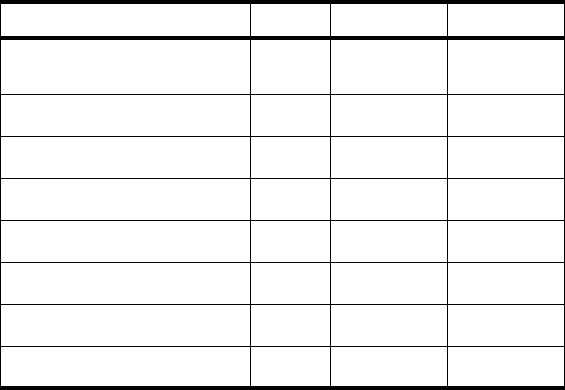
Using Message Services 125
Messages Services Feature Overview
The feature selection in the Messages menu varies depending on your
mode setting. The table below shows the features available in each
mode. See “Selecting a Mode” on page 173 for more information on
changing modes.
Feature Satellite GSM CDMA/AMPS
Call a Number Embedded in the
Message •
Check Voice Mail •
Delete a Message ••
Go to Next Message ••
Message Notification ••
Read A New Message ••
Read A Stored Message ••
Store Voice Mail Number •

126 Using Message Services
What’s on the Messages Menu?
Satellite
Mode
Voicemail Number
Message Settings
Received Messages
Call Voicemail
Go to Next Message
Delete Message
Return Call
Messages Menu

Using Message Services 127
Cellular
Mode
(GSM)
Cellular
Mode
(CDMA/
AMPS)
This menu is not available in CDMA/AMPS cellular
mode.
Received Messages
Go to Next Message
Delete Message
Messages Menu

128 Using Message Services
1-2
: Getting to Message Features...
1.
Press ? to enter the Messages menu.
2.
Press M to scroll to one of the features described below. You
will see the feature name, followed by Select?.
+
Checking Your Voicemail
Satellite
Mode
This feature makes checking your voicemail simple.
1. Follow the steps in “1-2: Getting to Message
Features...” to get to Call Voicemail.
2. Press O to select. You will see your
voicemail number followed by Calling.
If you have not previously stored a Voicemail
Number, then you will see No Number Available.
See page 129 to enter a number.
Cellular
Mode
This feature is not available in cellular mode.

Using Message Services 129
+
Storing Your Voicemail Number
Satellite
Mode
To store a voicemail number:
1. Follow the steps in “1-2: Getting to Message
Features...” to get to Message Settings, and
then press O to select.
Tip:
Use
pause dialing
to store your
voicemail
access and
PIN numbers
together. See
“Using
Pauses in
Numbers” on
page 85.
2. Press O to select Voicemail Number. You will
see Enter Voicemail Number followed by your
current voicemail number. If this is the first
time you have stored a number, continue with
to step 4.
3. Press C to clear one digit at a time, or
press and hold C to erase the entire
number.
4. Enter the new number, and then press O.
You will see Completed.
5. Press and hold C to exit the menu.
Cellular
Mode
This feature is not available in cellular mode.

130 Using Message Services
Managing Your Messages
How Your Phone Notifies You of
Messages
If your phone is powered on, it notifies you of
received messages in the following ways:
• An alert sounds and/or the phone vibrates.
Your phone beeps and/or vibrates three times
to inform you of an incoming message. See
page 141 to set your phone’s alert.
• The message icon (o) is displayed.
• The message is displayed immediately if
the message is a fax or voicemail notification
message. The message remains on the
display for several seconds.
or
MM
MMee
eess
ssss
ssaa
aagg
ggee
ee
RR
RRee
eeaa
aadd
dd
NN
NNoo
ooww
ww??
?? is displayed if the message
is an alphanumeric, text message of up to
160 characters. For more information see
“Read a New Message” on page 132.
How Messages Are Stored
Your phone stores all messages on your SIM chip.
The total number of messages that you can store
depends on your service provider.
If the message indicator is flashing, your SIM chip is
full. See “Delete Messages” on page 133 to make
room for the new message.

Using Message Services 131
What Messages Contain
You can receive short text or numeric messages in
your Personal Mailbox. Text messages may contain
up to 160 characters. Numeric messages—typically
phone numbers—may contain up to 20 digits.
Your Personal Mailbox works along with Call
Forwarding. For more information, refer to “Personal
Mailbox” on page 57.
Messages contain multiple screens with the
following information:
•the message
•the date and time the message was sent
•the phone number (if available) from which
the message was sent

132 Using Message Services
1-2-3
: Accessing Your Messages...
1.
Press ? to access the Messages menu.
2.
Press < to scroll to Received Messages, and then press O to
select.
3.
Press < to scroll to one of the features described below.
Accessing Messages
Satellite
Mode/
Cellular
Mode
(GSM)
Read a New Message
Note: If you are in cellular mode and you remove
your GSM Cellular Cassette you are not able to
access your messages. Switch to satellite mode or
reinsert your GSM Cellular Cassette.
Notification Messages
When you receive an incoming fax or voicemail
notification message, it automatically scrolls across
your screen. You can:
• Press O to store it on your SIM chip.
• Press C to delete it.
Text Messages
When you receive a new alphanumeric message,
you will see Message Read Now? To read it:
1. Press O and continue with step 2.
or
Press C to read the message later. See
“Read a Stored Message” on page 133."
2. Press M or < to move forward through a
message one screen at a time.
3. Press O to access options for that entry,
then proceed to page 134.
Cellular
Mode
(CDMA/
AMPS)
This feature is not available in CDMA/AMPS cellular
mode.

Using Message Services 133
Read a Stored Message
Satellite
Mode/
Cellular
Mode
(GSM)
To read a stored message:
1. Follow the steps in “1-2-3: Accessing Your
Messages...” to enter the message center. If
you have messages you will see the number
of messages stored. If you do not have any
messages, you will see No Messages.
2. Press M or < to move forward through a
message one screen at a time.
3. Press O to access options for that entry,
and then proceed to page 134.
or
Press and hold C to exit the menu.
Cellular
Mode
(CDMA/
AMPS)
This feature is not available in CDMA/AMPS cellular
mode.
Delete Messages
Satellite
Mode/
Cellular
Mode
(GSM)
Use this option to make room for new messages:
1. Follow the steps in “Go to the Next
Message” above until you see the message
you want to delete, and then press O.
2. Press M until you see Delete Message, and
then press O. You will see Message Deleted.
3. Press and hold C to exit the menu.
Cellular
Mode
(CDMA/
AMPS)
This feature is not available in CDMA/AMPS cellular
mode.

134 Using Message Services
Go to the Next Message
Satellite
Mode/
Cellular
Mode
(GSM)
To go to the next message:
1. Follow the steps in “Read a Stored
Message” on page 133.
2. Press M until you see Go To Next Message and
then press O.
You will see the next message. If you are at
the end of your message list you will see the
first message again.
3. Press M or < to move forward through a
message one screen at a time.
4. Repeat steps 2 to 3 until you have read all
your messages.
5. Press and hold C to exit the menu.
Cellular
Mode
(CDMA/
AMPS)
This feature is not available in CDMA/AMPS cellular
mode.
+
Return a Call
Satellite
Mode
A callback number appears in quotes within the
message. If one is enclosed, you can instantly place
a call to that number. If a callback number is not
included, your phone selects the first number in the
message.
1. Follow the steps in “Go to the Next
Message” on page 134 to display the desired
message, and then press O.
2. Press M until you see Return Call, and then
press O. You will see the number followed
by Call?.
3. Press O to place a call to that number. You
will see the number followed by Calling.
Cellular
Mode
This feature is not available in cellular mode.

Customizing Phone Features 135
Customizing Phone Features
Once you’re comfortable with the basic features of your new phone,
use this chapter to set your phone up the way you like it.
What You Will Learn
•adjusting your phone’s ringer volume
•choosing from ten different ringer styles
•choosing your phone’s keypad tones
•locking and unlocking your phone
•changing and setting codes for security
•setting home and away time and date
•resetting or clearing your phone’s settings
•selecting the language displayed by your phone
Keep in Mind: If you see a + next to a feature, the phone must be in
satellite mode. If you see a r next to a feature, the phone must be in
cellular mode. See “Selecting a Mode” on page 173 to change modes.

136 Customizing Phone Features
Entering the Phone Setup Menu
To enter the Phone Setup menu (satellite mode and
CDMA/AMPS cellular mode only):
1. Press M to open the Options Menu.
2. Press M to scroll forward.
or
Press < to scroll backward or forward.
3. Press O when you see:
4. Press M to scroll through the submenu.
or
Press < to scroll backward or forward
through the submenu.
12:00
Phone
Setup
View Options?
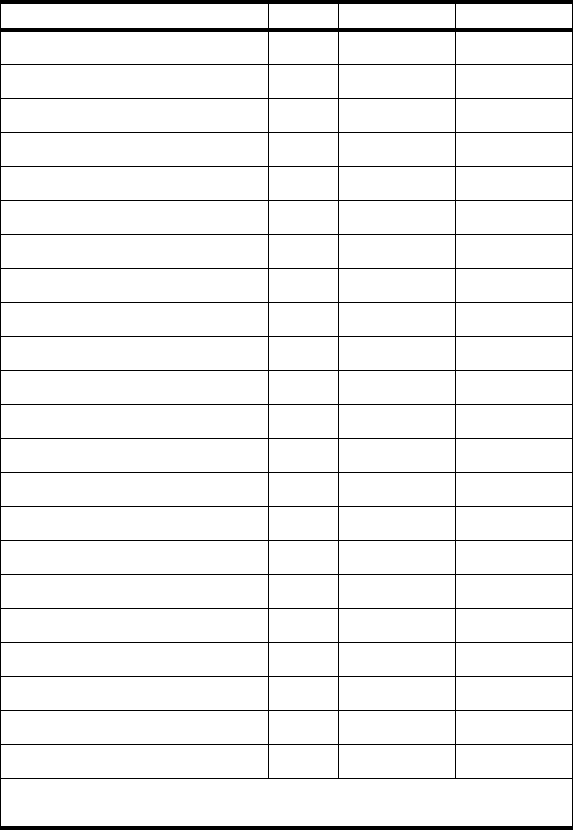
Customizing Phone Features 137
Phone Setup Feature Overview
The Phone Setup feature selection varies depending on your mode
setting. The table below shows the features available in each mode.
See “Selecting a Mode” on page 173 for more information on changing
modes.
Feature Satellite GSM CDMA/AMPS
Activate Extended Menus •
Activate/Deactivate PIN Code •
Adjust Ringer Volume** •••
Change Clock Display •
Change PIN Code •
Change Unlock Code •
Change/Unblock PIN2 Code* •
Emergency Number Mapping •
International Prefix Mapping •
Lock the Phone •
Master Clear/Master Reset •
Review Phone Settings •
Select Display Language •
Select Keypad Tones •
Select System Mode •
Set Phone to Ring or Vibrate •
Set Ringer Tone •
Set Time and Date Format •
Switch Between Numbers •
Unblock PIN Code* •••
Unlock the Phone* •••
View/Set Time and Date •
* These features are not accessed through the menu system
** This feature is not available through the menu in cellular mode.

138 Customizing Phone Features
What’s on the Phone Setup Menu?
Satellite
Mode
1 This feature is available when the Extended Menu is active.
Status Review
Master Reset
Master Clear
Automatic Lock
Lock Now
Change Unlock Code
Phone Lock
Ring or Vibrate
Set Ringer Tone
Require SIM Card PIN
On/Off
Change SIM PIN Code
Change SIM PIN2 Code
New Security Code
Extended Menus
Show Time and Date1
Set Time and Date1
Set Time Format1
Language Selection1
Adjust Ring Volume
No Tones
Normal Tones
Single Tone
Select Key Pad Tones1
Phone Status1
Phone Setup
English
Türkçe
No Ring or Vibrate
Ring Only
Vibrate Only
Vibrate Then Ring
Standard Tone
High Tone
Show Home Time & Date
Show Away Time & Date
Set Home Time & Date
Set Away Time & Date
12 Hour
24 Hour
On/Off
On/Off
Change Clock
Away Time
Home Time

Customizing Phone Features 139
Cellular
Mode
(CDMA/
AMPS)
Cellular
Mode
(GSM)
This menu is not available in GSM cellular mode.
Phone Setup
Emergency Mapping
System Scan
Intl. Dialing Prefix
Std A/B
Scan B/A
Change Number
Scan A
Scan A/B
Scan B
Preferred SIDs
Std B/A
Home Only

140 Customizing Phone Features
1-2:
Getting to Phone Setup...
1.
Press M until you see Phone Setup, and then press O.
2.
Press < to scroll to one of the features described below.
You will see the feature name, followed by Select?.
Adjusting the Ringer Volume
Satellite
Mode
Use this feature to adjust the volume of the ringer.
The phone sounds the new volume level as you
adjust it.
1. Follow the steps in “1-2: Getting to Phone
Setup...” to get to Adjust Ring Volume, and then
press O to select.
2. Increase the volume by pressing the upper
volume key.
Tip:
You can
also press
E
, and then
the up or
down volume
key.
or
Decrease the volume by pressing the lower
volume key.
3. Press and hold C to exit the menu.
Keep in Mind: The adjustments you make here
apply to cellular mode as well.
Cellular
Mode
To adjust the ringer volume in cellular mode:
Press E and then the up or down volume
key.
Keep in Mind: The adjustments you make here
apply to satellite mode as well.

Customizing Phone Features 141
+
Setting the Phone to Ring or Vibrate
Satellite
Mode
This feature is ideal for situations where a ringing
phone is inappropriate or in noisy places where you
might not hear the ringer. The vibrating alert notifies
you of incoming calls by discreet vibrations.
1. Follow the steps in “1-2: Getting to Phone
Setup...” to get to Ring or Vibrate, and then
press O to select.
Tip:
If you
select
Vibrate
then Ring
, your
phone
vibrates for
two cycles,
and then
rings.
2. Press M to scroll to Ring Only, Vibrate Only,
Vibrate then Ring, or No Ring or Vibrate, and
then press O to select the displayed option.
You will see Completed.
3. Press and hold C to exit the menu.
Cellular
Mode
You cannot set this feature in cellular mode. You
must set this feature from satellite mode. However,
the settings you select in satellite mode will apply in
cellular mode.

142 Customizing Phone Features
1-2:
Getting to Phone Setup...
1.
Press M until you see Phone Setup, and then press O.
2.
Press < to scroll to one of the features described below.
You will see the feature name, followed by Select?.
+
Setting the Ringer Tone
Satellite
Mode
Select your favorite tone and you’ll recognize your
phone’s ring immediately—even in a crowd.
1. Follow the steps in “1-2: Getting to Phone
Setup...” to get to Set Ringer Tone, and then
press O to select.
2. Press M to scroll through the options
Standard Tone, Single Ring Tone, British Tone,
French Tone, German Tone, Bravo Tone, Three Ring
Tone, Siren Tone, Quick Tone, or High Tone.
You hear a one ring cycle demonstration.
3. Press O to select the desired option.
4. Press and hold C to exit the menu.
Cellular
Mode
You cannot set this feature in cellular mode. You
must set this feature from satellite mode. However,
the settings you select in satellite mode will apply in
cellular mode.

Customizing Phone Features 143
+
Setting the Keypad Tones
Satellite
Mode
Choose the sounds your phone makes when its
keys are pressed.
1. Follow the steps in “1-2: Getting to Phone
Setup...” to get to Select Keypad Tones, and
then press M to select.
2. Press M to choose Normal Tones, Single Tone,
or No Tones, and then press O.
3. Press and hold C to exit the menu.
Cellular
Mode
You cannot set this feature in cellular mode. You
must set this feature from satellite mode. However,
the settings you select in satellite mode will apply in
cellular mode.

144 Customizing Phone Features
1-2-3: Getting to Phone Lock...
1.
Press M until you see Phone Setup, and then press O.
2.
Press < to scroll to Phone Lock, and then press O.
3.
Press < to scroll to one of the features described below.
Locking and Unlocking Your Phone
These features can help you prevent unwanted use
of your phone.
+
Lock the Phone Automatically
Satellite
Mode
Use this feature to set your phone to lock itself every
time it is powered on.
1. Follow the steps in “1-2-3: Getting to Phone
Lock...” to get to Automatic Lock, and then
press O to select.
2. Press M to choose On or Off, and then press
O to select. You will see Completed.
3. Press and hold C to exit the menu.
Cellular
Mode
You cannot set this feature in cellular mode. You
must set this feature from satellite mode. However,
the settings you select in satellite mode will apply in
cellular mode.
+
Lock the Phone Instantly
Satellite
Mode
Use this feature to lock your phone immediately.
1. Follow the steps in “1-2-3: Getting to Phone
Lock...” to get to Lock Now.
2. Press O to select. You will see: Locked.
Cellular
Mode
You cannot set this feature in cellular mode. You
must set this feature from satellite mode. However,
the settings you select in satellite mode will apply in
cellular mode.

Customizing Phone Features 145
Unlock the Phone
Tip:
The
factory default
unlock code
is 1234.
1. Enter unlock code. Enter your four-digit
phone unlock code.
2. Press O.
+
Change the Unlock Code
Satellite
Mode
The lock code is originally set to 1234. You should
change it as soon as possible.
Tip:
The
factory default
security code
is
000000.
1. Follow the steps in “1-2-3: Getting to Phone
Lock...” to get to Change Unlock Code, and then
press O to select. You will see Enter Security
Code.
2. Enter security code. Enter your six-digit
security code. You will see your current lock
code and Enter Phone Unlock Code.
3. Press C to clear one digit at a time, or
press and hold C to clear all the digits.
4. Enter new code. Enter a new four-digit
unlock code, and then press O. You will see
Phone Lock and the new lock code.
5. Press and hold C to exit the menu.
Cellular
Mode
You cannot change this feature in cellular mode. You
must change this feature from satellite mode.
However, the changes you select in satellite mode
will apply in cellular mode.

146 Customizing Phone Features
1-2-3:
Getting to Require SIM Card PIN...
1.
Press M until you see Phone Setup, and then press O.
2.
Press < to scroll to Require SIM Card PIN, and then
press O.
3.
Press < to scroll to one of the features described below.
You will see the feature name, followed by View Options?.
Protecting the SIM chip
You can use a PIN code to protect the information
stored on your SIM chip even when it is inserted into
someone else’s phone.
Satellite
Mode
+
Activate and Deactivate the SIM
chip PIN
When you activate the SIM code, your phone
requests the code whenever the phone is powered
on. To change this setting, you need to enter the PIN
that your service provider gave you.
1. Follow the steps in “1-2-3: Getting to
Require SIM Card PIN...”
2. Press M to scroll On or Off, and then press
O. You will see Enter PIN.
3. Enter PIN code. Enter the 4- to 8-digit code
your service provider gave you, and then
press O. You will see Completed.
4. Press and hold C to exit the menu.
Cellular
Mode
You cannot activate this feature in cellular mode.
You must activate this feature from satellite mode.
However, once you activate this feature in satellite
mode, it will be active in cellular mode as well.

Customizing Phone Features 147
+
Change the SIM PIN Code
Satellite
Mode
To choose your own PIN code:
1. Follow the steps in “1-2-3: Getting to
Require SIM Card PIN...” to get to Change SIM
PIN Code, and then press O to select. You will
see Enter Old PIN.
2. Enter the current PIN code, and then press
O. You will see Enter New PIN.
3. Enter a new PIN code, and then press O.
You will see Repeat New PIN.
4. Re-enter the new code, and then press O
again. You will see Completed.
5. Press and hold C to exit the menu.
Cellular
Mode
You cannot change this feature in cellular mode. You
must change this feature from satellite mode.
However, the changes you make in satellite mode
will apply in cellular mode.
Unblock the PIN Code
If your PIN number is entered incorrectly three times
in a row, Blocked appears in the display. You need to
enter a PIN unblocking key (PUK), which you can
obtain from your service provider. Use the following
key sequence to unblock your phone:
1. Press *, *, 0, 5, *.
2. Enter unblocking key. Enter the 8-digit
unblocking key, and then press O.
3. Enter a new PIN code, and then press O.
4. Re-enter the new PIN code, and then
press O.
1-2:
Getting to Phone Setup
Features...

148 Customizing Phone Features
1-2:
Getting to Phone Setup...
1.
Press M until you see Phone Setup, and then press O.
2.
Press < to scroll to one of the features described below.You
will see the feature name, followed by Select?.
Managing Other Security Settings
Your phone includes other security features:
•a SIM PIN2 code for accessing Fixed Dialing
settings and other subscription-dependent
features
•a security code controls access to security
and other menu options
+
Change the SIM PIN2 Code
Satellite
Mode
Your SIM PIN2 code is used to access Fixed Dialing
settings. This four- to eight-digit code is issued to
you when you subscribe to the feature. Use this
feature to choose a new code.
1. Follow the steps in “1-2: Getting to Phone
Setup...” to get to Change SIM Card PIN2 Code,
and then press O to select. You will see
Enter Old PIN2.
2. Enter the current PIN2 code, and then
press O. You will see Enter New PIN2.
3. Enter new PIN2 code, and then press O.
You will see Repeat New PIN2.
4. Re-enter the new PIN2 code, and then
press O again. You will see Completed.
5. Press and hold C to exit the menu.
Cellular
Mode
You cannot change this feature in cellular mode. You
must change this feature from satellite mode.
However, the changes you make in satellite mode
will apply in cellular mode.

Customizing Phone Features 149
+
Unblock the PIN2 Code
Satellite
Mode
If your old PIN2 number is entered incorrectly three
times in a row, Blocked appears in the display. You
needs to enter a PIN unblocking key (PUK), which
you can obtain from your service provider.
1. Press *, *, 0, 5, 2, *.
2. Enter unblocking key. Enter the 8-digit
unblocking code, and then press O. Your
service provider supplies this code.
3. Enter a new PIN2 code, and then press O.
4. Re-enter the new PIN2 code, and then
press O.
Cellular
Mode
You cannot unblock the PIN2 code from cellular
mode.
+
Change the Security Code
Satellite
Mode
The security code is your phone’s primary security
number. You use it to reset your phone to its default
settings and prevent access to your phone book. It
is originally set to 000000.
1. Follow the steps in the “1-2: Getting to
Phone Setup...” to get to New Security Code,
and then press O to select. You will see
Enter Security Code.
2. Enter the current security code, and then
press O. You will see Enter New Security
Code.
3. Enter a new security code, and then press
O. You will see Secur. Code and the six-digit
number selected.
4. Press and hold C to exit the menu.
Cellular
Mode
You cannot change this feature in cellular mode.
However, the changes you make to this feature from
satellite mode will apply in cellular mode.

150 Customizing Phone Features
1-2:
Getting to Phone Setup...
1.
Press M until you see Phone Setup, and then press O.
2.
Press < to scroll to one of the features described below.You
will see the feature name, followed by Select?.
+
Managing Time and Date Settings
+
View the Time and Date
Satellite
Mode
Use this feature to view the current time and date in
one of two time zones.
1. Follow the steps in “1-2: Getting to Phone
Setup...” to get to Show Time and Date, and then
press O to select.
2. Press M to choose Show Home Time and Date or
Show Away Time and Date, and then press O.
You will see the current time and date for the
location selected in display.
3. Press any key to clear the time and date from
the display and return to the menu.
4. Press and hold C to exit the menu.
Cellular
Mode
This feature is not available in cellular mode.

Customizing Phone Features 151
+
Change the Time Displayed
Satellite
Mode
Use this feature to determine which time is
displayed on your real time clock indicator.
1. Follow the steps in “1-2: Getting to Phone
Setup...” to get to Show Time and Date, and then
press O to select.
2. Press M to scroll to Change Clock, and then
press O.
3. Press M to scroll to either Home Time or Away
Time, and then press O to select.
4. Press and hold C to exit the menu.
Cellular
Mode
This feature is not available in cellular mode.
+
Set the Time Format
Satellite
Mode
You can choose a12-hour or 24-hour time format.
1. Follow the steps in “1-2: Getting to Phone
Setup...” to get to Set Time Format, and then
press O.
2. Press M to choose either 12-hour or
24-hour, and then press O to select.
3. Press and hold C to exit the menu.
Cellular
Mode
This feature is not available in cellular mode.

152 Customizing Phone Features
1-2:
Getting to Phone Setup...
1.
Press M until you see Phone Setup, and then press O.
2.
Press < to scroll to one of the features described below.You
will see the feature name, followed by Select?.
+
Set the Time and Date
Satellite
Mode
To make it easy to check the local time when you
travel, your phone can save the current time and
date for two different time zones.
Tip:
The time
displayed
(home or
away) on the
real time
clock
indicator is
the one you
selected on
page 151.
1. Follow the steps in “1-2: Getting to Phone
Setup...” to get to Set Time and Date, and then
press O to select.
2. Press M to choose Set Home Time & Date or
Set Away Time & Date, and then press O. You
will see Enter Time and the time currently set.
3. Press O to accept the displayed time.
or
Enter the time in 24-hour format, and then
press O. You will see Enter Date and the
date currently set.
4. Press O to accept the displayed date. You
will see Completed.
or
Enter the date in day(dd)-month(mm)-
year(yy) form and then press O. You will see
Completed.
5. Press and hold C to exit the menu.
Cellular
Mode
This feature is not available in cellular mode.

Customizing Phone Features 153
+
Activating Extended Menus
Satellite
Mode
This feature activates and deactivates the Extended
Menus. See page 192 to learn how Extended
Menus can make your phone even simpler to use.
1. Follow the steps in “1-2: Getting to Phone
Setup...” to get to Extended Menus, and then
press O to select.
2. Press M to choose On or Off, and then press
O. You will see Completed.
3. Press and hold C to exit the menu.
Press and hold M to activate the extended menus
temporarily. The extended menus are deactivated
when you exit the Options Menu.
Cellular
Mode
This feature is not available in cellular mode. You will
see all of the available cellular menu options when
you are in cellular mode, regardless of whether this
feature is active or not.

154 Customizing Phone Features
1-2:
Getting to Phone Setup...
1.
Press M until you see Phone Setup, and then press O.
2.
Press < to scroll to one of the features described below.You
will see the feature name, followed by Select?.
+
Selecting the Display Language
Satellite
Mode
Your phone contains 21 languages. These
languages are (in alphabetical order): Chinese
(Simplified), Chinese (Traditional), Czech, Danish,
Dutch, English, Finnish, French, German, Greek,
Hungarian, Italian, Japanese, Korean, Norwegian,
Polish, Portuguese, Russian, Spanish, Swedish, and
Turkish.
Use this feature to select the language in which your
phone displays menus and messages.
1. Follow the steps in “1-2: Getting to Phone
Setup...” to get to Language Selection, and then
press O to select.
2. Press M to scroll through the choices, and
then press O to select the displayed option.
3. Press and hold C to exit the menu.
If you accidentally change the language of your
phone’s display, press and hold the C key to return
to the idle display, then press M 2 6 O to
return directly to the language selection submenu.
Cellular
Mode
You cannot select this feature in cellular mode. You
must select this feature from satellite mode.
However, the selection you make will apply in
cellular mode.

Customizing Phone Features 155
1-2-3:
Getting to Phone Status...
1.
Press M until you see Phone Setup, and then press O.
2.
Press < to scroll to Phone Status, and then press O.
3.
Press < to scroll to one of the features described below.
+
Managing Your Phone’s Settings
View all your phone’s settings that have changed
from their defaults, and reset them to their original
settings if you like.
+
Review the Phone’s Settings
Satellite
Mode
Use this feature to review but not change your
phone’s settings.
Keep in Mind: This feature does not show you the
settings for your cellular mode-specific features.
1. Follow the steps in “1-2-3: Getting to Phone
Status...” to get to Status Review, and then
press O
2. Press M to scroll through the list of all the
menu items you have changed.
3. Press and hold C to exit the menu.
Cellular
Mode
This feature is not available in cellular mode.

156 Customizing Phone Features
1-2-3:
Getting to Phone Status...
1.
Press M until you see Phone Setup, and then press O.
2.
Press < to scroll to Phone Status, and then press O.
3.
Press < to scroll to one of the features described below.
+
Reset Options to Factory Defaults
Use the Master Reset option to reset all settings to
their original default settings. The Master Reset
option:
•resets audible call timers, the in-call display
meter, and the automatic lock
•resets Extended Menus to default setting and
return language selection to original
•restores keypad tones to normal, ringer tones
to standard, and the volume level to the
middle of its range
•reset cellular mode (CDMA/AMPS)
emergency number and international prefix
•resets mode selection (this may cause the
phone to switch modes)
Satellite
Mode
To reset all settings:
1. Follow the steps in “1-2-3: Getting to Phone
Status...” to get to Master Reset, and then
press O to select. You will see
Enter Security Code.
Tip:
The
factory default
security code
is 000000.
2. Enter your six-digit security code. You will
see Reset Complete.
3. Press and hold C to exit the menu.
Cellular
Mode
You cannot reset your settings from cellular mode.
However, when you reset your setting from satellite
mode, you cellular cassette settings are reset as
well.

Customizing Phone Features 157
+
Clear All Stored Information
The Master Clear option resets the same items as
Master Reset, plus the following:
•clear phone book entries from phone memory
(not from SIM memory)
•clear last calls made list
•reset resettable call timers
Master Clear does not clear the:
•fixed dial list
•my number(s) list
•received messages list
Satellite
Mode
To clear the settings:
1. Follow the steps in “1-2-3: Getting to Phone
Status...” to get to Master Clear, and then
press O to select. You will see Enter
Security Code.
Tip:
The
factory default
security code
is 000000.
2. Enter your six-digit security code.You will
see Reset Complete.
3. Press and hold C to exit the menu.
Cellular
Mode
You cannot clear your settings from cellular mode.
However, when you clear your setting from satellite
mode, you cellular cassette settings are cleared as
well.

158 Customizing Phone Features
1-2:
Getting to Phone Setup...
1.
Press M until you see Phone Setup, and then press O.
2.
Press < to scroll to one of the features below.You will see
the feature name, followed by Select?.
r
Cellular Mode Settings
r
Set Up the Emergency Number
Satellite
Mode
This feature does not apply to satellite mode. You
will not see this menu option in this mode.
Cellular
Mode
(CDMA/
AMPS)
This feature allows you to dial 112 to make an
emergency call even if your local emergency
number is not 112. The default number is 911.
1. Follow the steps in “1-2: Getting to Phone
Setup...” to get to Emergency Mapping, and then
press O to select. You will see Enter Number?
2. Enter number. Enter your local emergency
number and then press O.
3. Press and hold C to exit the menu.
Cellular
Mode
(GSM)
This feature does not apply to GSM cellular mode.
You will not see this menu option in this mode.

Customizing Phone Features 159
r
Set Up an International Prefix
Satellite
Mode
This feature does not apply to satellite mode. You
will not see this menu option in this mode.
Cellular
Mode
(CDMA/
AMPS)
This feature allows you to use the 0 key
(international prefix +) to make an international call
without entering the access code for the country, no
matter what mode you are in. The default prefix is
001.
1. Follow the steps in “1-2: Getting to Phone
Setup...” to get to Intl. Dialing Prefix, and
then press O to select. You will see
Enter Number?
2. Enter number. Enter the international access
code for the country you are in, and then
press O.
3. Press and hold C to exit the menu.
Cellular
Mode
(GSM)
This feature does not apply to GSM cellular mode.
You will not see this menu option in this mode.

160 Customizing Phone Features
1-2:
Getting to Phone Setup...
1.
Press M until you see Phone Setup, and then press O.
2.
Press < to scroll to one of the features below.You will see
the feature name, followed by Select?.
r
System Scan
Satellite
Mode
This feature does not apply to satellite mode. You
will not see this menu option in this mode.
Cellular
Mode
(CDMA/
AMPS)
The System Scan feature lets you select the type of
cellular system your phone accesses. This feature is
configured by your cellular service provider.
Select a System Scan Method
Your system ID is shown on your display when you
are registered with the system. An A indicates you
are registered with an analog system and a D
indicates you are registered with a digital system.
1. Follow the steps in “1-2: Getting to Phone
Setup...” to get to System Scan, and then press
O to select.
2. Press < to scroll to Std A/B, Scan A/B, Std B/
A, Scan B/A, Scan A, Scan B, Home Only, or
Preferred SIDs, and then press O to select.
See the table on page 161 for a detailed
description of these settings.
3. Press and hold C to exit the menu.

Customizing Phone Features 161
System Scan Settings
Cellular
Mode
(GSM)
This feature does not apply to GSM cellular mode.
You will not see this menu option in this mode.
Standard
Mode
Your phone first seeks a home type
system, then a non-home type system.
•If home system is non-wireline (type A),
you will see Std A/B.
•If home system is wireline (type B), you
will see Std B/A.
Reversed
Preference
Mode
Your phone first seeks a non-home type
system, then a home type system. (This
mode may be useful in fringe areas or
certain roaming situations.)
•If home system is non-wireline (type A),
you will see Scan B/A.
•If home system is wireline (type B), you
will see Scan A/B.
Home Only
Mode
Your phone does not operate outside its
home system. You see will Home Only.
Scan A Mode
You phone operates only within
non-wireline (A) systems. You will see Scan
A.
Scan B Mode Your phone operates only within wireline
(B) systems. You will see Scan B.
Enhanced
Preferred
Scanning
Mode
Your phone scans for home or
programmed preferred System ID
numbers (SIDs) first. This mode requires
entry of the SIDs for the systems in which
you wish to operate. Contact your cellular
service provider for SID information.
If you have selected two system
operation, the phone seeks cellular service
according to the system type mode
selected for each phone number.
You will see Preferred SIDs.

162 Customizing Phone Features
1-2:
Getting to Phone Setup...
1.
Press M until you see Phone Setup, and then press O.
2.
Press M to scroll to one of the features below.You will see the
feature name, followed by Select?.
r
Switching Phone Numbers
Satellite
Mode
This feature does not apply to satellite mode. You
will not see this menu option in this mode.
Cellular
Mode
(CDMA/
AMPS)
Your phone can operate on four different home
systems depending on your Cellular Cassette.The
Change Number feature lets you change your active
number to the one appropriate for your current area.
All the phone numbers are designated as your
home system, but only one number can be active at
any given time. Calls are placed and received by
the currently active number only.
To change the active phone number:
1. Follow the steps in “1-2: Getting to Phone
Setup...” to get to Change Number, and then
press O to select. You will see your active
number with a z next to it.
2. Press < to scroll through your phone
numbers and press O to switch to that
phone number.
Note: Contact your service provider to add
additional numbers to this list.
3. Press O to confirm the new setting. You will
see Set.
4. Press and hold C to exit the menu.
Cellular
Mode
(GSM)
This feature does not apply to GSM cellular mode.
You will not see this menu option in this mode.

Accessing the Network 163
Accessing the Network
This section shows you how to register with the network.
What You Will Learn
•accessing the Iridium satellite network
•setting up cellular mode network selection
Keep in Mind:
If you see a + next to a feature, the phone must be in
satellite mode. If you see a r next to a feature, the phone must be in
cellular mode. See “Selecting a Mode” on page 173 to change modes.

164 Accessing the Network
Entering the Network Menu
To enter the Network Selection menu:
1. Press M to open the Options Menu.
2. Press M to scroll forward.
or
Press < to scroll backward or forward.
3. Press O when you see:
4. Press M to scroll through the submenu.
or
Press < to scroll backward or forward
through the submenu.
Network
Selection
View Options?

Accessing the Network 165
Network Feature Overview
The feature selection in the Network menu varies depending on your
mode setting. The table below shows the features available in each
mode. See “Selecting a Mode” on page 173 for more information on
changing modes.
Feature Satellite GSM CDMA/AMPS
Available Networks •
Find New Network •
Network Search •
Register Now ••

166 Accessing the Network
What’s on the Network Menu?
Satellite
Mode
Register Now
Network Selection

Accessing the Network 167
Cellular
Mode
(GSM)
Cellular
Mode
(CDMA/
AMPS)
This menu is not available in CDMA/AMPS cellular
mode.
Network Selection
Registration Preferences
Network Search
Automatic Search
Manual Search
Find New Network
Register Now
Available Networks

168 Accessing the Network
1-2:
Getting to Network Selection...
1.
Press M until you see Network Selection, and then press O.
2.
Press < to scroll to one of the features described below.
You will see the feature name, followed by Select?.
+
Registering With the Satellite Network
Satellite
Mode
If you know your phone is outside the range of your
local service, use this feature to access Iridium
satellite service.
Your phone searches for the Iridium satellite
network.
1. Rotate and extend the antenna upward. See
“Placing a Call” on page 49.
2. Follow the steps in “1-2: Getting to Network
Selection...” to get to Register Now.
3. Press O to select. You will see
Registering.... This may take a few seconds.
If the phone finds the signal, you will see
Registered and the signal strength indicator:
rx
The n indicator also appears.
If the phone is unsuccessful you may see one
of these messages: Rotate Antenna, Orient
Antenna, System Busy, Restricted Area, or Weak
Signal.
Cellular
Mode
This feature does not apply to cellular mode. You will
not see this menu option in this mode.

Accessing the Network 169
r
Cellular Mode (GSM) Settings
These network selection features are available in
GSM cellular mode only. For information on
switching to cellular mode, see “Selecting a Mode”
on page 173.
r
Scan for Available Networks
Satellite
Mode
This feature does not apply to satellite mode. You
will not see this menu option in this mode.
Cellular
Mode
(GSM)
This option scans to see which networks are
operating in your current location.
1. Follow the steps in “1-2: Getting to Network
Selection...” to get to Available Networks, and
then press O. You will see Scanning and then
a list of the available networks.
2. Press < to scroll to the network you want
to register with, and then press O. You will
see Register Now?.
3. Press O to register with that network. You
will see Searching.
When your phone has completed registering
with the network, you will see the name of the
network and either the n or l indicator.
Cellular
Mode
(CDMA/
AMPS)
This feature does not apply to CDMA/AMPS cellular
mode. You will not see this option in this mode.

170 Accessing the Network
1-2:
Getting to Network Selection...
1.
Press M until you see Network Selection, and then press O.
2.
Press < to scroll to one of the features described below.
You will see the feature name, followed by Select?.
r
Set Network Search Method
Satellite
Mode
This feature does not apply to satellite mode. You
will not see this menu option in this mode.
Cellular
Mode
(GSM)
When your phone needs to register with a network, it
generates a sorted list of networks. The network list
is sorted in the following order:
•the home network
•networks from a preferred list
•random list of other networks found above a
certain signal strength
•remaining networks in descending order of
signal strength
Any forbidden networks stored in the SIM chip are
not included in the sorted list.This feature allows you
to determine how the phone tries to register with a
system. See the table on page 171 for a description
of the available search methods.
To set your network search method:
1. Follow the steps in “1-2: Getting to Network
Selection...” to get to Network Search, and then
press O. You will see Registration
Preferences.
2. Press O.
3. Press < to scroll to Automatic Search or
Manual Search, and then press O. You will see
Completed.
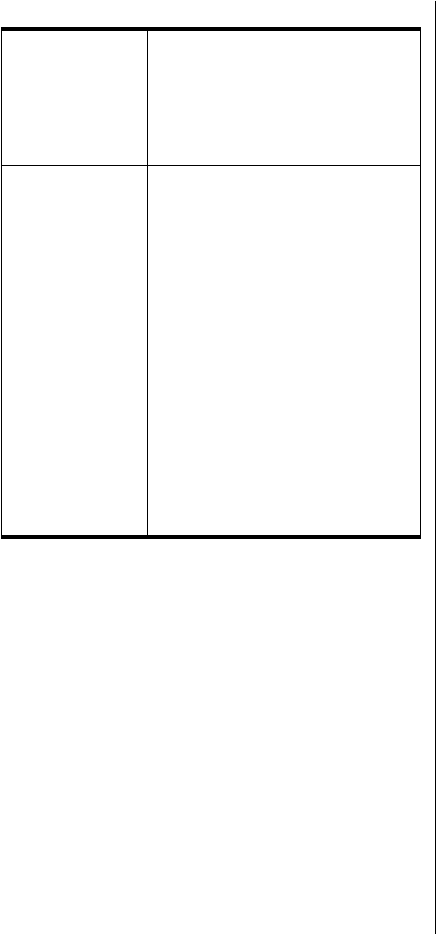
Accessing the Network 171
You can select one of the following methods:
Cellular
Mode
(CDMA/
AMPS)
This feature does not apply to CDMA/AMPS cellular
mode. You will not see this option in this mode.
Automatic Search
The phone tries to register with the
first network in the sorted list that
satisfies the GSM network search
rules (described on the previous
page). If this is successful your
phone displays the network name.
Manual Search
The phone presents you with a
sorted list of networks within range.
You select the network with which
you want to register. You will see
Search Network followed by Search?
1. Press O to generate the sorted
list.
2. Press < to select the network
you want to register with, and
then press O. You will see
Register Now?.
3. Press O to register with that
network.
When your phone has completed
registering with the network, you
will see the name of the network
and the n or l indicator.

172 Accessing the Network
1-2:
Getting to Network Selection...
1.
Press M until you see Network Selection, and then press O.
2.
Press < to scroll to one of the features described below.
You will see the feature name, followed by Select?.
r
Find a New Network
Satellite
Mode
This feature does not apply to satellite mode. You
will not see this menu option in this mode.
Cellular
Mode
(GSM)
When your phone tries to register with a network, it
excludes your current network from the search. If
the attempt fails, your phone then attempts to
reregister with the previous network.
1. Follow the steps in “1-2: Getting to Network
Selection...” to get to Find New Network, and
then press O.
If you are using the automatic method, you
will see Searching and then the name of the
network.
If you are using the manual method continue
with step 2.
2. Press < to scroll to the network you want
to register with, and then press O. You will
see Searching and then the name of the
network.
Cellular
Mode
(CDMA/
AMPS)
This feature does not apply to CDMA/AMPS cellular
mode. You will not see this option in this mode.

Selecting a Mode 173
Selecting a Mode
If you have an optional Cellular Cassette installed in your satellite
phone, you can access the cellular network as well as the satellite
network.
What You Will Learn
•selecting automatic modes
•selecting manual modes

174 Selecting a Mode
Entering the Mode Selection Menu
To enter the Mode Selection menu:
1. Press M to open the Options menu.
2. Press M to scroll forward.
or
Press < to scroll backward or forward.
3. Press O when you see:
4. Press M to scroll through the submenu.
or
Press < to scroll backward or forward
through the submenu.
12:00
Mode
Selection
View Options?
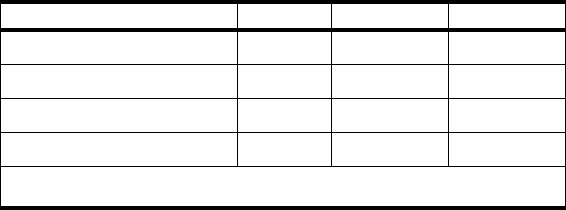
Selecting a Mode 175
Mode Selection Feature Overview
The feature selection in the Mode Selection menu varies depending on
your mode setting. The table below shows the features available in
each mode. This chapter shows you how to change modes.
Feature Satellite GSM CDMA/AMPS
Cellular Always •••
Cellular Preferred •••
Satellite Always •••
Satellite Preferred • •*•
* This feature may not be available for some GSM Cellular Cassette users. Check with
your service provider.

176 Selecting a Mode
What’s on the Mode Selection Menu?
All Modes
Satellite Always
Cellular Always
Satellite Preferred
Cellular Preferred
Mode Selection

Selecting a Mode 177
Selecting a Mode
Preferred or Automatic Modes
When you select a preferred mode, your phone
looks for that type of service first. If it cannot find
your preferred service, after about five minutes, it
switches automatically to your non-preferred
service. If the phone switches to a non-preferred
service, it checks at regular intervals (every 30
minutes) to see if your preferred service has
become available. The exact intervals that your
phone switches modes and checks for preferred
service varies depending on your SIM chip. Check
with your service provider.
Keep in Mind: The phone postpones a switch
between modes while you are in a call or are
actively using one of the phone’s features.
Always or Manual Modes
If you select an always mode, your phone always
accesses that type of service. If you become out-of-
range in that mode, the phone does not switch to
the other type of service. You have to manually
switch it to the other mode by changing the settings
in this menu.

178 Selecting a Mode
1-2: Getting to Mode Selection...
1.
Press M until you see Mode Selection, and then press O.
2.
Press < to scroll to one of the features described below.
Selecting Satellite Mode
Select Satellite Preferred Mode
If you select this feature, your phone uses your
Iridium satellite service if possible. When you are in
satellite mode, you will see the + indicator in the
lower left corner of your display.
Tip:
You must
have a
Cellular
Cassette
installed in
your phone
for this
selection to
work properly.
If you are out of range and are unable to access a
satellite, your phone switches automatically to
cellular mode. If this happens, you no longer will see
the + indicator in the lower left corner of your
display.
1. Follow the steps in “Selecting a Mode” to
get to Satellite Preferred.
2. Press O to select.
If you see the message Check Cassette or
Insert Cassette, make sure your cassette is
installed and is installed properly.
3. Press and hold C to exit the menu.
Keep in Mind: This option may not be available for
some GSM Cellular Cassette users. If you power
your phone up with a GSM Cellular Cassette
inserted, your phone may switch to Cellular
Preferred mode.

Selecting a Mode 179
Select Satellite Always Mode
If you select this feature, your system always
accesses the Iridium satellite network. When you
are in satellite mode, you will see the + indicator in
the lower left corner of your display.
1. Follow the steps in “1-2: Getting to Mode
Selection...” to get to Satellite Always.
2. Press O to select.

180 Selecting a Mode
1-2: Getting to Mode Selection...
1.
Press M until you see Mode Selection, and then press O.
2.
Press < to scroll to one of the features described below.
Selecting Cellular Mode
Select Cellular Preferred Mode
When this mode is active, your phone uses your
cellular service if possible. If you are out of range,
your phone switches to satellite mode. If this
happens, you will see the + indicator in the lower
left corner of your display.
Tip:
You must
have a
Cellular
Cassette
installed in
your phone
for these
selections to
work properly.
1. Follow the steps in “Selecting a Mode” to
get to Cellular Preferred.
2. Press O to select.
If you see the message Check Cassette or
Insert Cassette, make sure your Cellular
Cassette is installed properly.
Select Cellular Always Mode
If you select this feature, your system always
accesses the cellular network.
1. Follow the steps in “1-2: Getting to Mode
Selection...” to get to Cellular Always.
2. Press O to select.
If you see the message Check Cassette or
Insert Cassette, make sure your Cellular
Cassette is installed properly.

Timing Your Calls 181
+
Timing Your Calls
Your phone’s call meters give you a variety of options for tracking the
time you spend on the phone. You can monitor the length of individual
calls, set a timer to track monthly usage, or have the phone alert you
with tones at specific intervals.
The features described in this chapter are only available in satellite
mode.
What You Will Learn
•viewing your phone’s call timers to monitor your air-time
•setting your phone’s audible alerts to sound at intervals you
specify
•activating an in-call display of the elapsed time of your current
call
•checking the total airtime of your phone since it was
manufactured
Keep in Mind:
If you see a + next to a feature, the phone must be in
satellite mode. If you see a r next to a feature, the phone must be in
cellular mode. See “Selecting a Mode” on page 173 to change modes.

182 Timing Your Calls
Entering the Call Meters Menu
To enter the Call Meters menu:
1. Press M to open the Options menu.
2. Press M to scroll forward.
or
Press < to scroll backward or forward.
3. Press O when you see:
4. Press M to scroll through the submenu.
or
Press < to scroll backward or forward
through the submenu.
12:00
Call
Meters
View Options?
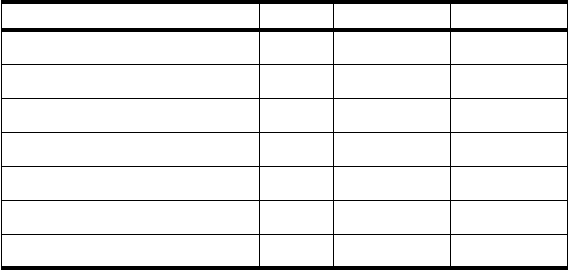
Timing Your Calls 183
Call Meters Feature Overview
The feature selection in the Call Meters menu varies depending on your
mode setting. The table below shows the features available in each
mode. See “Selecting a Mode” on page 173 for more information on
changing modes.
Feature Satellite GSM CDMA/AMPS
Reset All Timers •
Set Repetitive Alert Timer •
Set Single Alert Timer •
Show Time of Last Call •
Show Total Time of All Calls •
View In-call Timer •
View Lifetime Timer •

184 Timing Your Calls
What’s on the Call Meters Menu?
Satellite
Mode
1 This feature is availabe when the Extended Menu is active.
Cellular
Mode
This menu is not available in cellular mode.
No In-Call Display
Show Time Per Call
Single Alert Timer
Repetitive Timer
Set In-Call Display
Show Last Call
Total For All Calls
Reset All Timers
Show Call Timers
Set Audible Call Timers
Lifetime Timer1
Call Meters
On/Off
On/Off

Timing Your Calls 185
1-2-3:
Getting to Show Call Timers...
1.
Press M until you see Call Meters, and then press O.
2.
Press M until you see Show Call Timers, and then press O.
3.
Press M to scroll to one of the features described below.
+
Showing Call Timers
This submenu helps you track your airtime. Keep a
running tab of your monthly usage or view the
airtime of your most recent call.
+
Show the Time of the Last Call
Satellite
Mode
Use this feature to display the elapsed time of your
most recent call.
1. Follow the steps in “1-2-3: Getting to Show
Call Timers...” to get to Show Last Call, and
then press O to select.
You will see the airtime of the most recent call
in hours, minutes, and seconds. After several
seconds, the display returns to Show Last Call.
2. Press and hold C to exit the menu.
Cellular
Mode
This feature is not available in cellular mode.

186 Timing Your Calls
1-2-3:
Getting to Show Call Timers...
1.
Press M until you see Call Meters, and then press O.
2.
Press < to scroll to Show Call Timers, and then press O.
3.
Press < to scroll to one of the features described below.
+
Show Total Time for All Calls
Satellite
Mode
Use this feature to display your total airtime since
you last reset the Call Timer.
1. Follow the steps in “1-2-3: Getting to Show
Call Timers...” to get to Total For All Calls,
and then press O to select.
You will see the airtime accumulated (hours,
minutes, and seconds) since the timer was
last reset. After several seconds, the display
returns to Total For All Calls.
2. Press and hold C to exit the menu.
Cellular
Mode
This feature is not available in cellular mode.
+
Reset All Timers
Satellite
Mode
Reset your timers at the beginning of each billing
cycle to keep track of your spending.
1. Follow the steps in “1-2-3: Getting to Show
Call Timers...” to get to Reset All Timers, and
then press O to select. You will see
Completed. The display then returns to Reset
All Timers.
2. Press and hold C to exit the menu.
Keep in Mind: This does not reset the Lifetime
Timer described on page 190.
Cellular
Mode
This feature is not available in cellular mode.

Timing Your Calls 187
1-2-3:
Getting to Audible Call Timers...
1.
Press M until you see Call Meters, and then press O.
2.
Press < to scroll to Set Audible Call Timers, and then press
O.
3.
Press < to scroll to one of the features described below.
+
Setting Audible Call Timers
Let your phone watch the clock for you. The call
timers signal at a set time or interval with beeps only
you can hear.
+
Set the Single Alert Timer
Satellite
Mode
Use this feature to set your phone to alert you after
an elapsed time.
1. Follow the steps in “1-2-3: Getting to
Audible Call Timers...” to get to Single Alert
Timer, and then press O to select.
2. Press M to scroll to On or Off, and then press
O to select.
•If you select On, you will see Enter Seconds.
Continue with step 3.
•If you select Off, you will see Completed.
Continue with step 4.
3. Press O to accept the current setting. You
will see Seconds XXX.
or
Enter a number from 11 to 999, and then
press O. You will see Seconds XXX.
4. Press and hold C to exit the menu.
Cellular
Mode
This feature is not available in cellular mode.

188 Timing Your Calls
1-2-3:
Getting to Audible Call Timers...
1.
Press M until you see Call Meters, and then press O.
2.
Press < to scroll to Set Audible Call Timers, and then press
O.
3.
Press < to scroll to one of the features described below.
+
Set the Repetitive Timer
Satellite
Mode
Use this feature to set your phone to alert you at
specific intervals, for example every 45 seconds.
1. Follow the steps in “1-2-3: Getting to
Audible Call Timers...” to get to Repetitive
Timer, and then press O to select.
2. Press M to scroll to On or Off, then press O
to select.
•If you select On, you will see Enter Seconds.
Continue with step 3.
•If you select Off, you will see Completed.
Continue with step 4.
3. Press O to accept the current setting. You
will see Seconds XXX.
or
Enter a number from 11 to 999, and then
press O. You will see Seconds XXX.
4. Press and hold C to exit the menu.
Cellular
Mode
This feature is not available in cellular mode.

Timing Your Calls 189
1-2:
Getting to Call Meters...
1.
Press M until you see Call Meters, and then press O.
2.
Press M to scroll to one of the features described below.
+
Showing the In-Call Timer
Satellite
Mode
Use this feature to display a running clock of the
airtime elapsed while on a call.
1. Follow the steps in “1-2: Getting to Call
Meters...” to get to Set In-Call Display, and
then press O to select.
2. Press M to scroll to Show Time Per Call or No
In-Call Display, and then press O to select.
3. Press and hold C to exit the menu.
Cellular
Mode
This feature is not available in cellular mode.

190 Timing Your Calls
1-2:
Getting to Call Meters...
1.
Press M until you see Call Meters, and then press O.
2.
Press < to scroll to one of the features described below.
+
Show the Lifetime Timer
Satellite
Mode
Use this feature to show the total time of all calls for
the life of your phone.
Tip:
The
Lifetime Meter
can’t be reset.
Reset All
Timers has no
effect on this
timer.
1. Follow the steps in “1-2: Getting to Call
Meters...” to get to Lifetime Timer, and then
press O to select.
You will see the total airtime of your phone
since it was manufactured, including the
airtime spent in cellular mode.
2. Press and hold C to exit the menu.
Cellular
Mode
This feature is not available in cellular mode.
However, when you view your lifetime time in
satellite mode, the total airtime includes the airtime
spent in cellular mode.

Customizing the Menu System 191
+
Customizing the Menu System
Do you think your 9505 Portable Phone has too many features for
everyday use? You can do something about it by hiding the features
you don’t always need. Is your favorite feature not on the Quick Access
menu? It’s easy to change the defaults to your favorite features. By
customizing your menus, your favorite features are always quick and
easy to find! This chapter shows you how.
Keep in Mind:
The menu systems can only be customized in Iridium
satellite mode. See “Selecting a Mode” on page 173 for more
information.
What You Will Learn
•personalizing the Options Menu
•personalizing the Quick Access Menu
Keep in Mind:
If you see a + next to a feature, the phone must be in
satellite mode. If you see a r next to a feature, the phone must be in
cellular mode. See “Selecting a Mode” on page 173 to change modes.

192 Customizing the Menu System
+
Personalizing the Options Menu
Satellite
Mode
You can customize the Options Menu by moving
features in and out of the Extended Menu.
+
Move Menu Features
To move menu features:
1. Find the feature you want to move.
2. Press and hold O. You will see one of two
responses depending on where that menu
feature currently is. If you see:
Keep in Mind: Some features and submenus
cannot be moved. You will see Cannot Move Menu Item.
Remove From
Short Menus
(the feature is in
the Short Menu)
Press O to move the feature
to the Extended Menu. You will
see Menu Item Moved.
or
Press < scroll to Leave in
Short Menus, and then press
O to select. You will see Move
Cancelled.
Add To Short
Menus
(the feature is in
the Extended
Menu)
Press O to move the feature
to the Short Menu. You will see
Menu Item Moved.
or
Press < to scroll to Leave
in Long Menus, and then press
O to select. You will see Move
Cancelled.

Customizing the Menu System 193
+
Activate/Deactivate Extended
Menus
Use the Options Menu to activate and deactivate
Extended Menu. Activate it when you need access
to every feature. Deactivate it for everyday use.
1. Press M until you see Phone Setup, and then
press O to select.
2. Press M until you see Extended Menus, and
then press O to select.
3. Press M to scroll to either On or Off, and then
press O to select.
If you activate the Extended Menu, you will
notice that all the hidden features are now
accessible.
+
Access Hidden Features
If you want access to a feature hidden in the
Extended Menu, but don’t want to leave the
Extended Menu active, you can use this shortcut:
Press and hold M for a few seconds.
All Extended Menu features are accessible
until you exit the Options Menu.
Cellular
Mode
These features are not available in cellular mode.
You will see all of the available cellular menu options
when you are in cellular mode, regardless of
whether the Extended menu is active or not.

194 Customizing the Menu System
+
Personalizing the Quick Access Menu
Satellite
Mode
You can put any of the features listed below in the
Quick Access Menu instead of the defaults listed on
page 73.
To change the default quick access features to one
of the features listed above, choose the feature you
want to replace, and then choose the replacement.
1. Press E and then press M to scroll to the
feature you wish to change.
2. Press and hold O to access the list of
features available.
3. Press M to scroll through the list until you
find the desired feature.
4. Press O to store the displayed feature in the
new location.
You will see Completed.
Cellular
Mode
This feature is not available in cellular mode.
DFind by Location recalls Phone Book entries
by memory location numbers.
FAdd Entry to Phone stores entered
numbers in the next available phone memory
location.
TAdd Entry to SIM stores entered numbers
in the next available SIM chip location.
JPhone Mute on or off mutes the phone.
NRing Volume displays and sets the incoming
call ring tone volume.
VSwitch Memory switches One-Touch dialing
between the phone and SIM memories
depending on the current setting.
YLast Call Timer displays the duration of your
last call.

Menu Quick Reference 195
Menu Quick Reference
The Options Menu changes depending on the mode you are in. This
section provides a quick reference of the menu structure and features
for each mode.
What You Will Learn
•
Menu Quick Reference
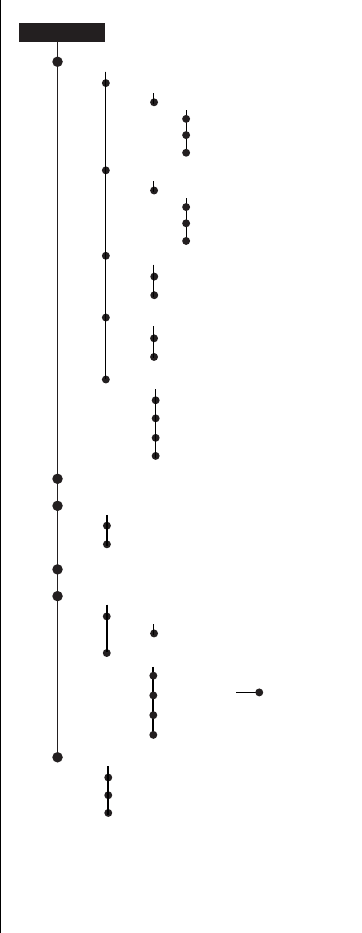
196 Menu Quick Reference
Phone Book Menu
Satellite
Mode
My Phone Number(s)
Find Entry By Name
Find Entry By Location
Add Entry
Personal Numbers
Last Ten Calls
Phone Book
Add To Phone Memory
Add To SIM Card Memory
Check Capacity
Prevent Access
Check Phone Capacity
Check SIM Capacity
No Memory Restrictions
To Phone Memory
To SIM Card Memory
To Phone & SIM Memory
Fixed Dialing
Fixed Dial List
View Fixed Dial List
Setup Fixed Dialing
On/Off
Add Entry
One-Touch Dial Settings
To Phone Memory
To SIM Card Memory
To Fixed Dial List
Show Services
Edit Entry Fixed Dial List
Enter Name:
Enter Location:
Call Number
Modify Name Or Number
Erase Name And Number
Call Number
Modify Name Or Number
Erase Name And Number
Last Calls Made
Erase All Numbers
Erase Entry

Menu Quick Reference 197
Phone Book Menu
Cellular
Mode
My Phone Number(s)
Find Entry By Name
Find Entry By Location
Add Entry
Personal Numbers
Last Ten Calls
Phone Book
Add To Phone Memory
Add To SIM Card Memory
Enter Name:
Enter Location:
Call Number
Modify Name Or Number
Erase Name And Number
Call Number
Modify Name Or Number
Erase Name And Number
Last Calls Made
Erase All Numbers
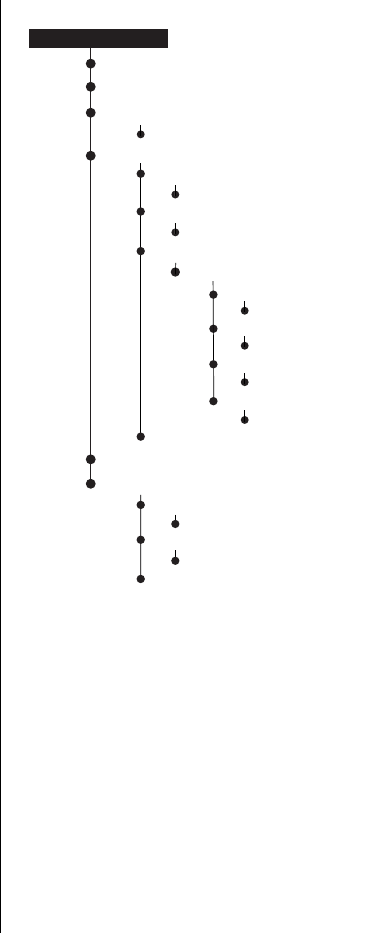
198 Menu Quick Reference
Call Related Features Menu
Satellite
Mode
Bar Outgoing Calls
Bar Incoming Calls
Change Bar Password
Call Barring1
Forward When Unavailable
Forward All Calls
Detailed Forwarding
Call Forwarding1
Call Waiting1
Show Battery Meter
Call Related Features
Forward Voice Calls
Forward All Voice Calls
If Busy
If No Answer
If Not Reachable
Cancel All Forwarding
On/Off
On/Off
Show Signal Strength
On/Off
Pending Call Drop
On/Off
On/Off
On/Off
On/Off
On/Off
On/Off
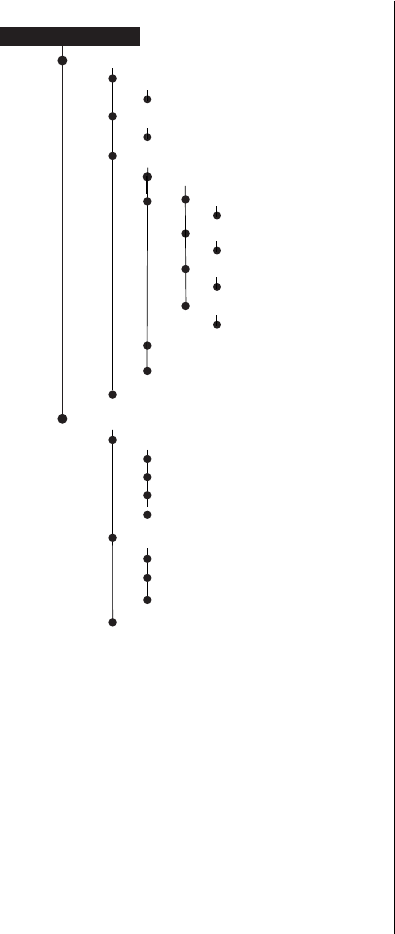
Menu Quick Reference 199
Call Related Features Menu
Cellular
Mode
(GSM)
Cellular
Mode
(CDMA/
AMPS)
This menu is not available in CDMA/AMPS cellular
mode.
Bar Outgoing Calls
Bar Incoming Calls
Change Bar Password
Call Barring1
Forward When Unavailable
Forward All Calls
Detailed Forwarding
Call Forwarding1
Call Related Features
Forward Voice Calls
Forward All Voice Calls
If Busy
If No Answer
If Not Reachable
Cancel All Forwarding
On/Off
On/Off
Forward Fax Calls
Foward Data Calls
Intl Calls
Intl Calls Except Home
All Calls
When Roaming
All Calls
On/Off
On/Off
On/Off
On/Off
On/Off
On/Off

200 Menu Quick Reference
Messages Menu
Satellite
Mode
Voicemail Number
Message Settings
Received Messages
Call Voicemail
Go to Next Message
Delete Message
Return Call
Messages Menu

Menu Quick Reference 201
Messages Menu
Cellular
Mode
(GSM)
Cellular
Mode
(CDMA/
AMPS)
This menu is not available in CDMA/AMPS cellular
mode.
Received Messages
Go to Next Message
Delete Message
Messages Menu

202 Menu Quick Reference
Phone Setup Menu
Satellite
Mode
1 This feature is available when the Extended Menu is active.
Status Review
Master Reset
Master Clear
Automatic Lock
Lock Now
Change Unlock Code
Phone Lock
Ring or Vibrate
Set Ringer Tone
Require SIM Card PIN
On/Off
Change SIM PIN Code
Change SIM PIN2 Code
New Security Code
Extended Menus
Show Time and Date1
Set Time and Date1
Set Time Format1
Language Selection1
Adjust Ring Volume
No Tones
Normal Tones
Single Tone
Select Key Pad Tones1
Phone Status1
Phone Setup
English
Türkçe
No Ring or Vibrate
Ring Only
Vibrate Only
Vibrate Then Ring
Standard Tone
High Tone
Show Home Time & Date
Show Away Time & Date
Set Home Time & Date
Set Away Time & Date
12 Hour
24 Hour
On/Off
On/Off
Change Clock
Away Time
Home Time

Menu Quick Reference 203
Phone Setup Menu
Cellular
Mode
(CDMA/
AMPS)
Cellular
Mode
(GSM)
This menu is not available in GSM cellular mode.
Phone Setup
Emergency Mapping
System Scan
Intl. Dialing Prefix
Std A/B
Scan B/A
Change Number
Scan A
Scan A/B
Scan B
Preferred SIDs
Std B/A
Home Only

204 Menu Quick Reference
Network Selection Menu
Satellite
Mode
Register Now
Network Selection

Menu Quick Reference 205
Network Selection Menu
Cellular
Mode
(GSM)
Cellular
Mode
(CDMA/
AMPS)
This menu is not available in CDMA/AMPS cellular
mode.
Network Selection
Registration Preferences
Network Search
Automatic Search
Manual Search
Find New Network
Register Now
Available Networks

206 Menu Quick Reference
Mode Selection and Call Meters Menus
Mode Selection Menu
All Modes
Call Meters Menu
Satellite
Mode
1 This feature is availabe when the Extended Menu is active.
Cellular
Mode
This menu is not available in cellular mode.
Satellite Always
Cellular Always
Satellite Preferred
Cellular Preferred
Mode Selection
No In-Call Display
Show Time Per Call
Single Alert Timer
Repetitive Timer
Set In-Call Display
Show Last Call
Total For All Calls
Reset All Timers
Show Call Timers
Set Audible Call Timers
Lifetime Timer1
Call Meters
On/Off
On/Off

207
Troubleshooting
This section tells you what to do if you experience one of the following
problems:
Problem Solution
You can’t turn the
phone’s power on.
Check the battery. Is it charged, properly fitted, and are
the contacts clean and dry?
You can’t make
calls.
•Check the antenna. Is it fully extended and rotated?
Do you have a clear view of the sky?
•Did you enter the number in international format? All
calls made from the Iridium satellite system must be
in international format (satellite mode only).
•Check the signal strength meter. If the signal is weak,
move to an open space or, if you are in a building,
move closer to a window.
•Check the Network Selection settings. Try Manual
Registration or if in GSM cellular mode try Manual
Selection, or try another network.
•Check your Operator coverage map.
•Is Restricted displayed? Check the Call Barring setting.
•Has a new SIM chip been inserted? Check that no
new restrictions have been imposed.
•Check to see if you have your Fixed Dialing list
enabled. If so, you can only make calls to numbers or
prefixes that are on the list. If you are in cellular mode
you must disable this feature. You must check and
disable the feature from satellite mode.
You can’t receive
calls.
•Check to see that your phone is powered on.
•Check the antenna. Is it fully extended and rotated?
Do you have a clear view of the sky?
•Check the signal strength. If the signal is weak, move
to an open space or, if you are in a building, move
closer to a window.
•Check the Call Forwarding and Call Barring settings.
•Check the Ringer setting. If it is off, there is no audible
ringer.
•Check to see if your Fixed Dialing list is enabled. If you
are in cellular mode you must disable it. You must
check and disable the feature from satellite mode.

208
You can’t make
international calls.
•Have you included the relevant codes? Press and hold
the 0 key to display the international dialing prefix
(+) and then enter the appropriate country code
followed by the phone number.
•If you are in cellular mode, some service providers
automatically bar the ability to make international calls.
Contact your service provider.
•Are you in a CDMA/AMPS cellular mode? You must
map the international access code in order to use the
0 key to display the international dialing prefix (+).
Your phone won’t
unlock.
•Have you inserted a new SIM chip? Enter the new PIN
code.
•Do you have a replacement phone? Enter the default
phone unlock code —1234.
•Have you forgotten the unlock code?
Press M to
change the unlock code (you need your security code).
Your PIN is
blocked.
Enter the PIN unblocking code or contact your service
provider.
Your PIN2 is
blocked.
Enter the PIN2 unblocking code or contact your service
provider.
Your SIM chip
won’t work.
•Is the chip inserted the correct way?
•Is the chip visibly damaged or scratched? Return the
chip to your service provider.
•Check the SIM and phone contacts. If they are dirty,
clean them with an antistatic cloth.
You can’t access
your messages.
•Are you in the correct mode? If you do not have a
GSM cellular cassette installed, you must be in
satellite mode to access your messages.
•Is your GSM Cellular Cassette inserted? In order to
access messages from cellular mode, you must have
a GSM Cellular Cassette inserted.
You can’t cancel
Call Forwarding or
Call Barring.
Wait until you are in an area with good network coverage
and try again.
The o symbol
is flashing.
There is not enough memory available to store another
message. Use the Messages menu to delete one or
more messages.
Problem Solution

209
The battery won’t
charge.
•Check the charger. Is it properly connected? Are its
contacts clean and dry?
•Check the battery contacts. Are they clean and dry?
•Check the battery temperature. If it is warm, let it cool
before recharging.
•Is it an old battery? Battery performance declines after
several years use. Replace the battery.
•Make sure you have a Motorola approved battery
installed. If you see Invalid Batt. in the display, you
will not be able to charge this battery.
The battery drains
faster than
normal.
•Are you in an area of variable coverage? This uses
extra battery power.
•Is your antenna fully rotated and extended? Do you
have a clear view of the sky? This helps use less
battery power.
•Is it a new battery? A new battery needs two to three
charge/discharge cycles to attain normal performance.
•Is it an old battery? Battery performance declines after
several years of use. Replace the battery.
•Is it a battery that hasn’t been completely discharged?
Allow the battery to fully discharge (until the phone
turns itself off) and then charge the battery overnight.
•Are you using your phone in extreme temperatures?
At extreme hot or cold temperatures, battery
performance is significantly reduced.
You find your
phone becoming
warm during use.
You may notice this during long calls or during charging.
The heat is produced by the electronic components
within your phone and is quite normal.
Your phone has
your SIM chip
inside but the
display says:
•Check Card or Insert Card.
Check that the SIM chip has been inserted correctly.
The contacts of the SIM chip may be dirty. Turn the
phone off, remove the SIM chip and rub the gold
contacts on the chip with a clean cloth. Replace the
chip in the phone.
•Blocked or Bad Card See Supplier.
Please contact your service provider.
Your phone has a
Cellular Cassette
installed but the
display says:
Check Cassette or Insert Cassette.
Check that the Cellular Cassette has been inserted
correctly.
Problem Solution

210
You do not have a
Cellular Cassette
and your phone
says Insert
Cassette
Make sure you have the correct mode settings selected.
You are either in Cellular Always mode or a Preferred
mode.
You find your
phone’s prompts
in a language
other than your
own.
Press M, 2, 6. This routes you directly to the
language selection submenu. Press < until you see
your preferred language. Press O to select. You must be
in satellite mode to do this.
Problem Solution

211
Glossary
A
accessory connector port A
socket on the bottom of the
phone where you can attach
accessories such as a travel
charger, desktop charger, auto
accessory adapter or data
accessories.
airtime The amount of time you
spend using a cellular or satellite
system. Especially, the time
between successfully placing a
call and terminating a call.
AMPS Advanced Mobile Phone
Service. An analog network
protocol.
antenna The devices on your
phone that send and receive
satellite or cellular signals.
Auto Accessory Adapter An
accessory device that allows you
to power your phone and charge
any attached batteries from a
car’s cigarette lighter.
C
CDMA Code Division Multiple
Access. A digital technology.
cellular A wireless personal
telecommunications system
which uses terrestrial base
station controllers.
cellular carrier One of several
competing organizations in a
given geographic area that owns
and operates a cellular system.
Cellular Cassette An optional
module that is inserted into the
portable phone and gives it
access to the cellular system.
cellular mode When your
phone is in this mode it is
accessing the cellular system.
You must have the appropriate
cellular cassette installed.
cellular system The cellular
equipment in a given geographic
area that relays signals to and
from individual cellular
telephones and the landline
telephone system.
clear-line-of sight In order for
your phone to communicate to
the satellite network, your
antenna must have a clear view
of the sky.
D
default A feature’s original
setting as pre-programmed in the
factory.
DTMF See Dual Tone Multi-
Frequency tones.
dual mode phone A phone
designed to operate on a cellular
network and the Iridium satellite
network.
212
Dual Tone Multi-Frequency
Tones The tones that your
phone transmits when you press
a key on the keypad. These
tones are used to access
automated calling systems such
as voicemail.
E
Emergency Call This feature
allows you to make an
emergency call even if your
phone is locked by dialing 112.
F
fringe area The outermost
range of a cellular system or the
Iridium satellite system where
signals are weak.
G
GSM Global System for Mobile
Communications—A digital
network protocol.
H
home system The local cellular
system or satellite network where
you obtain your wireless service.
home type system A cellular/
satellite system of the same type
as your local system. See also
non-home type system, and
system type.
I
In-Call Menu The menu that
appears when you press M
during a call. It allows you to
access features like call holding.
indicator A light or icon on your
phone that gives you information
about your phone’s status.
Iridium System A system of 66
satellites that offer global
communication.
L
landline The telephone system
used for conventional office and
home phones.
lock Use this feature to prevent
unauthorized access to your
satellite telephone.
lock code A four-digit code
used to unlock a locked phone.
M
memory location A space in
the internal Phone Book (both
Phone Memory and SIM memory)
where you can store a telephone
number and a name. Each of the
Phone’s memory locations can
hold up to 32 digits and 16
letters. The SIM chip memory
can hold up to 20 digits and 16
letters.
menu feature Any feature that
can be accessed through the
menu system.
menu system The hierarchical
arrangement of your phone’s
features that allows for quick,
intuitive access.
message A feature that allows
the user to view pager-like
alphanumeric messages.
213
N
name directory An
alphabetical list of the names
and telephone numbers you
have stored into your phone’s
internal Phone Book.
NAMPS Narrow-Band AMPS.
An analog technology.
non-home type system A
system type different from your
home system. See also home
type system and system type.
non-wireline A cellular carrier
that is not the same company as
the conventional telephone
company.
O
One-Touch Dialing To use this
feature, press and hold a number
on the keypad, 1 through
9 and your call is placed.
Options Menu The first level of
the menu system hierarchy,
which contains the six main
feature menus: Phone Book, Call-
Related Features, Messages,
Phone Setup, Network Selection,
Mode Selection, Call Meters.
P
pause A special character that
tells your phone to “pause” or
wait for your input before sending
a group of numbers stored in
memory.
PIN or PIN2 Code Personal
Identification Network Code. A
private numeric password that
allows you to access your SIM
chip and some network services.
Portable Dock An accessory
for the portable phone that
converts it to a speaker phone. It
runs off either AC power or
auxiliary batteries.
prompt A message requesting
input.
Q
Quick Access Menu A set of
features that is activated by
pressing E and a digit key
(1 to 9).
R
roam To use a cellular system
outside of your home system,
usually when you travel beyond
the range of your home system. If
you are roaming you see the l
indicator (cellular mode only).
S
satellite mode When you are in
this mode you are accessing the
Iridium satellite system. You see
the + indicator.
scroll To move backward or
forward through a list; for
example: to move backward or
forward through the menu system
or the name directory.
security code A six-digit code
used to access sensitive
features.
service provider A company
affiliated with a cellular or satellite
carrier that provides cellular/
satellite service to its customers.
SID See System Identification.
214
signal The radio waves that
carry information between your
phone and the satellite or cellular
system.
SMS Short Messaging
Services.
standby-time The amount of
time that your phone is left
powered on to receive calls.
status indicator See indicator.
submenu A secondary level of
your phone’s menu system
hierarchy.
System Identification An up to
five-digit number that identifies
your home cellular system. An
even number indicates a wireline
system and an odd number
indicates a non-wireline system.
system mode A setting that
determines the system type that
your cellular phone accesses
(CDMA/AMPS cellular mode).
system type A designation that
indicates one of two competing
cellular carriers in a given
geographic area. The non-
wireline carriers operate on “A”
block frequencies and the
wireline carriers operate on “B”
block frequencies.
T
talk-time The amount of time
that you spend talking on the
phone.
TDMA Time Division Multiple
Access. A digital technology.
toggle To switch between two
possible options; for example: on
vs. off.
Travel Charger An accessory
device that allows you to power
your phone and charge any
attached batteries from a wall
outlet.
V
volume keys Located on the
side of your phone, the upper
and lower volume keys are used
to adjust ringer and earpiece
volume.
W
wireline system A cellular
carrier that is the same company
as the conventional telephone
company.

215
Index
Symbols
* character 51
+ character 50, 51
Ü character 51, 85
A
AC travel charger 21
accessing hidden features 193
accessing the network 163
accessories 21
lanyard wrist strap 25
accessory connector port 17
defined 211
illustration 15
activating call waiting 118
adapter
antenna 25
Auto Accessory 23
StarTAC 24
adding an entry to the Phone
Book 81–82
dedicated keys 82
Options menu 81
Overwrite? message 82
Range XXX-XX message 82
Stored XXX message 82
Adjust Ring feature 73
adjusting ringer volume 140
adjusting volume
earpiece 58
ringer 59
airbag 10
aircraft 10
airtime
defined 211
alphanumeric keypad 15
AMPS
defined 211
Answer? 64
answering a call 55
antenna 16
adapter 25
care 7
cellular cassette 15
correct position 48
defined 211
extending 48
inserting 28
left detente 48
removing 28
right detente 48
attaching battery covers 31
Auto Accessory Adapter 23
defined 211
automatic modes 177
automatic redial 51
B
backlight 47
Bad Card See Supplier message
46
barring calls
incoming 121
outgoing 119
batteries 24
battery charge indicator 19
battery covers 31
battery meter 38
charging 38
check power status 38
drains too fast 209
full charge 38
inserting 32
low battery warning 38
low charge 38
messages 39
removing 42
safety considerations 8
216
showing the battery meter 38
using internal charger 36
won’t charge 209
Battery
installing
Invalid Batt message 32
battery
Battery Meter feature 73
cautions 40
charging 36–??, 36, ??–37
Charging Battery message 37,
39, 115
charging tips 40
compartment 15
disposing of 40
Fast Charge Completed message
39, 115
inserting 32
Invalid Batt. message 39
level indicator 15
messages 115
Not Available message 39, 115
removing 34
storing 40
tips 40
viewing battery meter 115
battery covers 31
attaching 31
removing 31
battery level indicator 15
battery meter
viewing 115
Battery Meter feature 73
Blocked message 46
! Blocked message 46
Busy Try Later message 50, 64,
67, 71
C
call
answering 55
ending 53
placing 49–52
receiving 55–57
Call Answer? 55
call barring 119–122
barr password
changing 122
entering 119–122
incoming calls 121
outgoing calls 119
Call Failed 55
Call Failed message 56
call forwarding
all calls 109
cancelling 114
data 113
detailed 111–113
fax 113
voice 111–112
when unavailable 107
call holding 66
ending both calls 66
ending current call 66
ending held call 67
making a new call 66
messages 67
switching between calls 66
Call Holding message 66
Call Meters menu 181, 182, 206
Call Related Features menu 103–
122, 198
Bar Incoming Calls feature 121
Bar Outgoing Calls feature 119
Call Barring feature 119–122
Call Forwarding feature 107–
114
Call Waiting feature 118
Cancel All Forwarding feature
114
Change Bar Password feature
122
Detailed Forwarding feature
111–113
diagram 105
entering 104
Forward All Calls feature 109
217
Forward When Unavailable
feature 107
Pending Call Drop feature 117
Show Battery Meter feature
115
Show Signal Strength feature
116
call timers
audible 187
lifetime 190
repetitive 188
resetting all 186
showing all calls 186
showing last call 185
single alert 187
viewing in-call 189
Call Voicemail feature 73
call waiting
accepting a waiting call 64
activating 118
cellular mode 65
ending current call 64
messages 64
rejecting waiting call 64
satellite mode 64
Call Waiting message 64
Call? 49
calling a number in a message
52
calling an entry in the Phone
Book 90
calling features 103–122
Calling message 49
can’t make calls 207
Cannot Hold Second Call message
64, 67
Cassette Removed message 42
CDMA
defined 211
cellular
defined 211
cellular carrier
defined 211
Cellular Cassette 26, 173
Cassette Removed message 42
connector 17
defined 211
inserting 41
messages 209
removing 42
cellular cassette
antenna 15
connector 15
cellular mode
defined 211
selecting 180
cellular system
defined 211
changing a Phone Book entry to
a similar number 87
changing the call barring
password 122
charger
AC travel 21
desktop 22
solar 22
Charging Battery message 37, 39,
115
charging the battery 36–??, 36,
??–37
Check Card message 46
check mark 20
Check Signal feature 73
Check Signal message 46
checking battery power status
38
checking Phone Book capacity
91
Checking Signal... message 116
clear key 16
clearing stored information 157
clear-line-of-sight 16
defined 211
clock 15
codes
phone unlock
Enter Phone Unlock Code
message 46
218
security
default 92
entering 92
SIM card PIN2 ??–96
SIM chip PIN 46
SIM chip PIN2 93–??
Completed message 71
Connected 55
Connected message 49
correcting a Phone Book entry
83
current state of service indicator
18
customizing
Options Menu 192
phone features 135
Quick Access Menu 194
D
date
setting 152
viewing 150
default
defined 211
Desktop Charger 22
desktop charger 36
detentes, antenna 48
dialing
0 51
* character 51
+ character 51
Ü character 51, 85
number from the Phone Book
52
number with pauses 51, 86
phone number 49
PINs 51
special characters 51
supplementary service
numbers 51
display 15
* character 51
+ character 50, 51
Ü character 51, 85
cold temperatures and 17
icons 71, 73
indicators 15, 19, 45
defined 19–20
messages 71
questions in 71
standby mode 47
volume level 58
disposing of battery 40
driving 8
DTMF
defined 211
dual mode phone
defined 211
Dual Tone Multi-Frequency Tones
defined 212
E
earpiece
adjusting volume 58
illustration 15
electronic devices 8–9
emergency call
defined 212
placing 52
setup 158
Emergency Calling message 52
End Active & Held Call message
66, 74
End Active Call message 64, 74
End Call? 49, 67
End Held Call message 67, 74
ending a call 53, 57
Enter Name message 71
Enter Phone Unlock Code message
46
Enter PIN message 46, 71
Enter PIN2 message 93–96
entering characters in the Phone
Book 83
entering menus
In-Call menu 74
Options menu 70
Quick Access menu 72
219
entering names in the Phone
Book 83–84
entering pauses in numbers 85
erasing a Phone Book entry 90
exiting menus and menu features
70
extended menus 193
accessing hidden features 193
activating 153, 193
Call Barring 119
Detailed Call Forwarding 111
F
factory defaults 156
Failed message 71
Fast Charge Completed message
39, 115
Find Name feature 73
finding a Phone Book entry 88–
89
by location 89
by name 88
fixed dial list
defined 93
one-touch dialing 101
viewing 97
Fixed Dialing
erasing an entry 95
fixed dialing 93–97
activating 93
adding an entry 94
editing an entry 96
viewing fixed dial list 97
flash 108
Flash Options message 65, 68,
74, 108
flash.
See
phone flash
Forward On/Off feature 73
forwarding calls
all calls 109
cancelling 114
data 113
detailed 111–113
fax 113
voice 111–112
when unavailable 107
fringe area
defined 212
function keys
defined 212
G
getting started 27
GSM
defined 212
GSM network selection
find new network 172
scan available networks 169
search method 170
automatic 171
manual 171
GSM SIM chip
using with satellite phone 29
guide overview 12
H
hearing aids 9
hidden features 193
Hold Call message 66, 74
Hold Failed message 64, 67
holding a call 66
ending both calls 66
ending current call 66
ending held call 67
making a new call 66
messages 67
switching between calls 66
holding the phone 48
home system
defined 212
home system indicator 20, 45
home type system
defined 212
I
icons
Options menu 71
220
Quick Access menu 20, 73
Quick Access Menu custom
icons 194
in use indicator 20
In-Call Menu
defined 212
In-Call menu 61–67, 74
call muting 63
call waiting 64–65
defined 74
End Active & Held Call message
74
End Active Call message 74
End Held Call message 74
entering 74
Hold Call message 74
Make New Call message 74
menu features 74
placing a call on hold 66
Reconnect Held Call message
74
Reject Call Waiting message
74
Turn Mute on or off message
63, 74
in-call timer 189
incoming calls
barring 121
indicators 212
battery charge 19
battery level 15
check mark 20
current state of service 18
display 15
home system 20, 45
in use 20
message 19
no service 20, 45
Quick Access menu 20
real time clock 19
Roam symbol 20
scroll bar 20
signal strength 19
Insert Card message 46
inserting antenna 28
inserting the battery 32
inserting the Cellular Cassette 41
inserting the SIM chip 30
Installing battery
Invalid Batt message 32
international dialing 50
dialing + character 51
international prefix 159
setup 159
Invalid Account message 46
Invalid Batt message 32
Invalid Batt. message 39
Iridium System
defined 212
K
key presses 12
keypad tones
selecting 143
keys
alphanumeric keypad 15
clear 16
memory recall 16, 89
memory store 16
menu 16
message 16
navigating the menu system
70
OK 16
power 16
quick access 16
scroll 16
special keys 17
volume 15, 16, 59, 214
L
landline
defined 212
language
setting 154
lanyard wrist strap 25
last ten numbers dialed
viewing 98
221
LCD.
See
Liquid Crystal Display
lifetime timer 190
Liquid Crystal Display
cold temperatures and 17
indicators 19
defined 19–20
lock
defined 212
lock code
defined 212
Lock Now feature 73
locking phone
automatically 144
instantly 144
low battery warning 38
M
Make New Call message 66, 74
making a call 49–52
automatic redial 51
calling a number in a message
52
dialing a number from the
Phone Book 52
dialing a number with pauses
51
dialing a phone number 49
dialing special characters 51
emergency call 52
international dialing 50
last ten numbers dialed 98
one-touch dialing 101
redialing the last number 51
managing messages 130
managing the phone book 75–
102
manual modes 180
master clear 157
master reset 156
memory
phone 79
SIM chip 79
memory location
defined 212
memory recall key
defined 16
using 89
memory store key 16
menu
Call Meters 182, 206
Call Related Features 198
diagram 105
entering 104
feature
defined 212
Messages 124, 200
Mode Selection 206
Network 164
Network Selection 163, 204
Phone Book 196
diagram 77
entering 76
Phone Setup 138, 202
quick reference 195
Selecting a Mode 173
system
defined 212
menu key 16
menus
defined 69
personalized menus 192
using 69–74
message (SMS)
defined 212
message indicator
defined 19
flashing 19
message key 16
messages 12, 123
battery 39
deleting 133
managing 130
notification 130
reading 133
receiving 57
returning calls 134
storing 130, 133
text 131
222
what’s in one 131
Messages menu 124, 200
microphone 15
mode selection
automatic 177
cellular always 178
cellular preferred 180
manual 180
satellite 168
satellite always 179
satellite preferred 178
Mode Selection menu 174, 206
modifying a Phone Book entry 90
modifying your SIM chip phone
number(s) 100
multiple key answer 55
Mute message 63
muting
phone 63
N
name directory
defined 213
NAMPS
defined 213
navigating the menu system 70
network features
call holding 66
call waiting 64–65
Detailed Call Forwarding 111–
113
Forward All Calls 109
Forward When Unavailable
107
Network Selection menu 164,
204
networks
find new network 172
scan available 169
search method 170
automatic 171
manual 171
no service indicator 20, 45
non-home type system
defined 213
non-wireline
defined 213
Not Available message 39, 115
notification messages
fax 131
voicemail 131
O
OK key 16
one-touch dialing
defined 213
one-touch dialing
defined 101
frequently called numbers and
79
setting up 101
using 101
Options Menu
customizing 192
defined 213
extended menus 193
moving features 192
Options menu 70–71
Busy Try Later message 71
Completed message 71
defined 70
Enter Name message 71
Enter PIN message 71
entering 70
exiting 70
Failed message 71
messages and icons 71
navigating 70
questions 71
Quit? 71
scrolling 70
Select? 71
selecting options and
submenus 70
View Options? 71
Orient Antenna Call Attempt 56
Orient Antenna Call Attempt
message 55
223
outgoing calls
barring 119
Overwrite? 82
P
password, call barring 119–122
pause
defined 213
pause dialing 86
dialing Ü character 51, 85
pending call drop signal
activating 117
deactivating 117
defined 117
personal mailbox 57
phone
answering a call 55
ending a call 53
last ten numbers dialed
viewing 98
messages at power-on 45
muting 63
placing a call 49–52
receiving a call 55–57
security code
entering 92
service phone numbers 102
turning on and off 45
volume level display 58
Phone Book 75–102
adding an entry 81–82
dedicated keys 82
Options menu 81
Overwrite? message 82
Range XXX-XX message 82
Stored XXX message 82
adding numbers
dedicated keys 82
calling an entry 90
changing an entry to a similar
number 87
character set 84
checking capacity 91
correcting an entry 83
dialing a phone number 52
entering characters 83
entering names 83–84
entering numbers 81–82
Options menu 81
erasing a name and number
90
finding an entry by location 89
dedicated keys 89
Options menu 89
finding an entry by name 88
Fixed Dialing
erasing an entry 95
fixed dialing 93–97
activating 93
adding an entry 94
editing an entry 96
viewing fixed dial list 97
Last Ten Calls feature 98
menu diagram 77
modifying a name or number
90
My Phone Number(s) feature
99
One-Touch Dial Setting feature
101
one-touch dialing 101
organizing 79
pauses in numbers 85
dialing numbers with 86
entering 85
phone memory 79
phone numbers
grouping 80
security issues 80
storing 79
preventing access 92
Restricted message 92
Show Services feature 102
SIM chip memory 79
storage capacities 79
storing names and numbers
81–84
using prefixes 87
224
viewing the last ten numbers
dialed 98
Phone Book Menu 196
Phone Book menu 75–102
diagram 77
entering 76
phone flash 108
defined 68
sending 65, 68
phone memory
checking capacity 91
one-touch dialing 101
storage capacities 79
phone number
modifying your own 100
using pauses in 85
using prefixes 87
viewing your own 99
Phone Setup menu 138, 202
PIN code
Blocked message 46
changing 147
defined 213
Enter PIN message 46
entering 46
unblocking 147
PIN2 code
! Blocked message 46
changing 148
Enter PIN2 message 93–96
entering 93–96
is blocked 208
unblocking 149
placing a call 49–52
automatic redial 51
calling a number in a message
52
dialing a number from the
Phone Book 52
dialing a number with pauses
51
dialing a phone number 49
dialing special characters 51
emergency call 52
international dialing 50
last ten numbers dialed 98
one-touch dialing 101
redialing the last number 51
placing calls
embedded in a message 134
Please Try Later message 50
Portable Dock
defined 213
postscripting 87
power
turning on and off 45
power key 16
power-on messages 45
prefixes
using with phone numbers 87
preventing access to the Phone
Book 92
privacy 63
prompt
defined 213
prompts, defined 12
protecting SIM chip with a PIN
code 146
Q
quick access key 16
Quick Access Menu
custom icons 194
customizing 194
defined 213
Quick Access menu 72–73
activating a menu feature 72
Adjust Ring feature 73
Batter Meter feature 73
Call Voicemail feature 73
Check Signal feature 73
default settings 73
defined 72
Find Name feature 73
Forward On/Off feature 73
icons 20, 73
Lock Now feature 73
Read Messages feature 73
225
Register Now feature 73
scrolling 72
using 72
Quit? 71
R
Range XXX-XX message 82
Read Messages feature 73
real time clock 19
receiving a call 55–57
answering 55
unanswered calls 57
receiving messages 57
Reconnect Failed message 64, 67
Reconnect Held Call message 74
Reconnect? 66
Redial Failed message 51
Redial? 50, 51
redialing the last number called
51
Register Now feature 73
registering with satellite network
168
Registering... message 45, 49
Reject Call Waiting message 74
removing antenna 28
removing battery covers 31
removing the battery 34
removing the Cellular Cassette
42
removing the SIM chip 30
repetitive timer 188
resetting options to defaults 156
Restricted Area message 50
Restricted message 92
restricting access to the SIM chip
93
restricting calls 119–122
incoming calls 121
outgoing calls 119
restricting phone use 93–97
ringer
adjusting volume 59
ringer tone
setting 142
roam
defined 213
Roam symbol 20
Rotate and Extend Antenna
message 45, 50
Rotate Antenna 48
Rotate Antenna Call Attempt
message 56
Rotate Antenna Registering...
message 45
S
safety covers 31
safety information 7–10
satellite antenna
antenna
satellite 15
satellite mode 168, 179
defined 213
selecting 178
satellite network
registering 168
scroll
defined 213
scroll bar 20
scroll keys 16
scrolling
Options menu 70
Quick Access menu 72
Searching... message 45
security code
changing 149
default 92
defined 213
entering 92
Select? 71
selecting a mode 173
selecting menu options 70
Send Digits? message 86
send flash 108
Send Flash? message 65, 68, 108
service phone numbers 102
service provider
226
defined 213
setting phone to ring or vibrate
141
settings
clearing 157
reviewing 155
Show Services feature 102
SID.
See
System ID number
signal
defined 214
signal strength indicator 15, 19
viewing 116
SIM chip
Bad Card See Supplier message
46
Blocked message 46
! Blocked message 46
changing PIN code 147
changing PIN2 code 148
Check Card message 46
deactivating PIN code 146
defined 29
displaying phone number of
54
fixed dial list 93
GSM
using with satellite phone 29
Insert Card message 46
inserting 30
insertion direction 30
messages 209
modifying your phone
number(s) 100
phone number security and 80
PIN code
Enter PIN message 46
entering 46
PIN2 code
Enter PIN2 message 93–96
entering 93–96
precautions 29, 30
protecting 146
removing 30
restricting access to 93
unblock PIN2 code 149
unblocking PIN code 147
viewing your phone number(s)
99
SIM chip memory
checking capacity 91
one-touch dialing 101
storage capacities 79
single alert timer 187
SMS
defined 214
Solar Charger 22
special characters 51
special keys 15
standby 47
standby time 24
defined 214
StarTAC Adapter 24
status indicator
defined 214
Stored XXX message 82
storing batteries 40
storing names and numbers 81–
84
submenus
defined 214
submenus, defined 69
supplementary service numbers
51
Switch? 66
switching between numbers 162
symbols 12
System ID number
defined 161, 214
system mode
defined 214
selecting 160
system scan 160
method 160
system scan settings 161
system type
defined 214
227
T
talk-time
defined 214
TDMA
defined 214
time
setting 152
setting format 151
viewing 150
timing calls 181
tips, defined 13
toggle
defined 214
Travel Charger
defined 214
troubleshooting 207
battery drains fast 209
battery won’t charge 209
can’t cancel Call Forwarding or
Barring 208
can’t make international call
208
can’t receive calls 207
can’t turn power on 207
Cellular Cassette messages
209
message symbol is flashing
208
phone won’t unlock 208
PIN is blocked 208
SIM chip messages 209
SIM chip won’t work 208
wrong language in the display
210
your phone is hot 209
Trying message 64, 67
Turn Mute on or off message 63,
74
turning phone power on and off
45
turning the SIM chip PIN On or
Off 146
2 Calls message 66
U
Unanswered Call message 57
unanswered calls 57
unblock PIN code 147
unblocking SIM PIN2 code 149
unconditional call forwarding 73
unlock code
changing 145
unlocking phone 145
using the internal charger 36
V
vibrate 141
on wakeup 45
View Options? 71
viewing service phone numbers
102
viewing the last ten numbers
dialed 98
viewing your SIM chip phone
number(s) 99
voicemail
call forwarding when
unavailable 107
checking 128
detailed call forwarding 111–
113
forward all calls 109
storing number 129
volume
bar graph display 58
control keys 15
earpiece 58
ringer 59, 140
volume keys
defined 16, 214
using 58
volume level display 58
W
wakeup tone 45
wireline system
defined 214
228

229
Patent Information
Manufactured under one or more of the following U.S. patents:
4121218
4138681
4193036
4254382
4302845
4312074
4327319
4329666
4369516
4369522
4378603
4390963
D269873
4398265
4400584
4400585
D270835
D271491
Re.31470
4431977
4434461
4455534
4462098
D275951
4484153
4485486
4486624
D276809
4491972
D277667
4504834
D278708
4523155
4546329
4550426
4551696
4564821
D282169
4571595
4573017
4574243
4585957
4602218
D284759
D285439
4616314
4617520
D286778
4626309
4628529
4629829
4630304
4630305
4633141
4636593
4636741
D288432
4648125
4649543
D288683
4654655
D289156
4662691
4667333
4668917
4670747
4672502
4680787
4681476
4683585
4692726
4704588
D292578
4706036
D292920
4710724
4711361
4715063
4716319
4716391
4723305
D294257
4727306
4727583
4730195
4734635
4736277
4737976
4740794
4741018
4741034
4742562
D295627
4746242
D295973
D295975
4751737
D296187
4761621
4764737
D297734
D297735
4777564
Re.32768
D299136
4797929
4798975
4800348
4802236
4809356
4811377
4811404
4827226
4827507
4829274
4837534
D301476
4843621
4845772
D302015
4851966
4868576
4870686
D303656
4876552
4879533
D305427
4896124
4897873
D305717
4904549
4905288
4905301
D306293
D306441
D306594
4912602
4918732
4922178
4945570
4954796
4959851
4963812
4963843
4965537
4972355
4972432
4972455
4975808
4984290
D314173
D315330
D315346
D315543
D315559
D315565
5004992
D315907
5008925
D316417
D316859
5017856
5018188
5020091
5020092
5020093
5028083
5028859
5029044
5029233
5031028
5036532
5053924
5057762
D320780
5059885
5060294
D322783
D322955
5081674
5083304
D324024
D324388
5095503
D325028
D325583
5109536
D325915
5113436
5117450
5121047
5122480
5122722
D327061
5128834
D328302
5142551
5142696
5146620
5148471
5148473
5148961
5150359
5150384
5152006
5157693
5163159
5164652
5166596
5175759
5175874
D332261
5182749
D332785
5185566
5187809
5193223
5195106
5195108
5201069
5204977
5210793
5214675
5222104
5222251
D337332
5230007
5230093
5233633
5235492
5237257
5239127
5241545
5241548
5241650
5241693
5242767
D339582
5249302
5251331
D340710
5260988
5261119
5262710
5263052
5276707
5278994
D343173
5280637
D344087
5287553
5287555
5287556
D344511
5301365
5321847
D348880
5349588
5359696
5361400
5363071
5365549
D352497
5366826
D353131
D353361
5375143
5375258
5379324
D354055
D354062
5384825
D356084
5402447
5406146
5406562
D357224
D357457
5410741
D357680
D357681
5428836
D359734
D359735
D359959
5432017
D360632
5438684
D361070
5442680
5446763
5448763
5448771
5453997
D362840
5457744
5459640
5463646
5465412
5469177
5475752
D365094
D365817
5486843
5487184
5488335
5488649
D366872
5493198
5493714
5497126
5497382
D367640
5499394
5506490
D368696
5510693
5511235
D369162
5513078
D369359
5519303
5519346
5524276
5524278
D370463
5530922
5542116
5544250
D372481
5546275
5546380
D372896
5551078
5559471
D374424
D374872
5572193
5574976
5577268
D375732
D375733
D375734
D375932
D375952
D376127
5588041
5589796
5590177
5594778
5594951
D377792
D377934
5604050
5606730
D378366
5613229
5613863
5615233
5621763
Other patents pending.
230